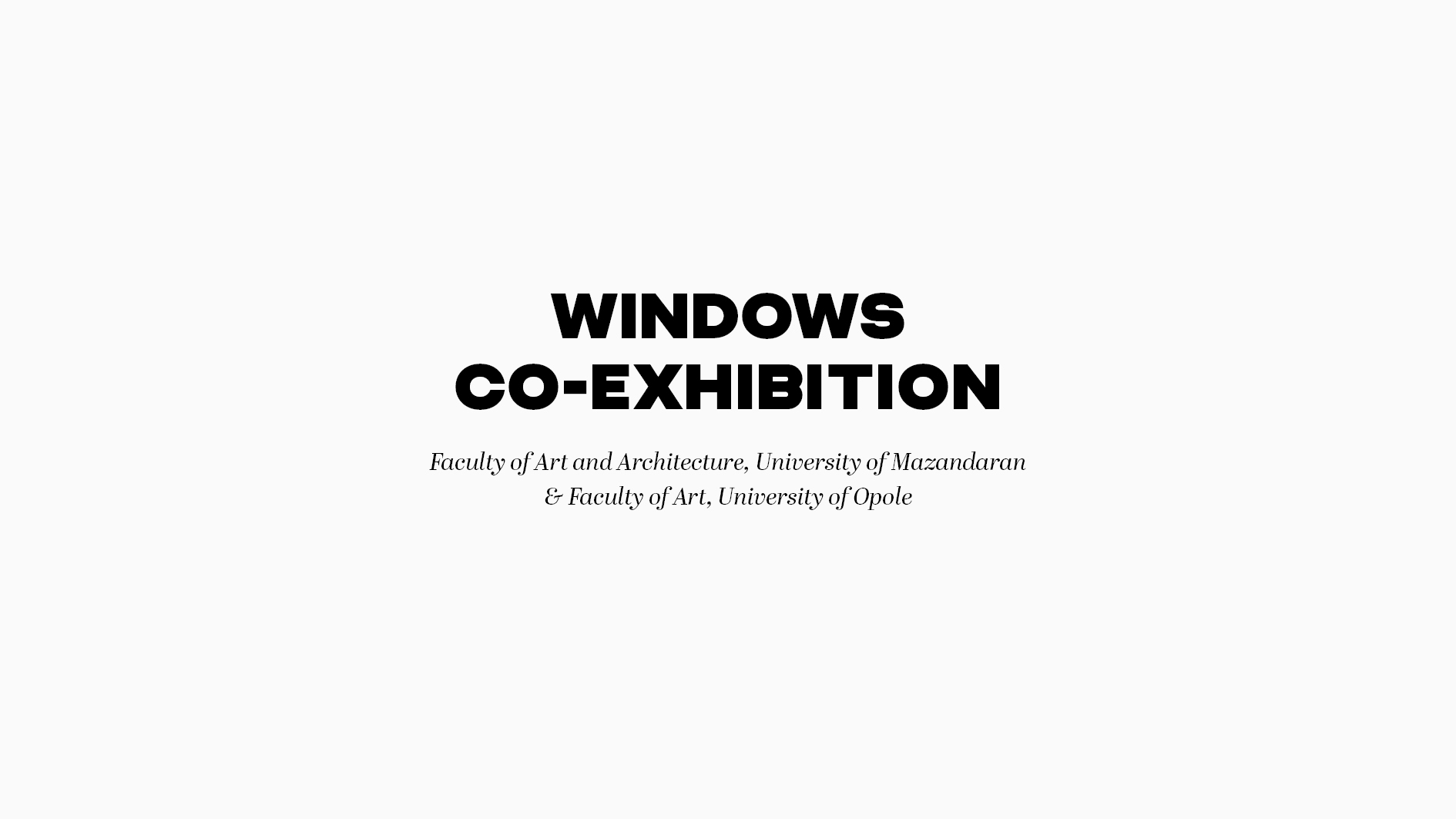
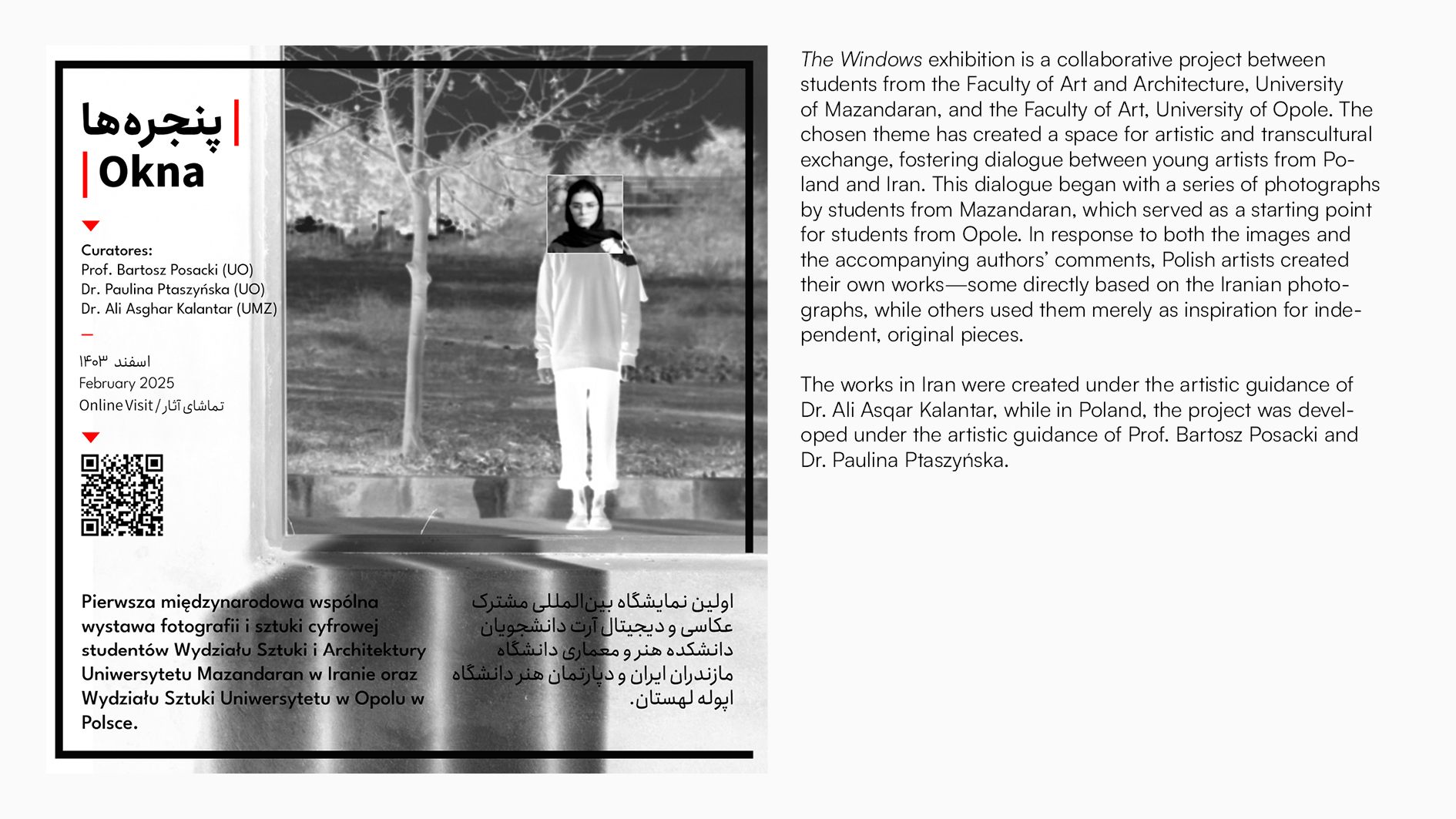
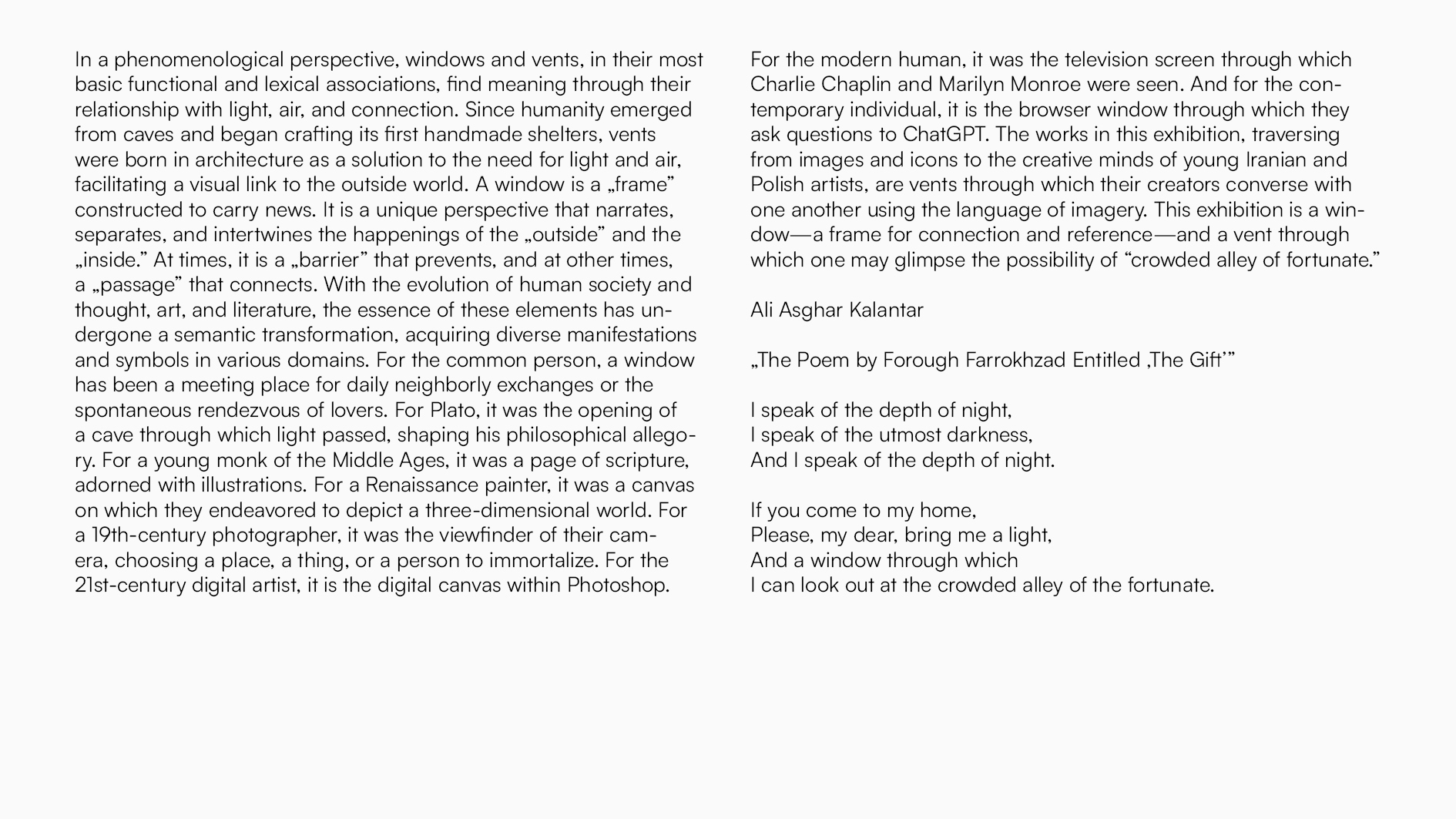

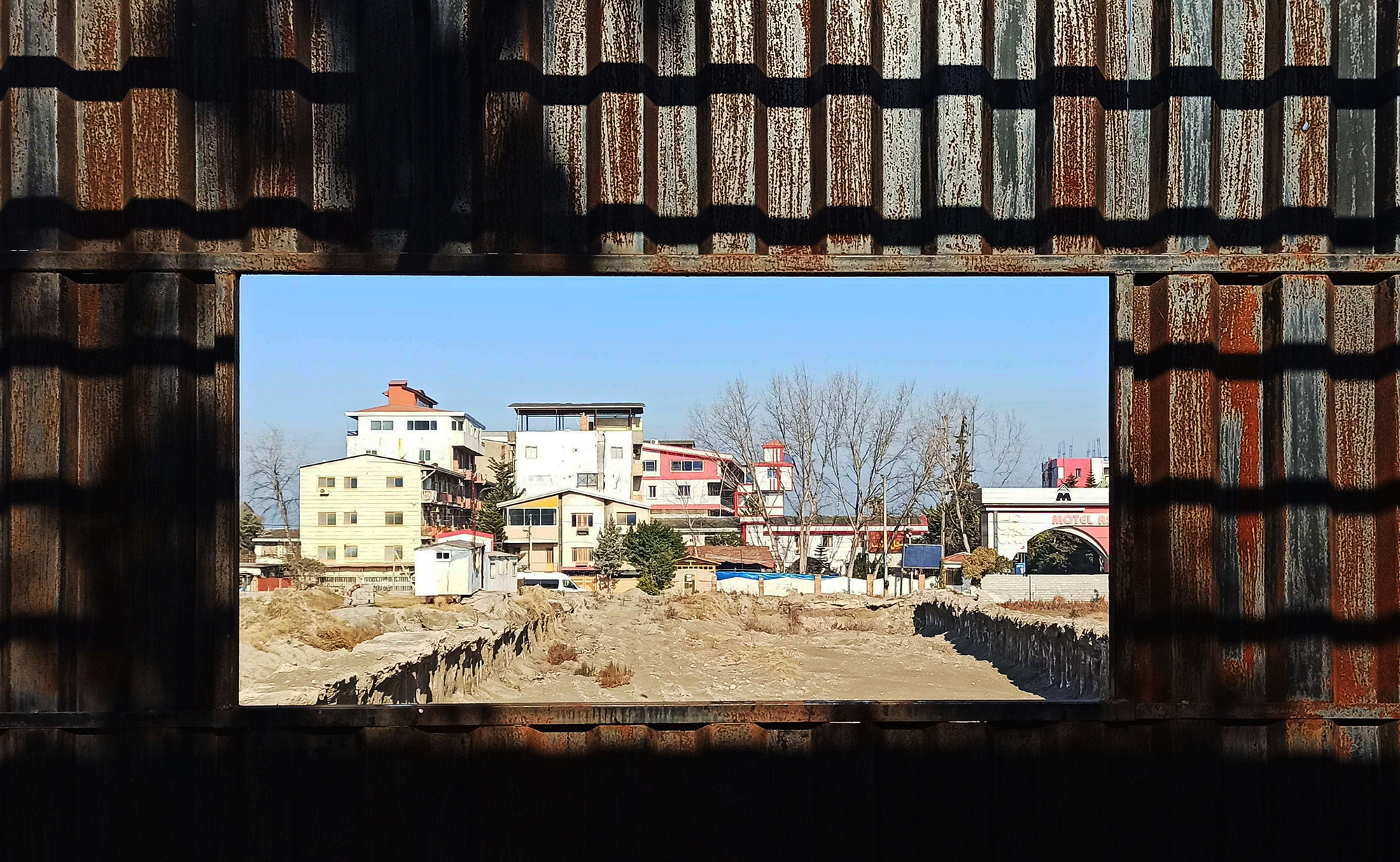
As the population grows, humans destroy nature to expand their living spaces. Their endless greed and needs drive the replacement of forests, natural habitats, and pristine landscapes with buildings and human-made structures. This destructive cycle continues until the view from their windows no longer reveals birds in flight, lush trees, or untouched nature. Instead, all that remains are endless rows of houses and man-made creations, eventually leading to ruin.
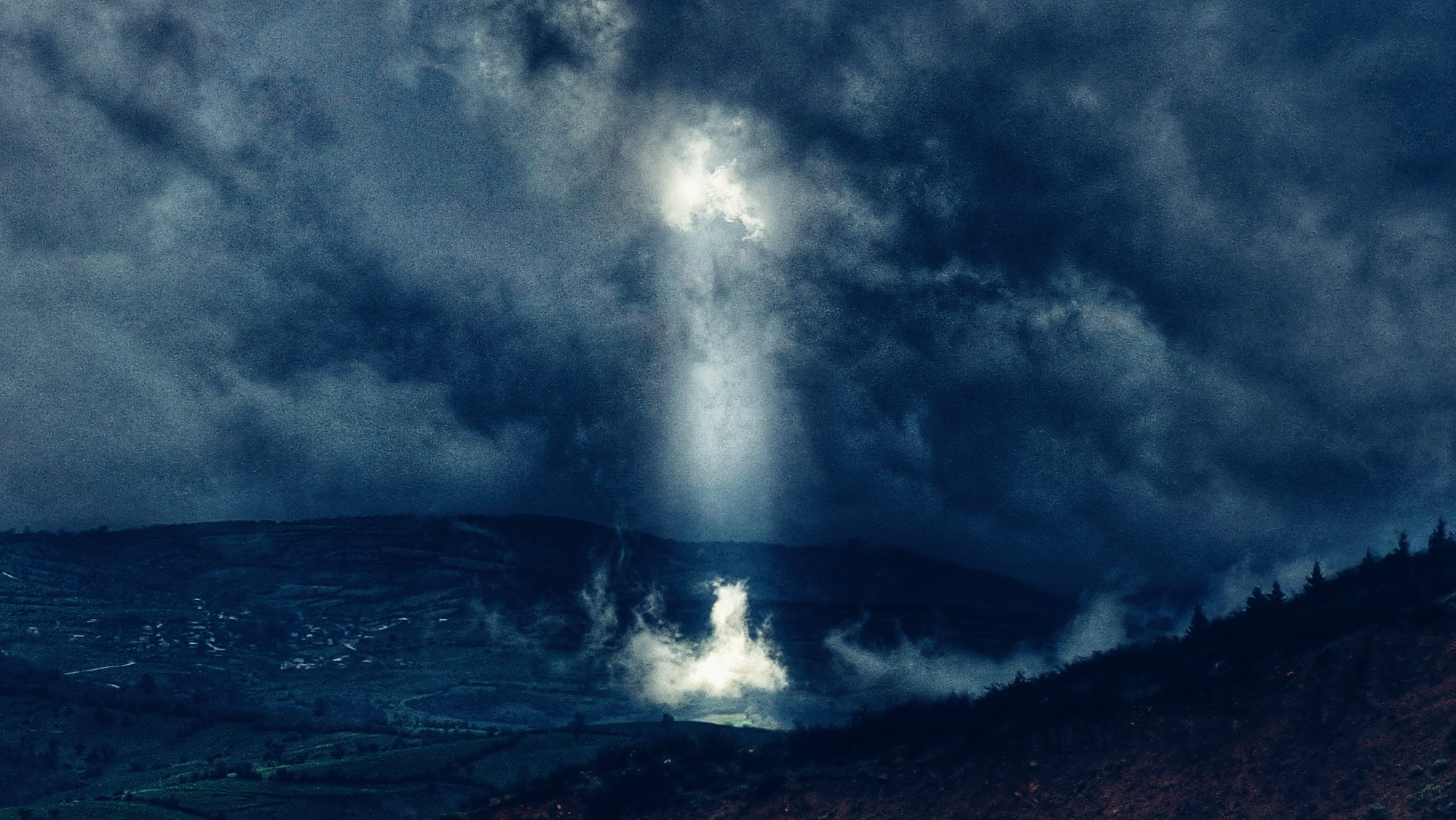
She turned her life upside down, searching for a single drop of salvation, but it was nowhere to be found. Wherever she went, she was met with the deafening sound of doors and windows slamming shut before her. She searched desperately for a way out, a door to escape, a road—anything that could help her flee. But nothing appeared, nothing at all.
One day, tired and heartbroken, she cried out: “Oh, tangled mountains that block my path, rivers that drowned my body, and heavy soil that stole my breath—I’m exhausted. I can’t keep going.” This time, her voice was so clear that the one who needed to hear it, heard it! He opened a window through the smoky clouds, and light, by his command, flowed over the fields, finally reaching the one who had longed for it.
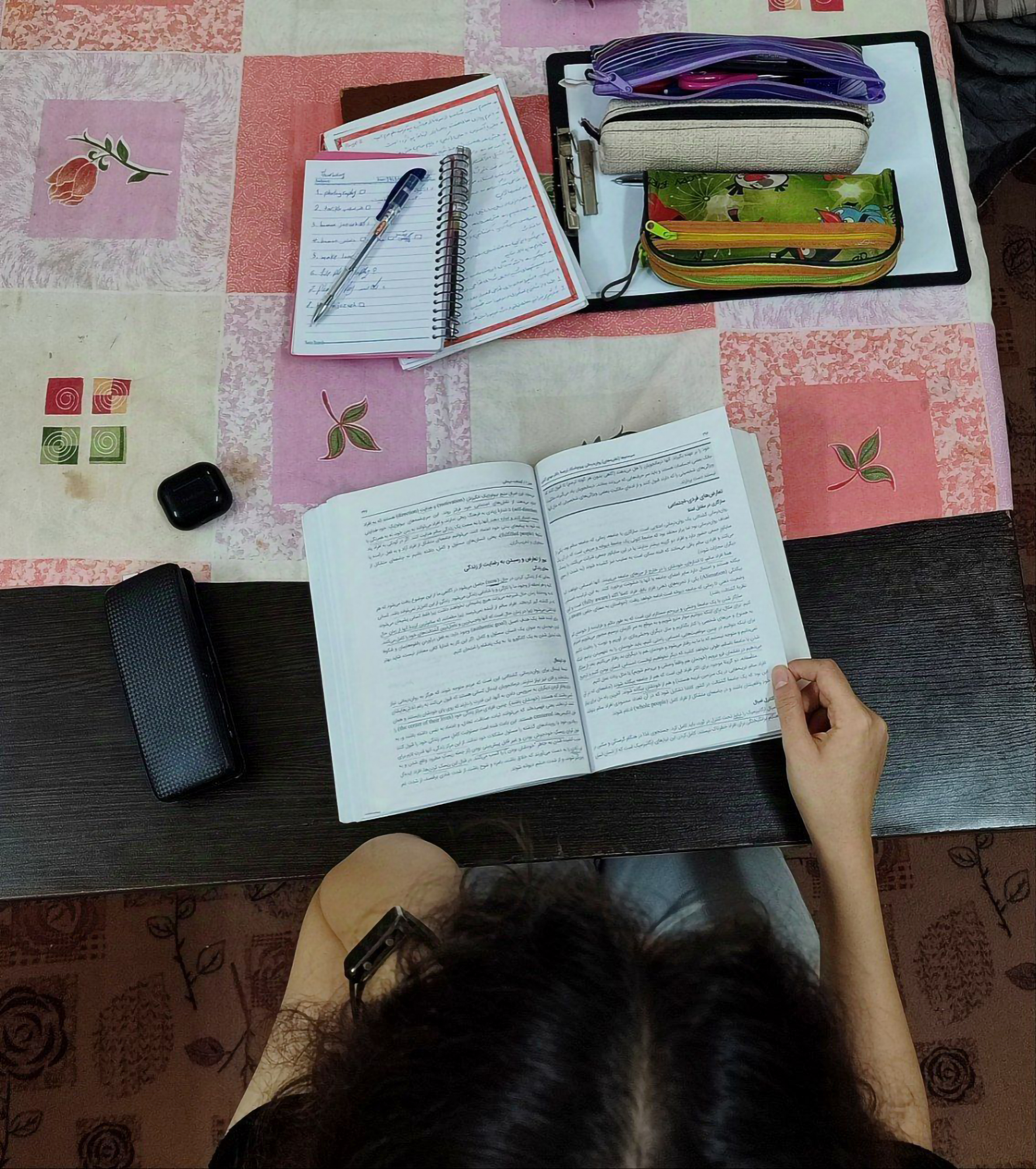
The window seen in these photos represents the innocence of the lives of individuals who struggle with mental disorders or various syndromes. These individuals unwittingly find themselves in their current state due to experiences or traumas they have faced, or because of physiological issues. The lives of these patients are profoundly affected by these conditions, and for some, the ability to rescue themselves from this difficult situation becomes a significant challenge. Sometimes, these individuals become so entangled in their illnesses that they impose their true existence onto these disorders and feel powerless. This image is a window that looks into their world. Depersonalization is a dissociative disorder in which the patient feels a detachment from their body or feels alienated from themselves.
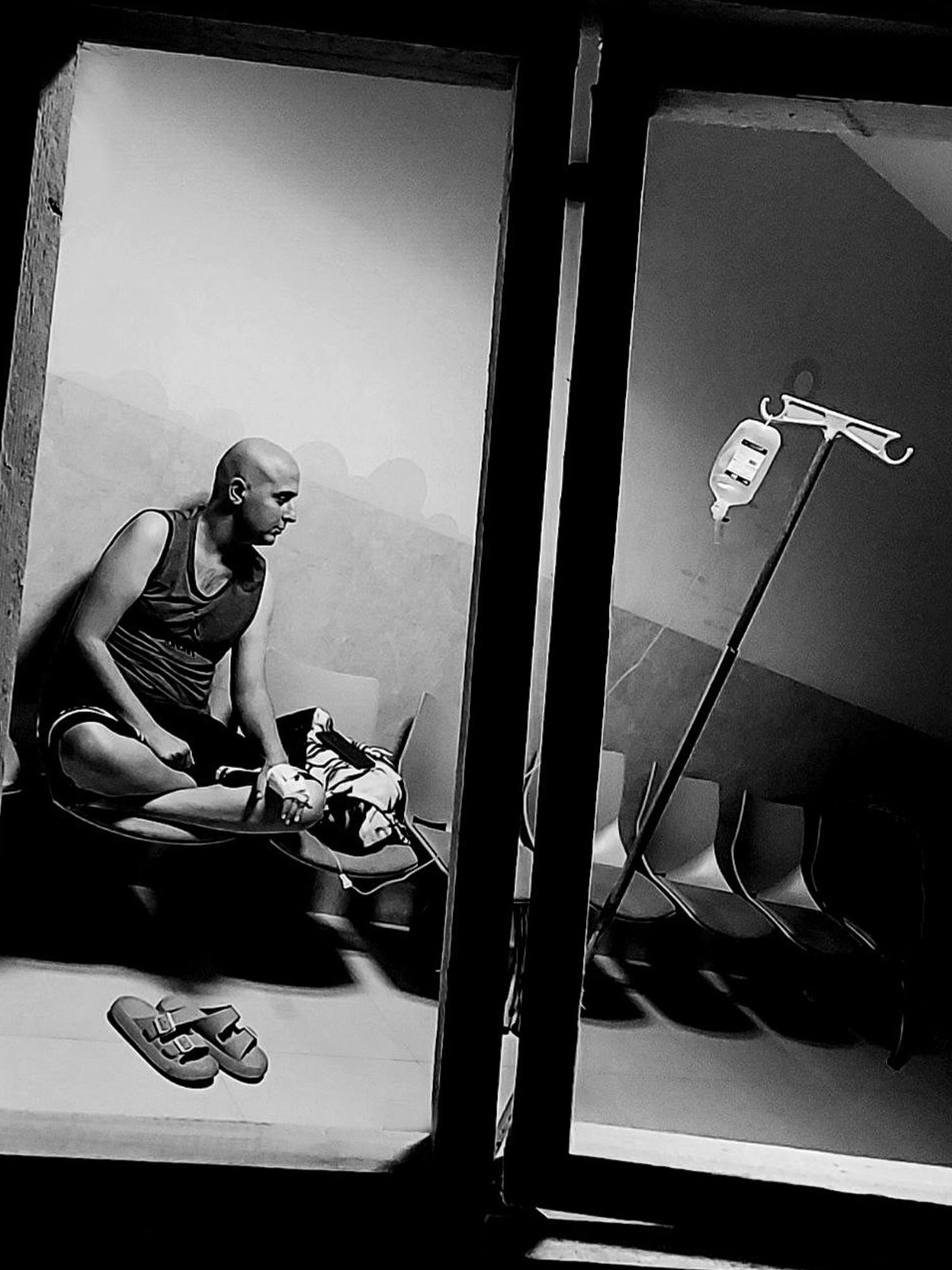
My artwork addresses the experiences of cancer patients, who are often marginalized in our society. The lighting in my photography is employed in two distinct manners. One of my photographs is presented in black and white, illustrating the darkness that envelops the lives of these individuals, while also hinting at a glimmer of brightness.
The remaining photographs are in color, intended to convey that even amidst darkness, there are bright colors that symbolize hope for everyone. These individuals strive to enrich their lives with color and to envision a more vibrant and beautiful world. Furthermore, the medication they receive is depicted in beautiful colors, signifying the beginning of their promising future.
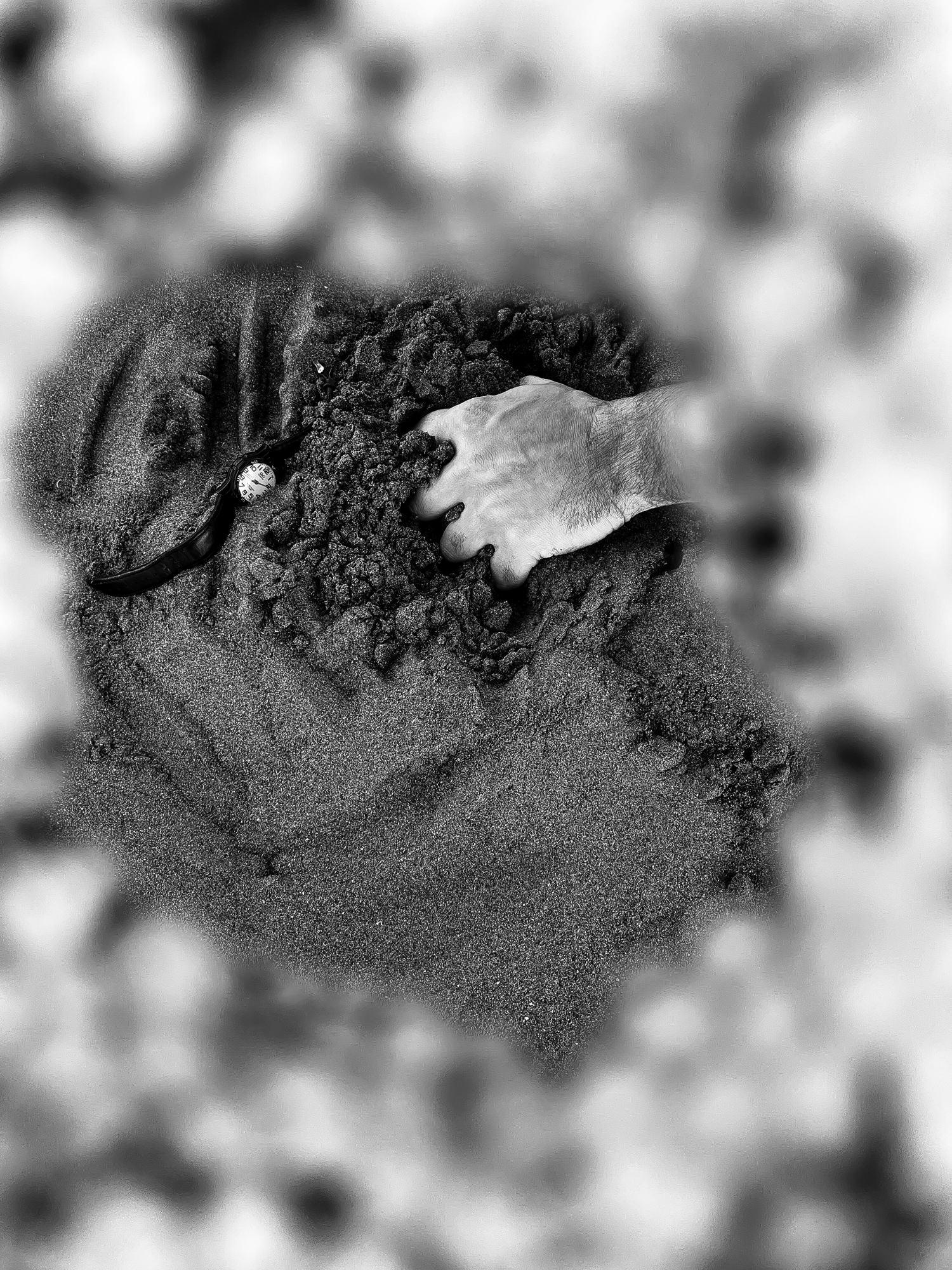
Soil symbolizes coldness and silence; it is where the dead are laid to rest. The final moment of death is filled with regret and sorrow for the moments of life that have been lost. In the corner of the image, a clock serves as a symbol of time and the importance of using it wisely, emphasizing punctuality. However, this clock is, in fact, abandoned. Instead of striving to compensate for lost time, humans cling to a past that can never be reclaimed.
This artwork reflects a deep sense of longing and the futile struggle against the relentless passage of time. It invites viewers to contemplate the weight of their own memories and the inevitability of loss, urging them to consider how they engage with the present. The juxtaposition of the hand grasping at the soil and the neglected clock serves as a poignant reminder of the tension between our desires and the reality of time’s flow. Through this piece, I hope to evoke a sense of introspection about the choices we make and the moments we let slip away, ultimately challenging the audience to reflect on their relationship with time and memory.
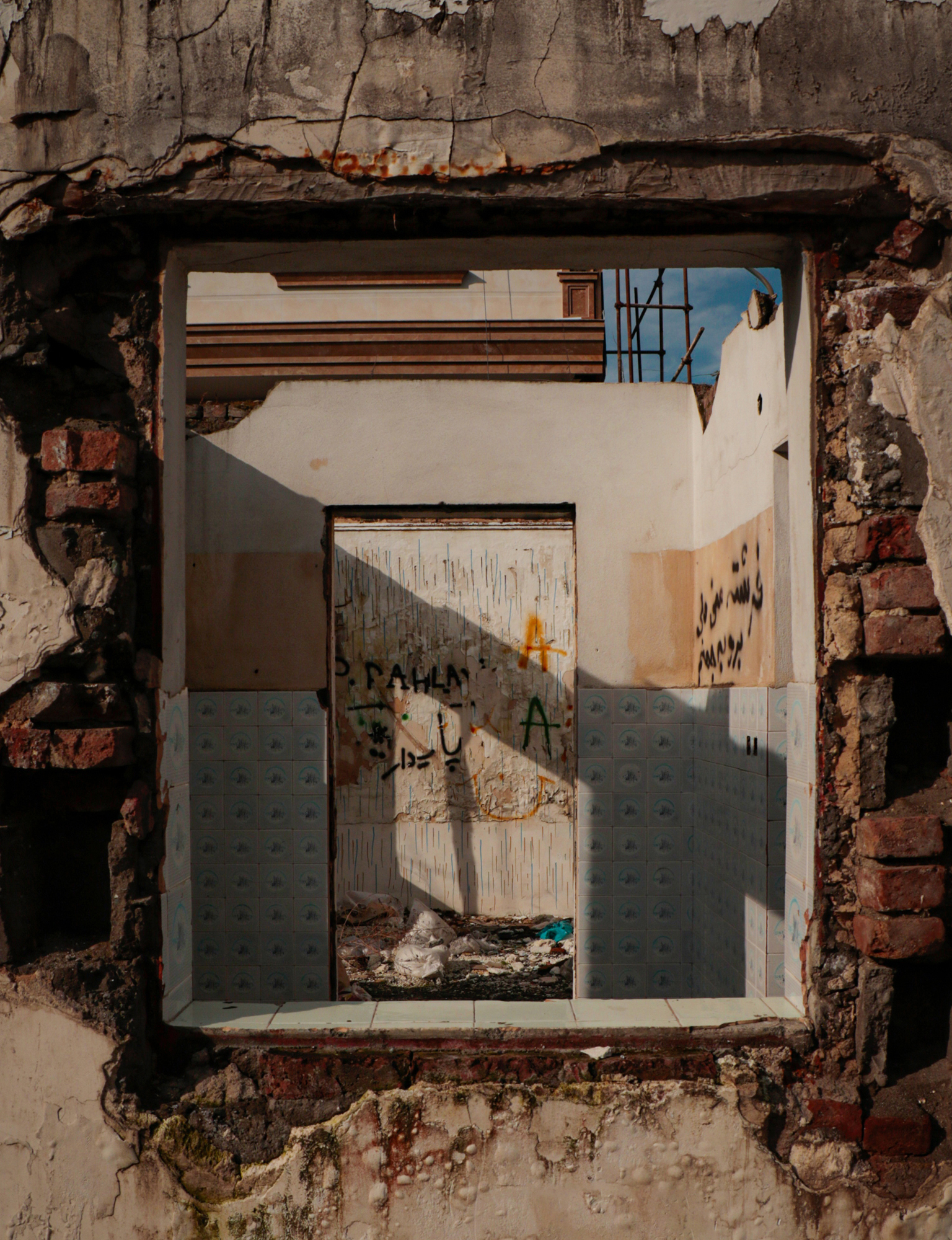
The walls smell of memories and still carry their secrets. Who knows what has happened in this house? What we see is that light still warms the body of this home, shadows continue their play, the past has left its mark on the walls, and even after destruction, new memories have found their way into this place. Love and hatred stand side by side, like the sentence written on the wall: “You are my angel! But go to hell.” Now, the trash has found a home, a home with a view of the sky.

In the narrow frame of the window, a girl with a lost look stares at the horizon. A crumpled handkerchief, a sign of fallen tears, and her black hair, a curtain on her shoulders. Her silence, a silent scream of deep sorrow; a poignant expectation for liberation or the end of exile. The window, a gateway to a distant world, and at the same time, an invisible wall between her and hope. A soft light shines on her pale face, but this light only reveals the depth of her suffering. The window, in this image, is a symbol of imprisonment and endless waiting.

She sat in waiting, harboring a hope that perhaps someone would appear from behind her room’s window; someone resembling a savior. Years passed, and not only did no savior come, but even a wanderer never crossed the threshold of their window. Gradually, despair took root in her heart, and she closed her eyes. When she opened them again, she found herself facing the window. Her reflection there was fading away. Now, she was waiting for no one but herself. But truly, who was she waiting for? Was she seeking salvation from her world, or had she merely become trapped in a vanishing hope? This window, once a symbol of hope and anticipation, had now transformed into a mirror of despair. She could no longer cling to what she once yearned for. Letting go of hope, in this moment, meant freeing herself from the heavy burden of waiting. Ultimately, her image in the window serves as a reminder of her endless suffering and waiting. This moment stands as the last image of her that lingers in memory; a picture of someone who, in search of salvation, lost herself and became submerged in the world of waiting.
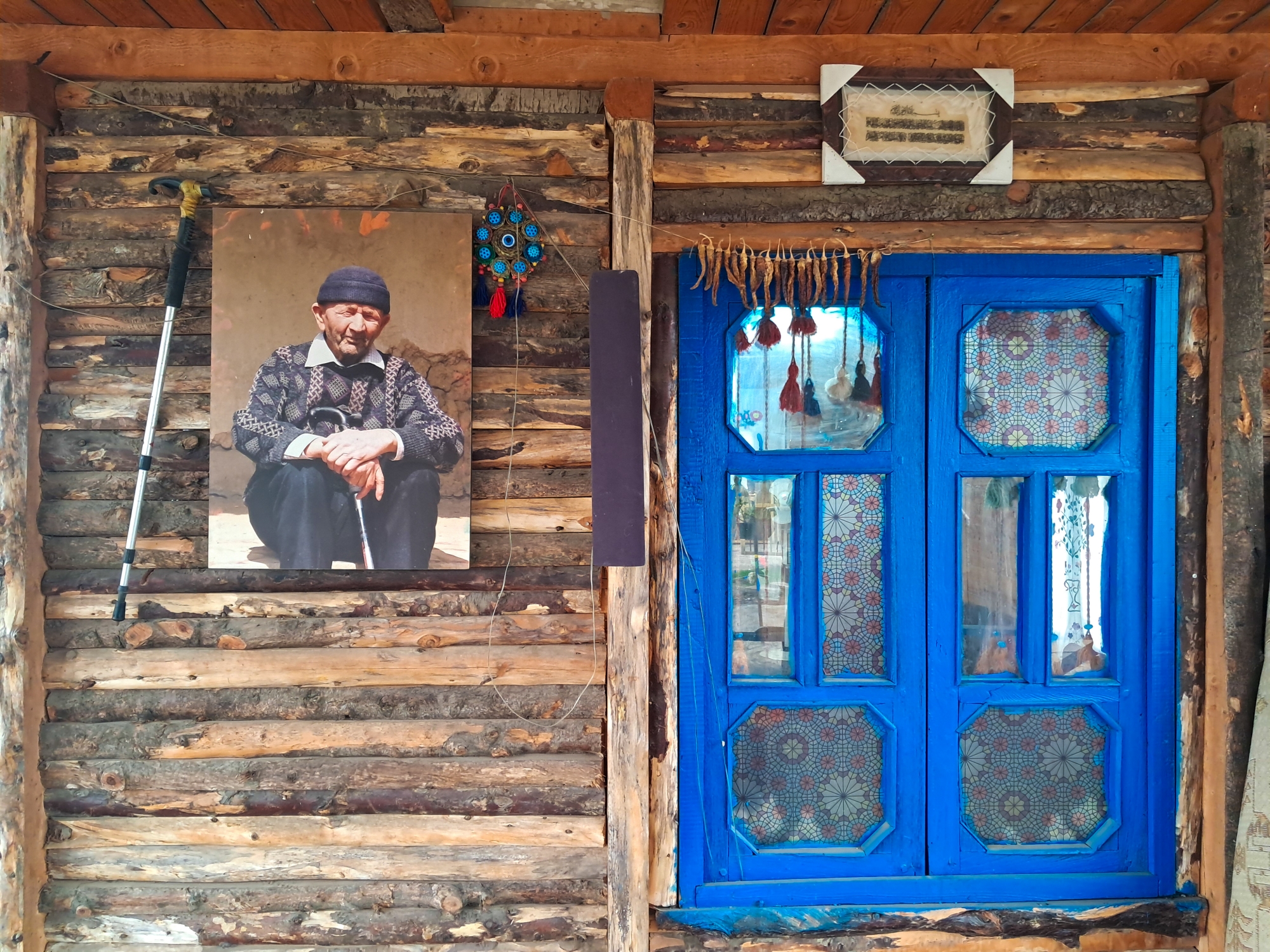
These walls breathe. The face of the man who gazes at us is an unfinished story; the story of the earth, the story of struggle, the story of patience. He is the root; the root that has clung to the earth and weathered the storms of life.
But this window is the window of hope; its blue, the color of lingering desires and dreams that still live behind this frame. The past is alive here, but it is not only the past. These walls connect us to the future. Sometimes we must look out the window, but sometimes we must stare from the outside into the window, to see that the house is a living heart that keeps memories and dreams within it.
Time is not a straight line. The past breathes in the present, the present takes root in the future, and the future is the unrealized wish of yesterday. This image is a bridge between what we have been and what we can become. It is a simple invitation: to honor our roots and always keep a window open to hope.
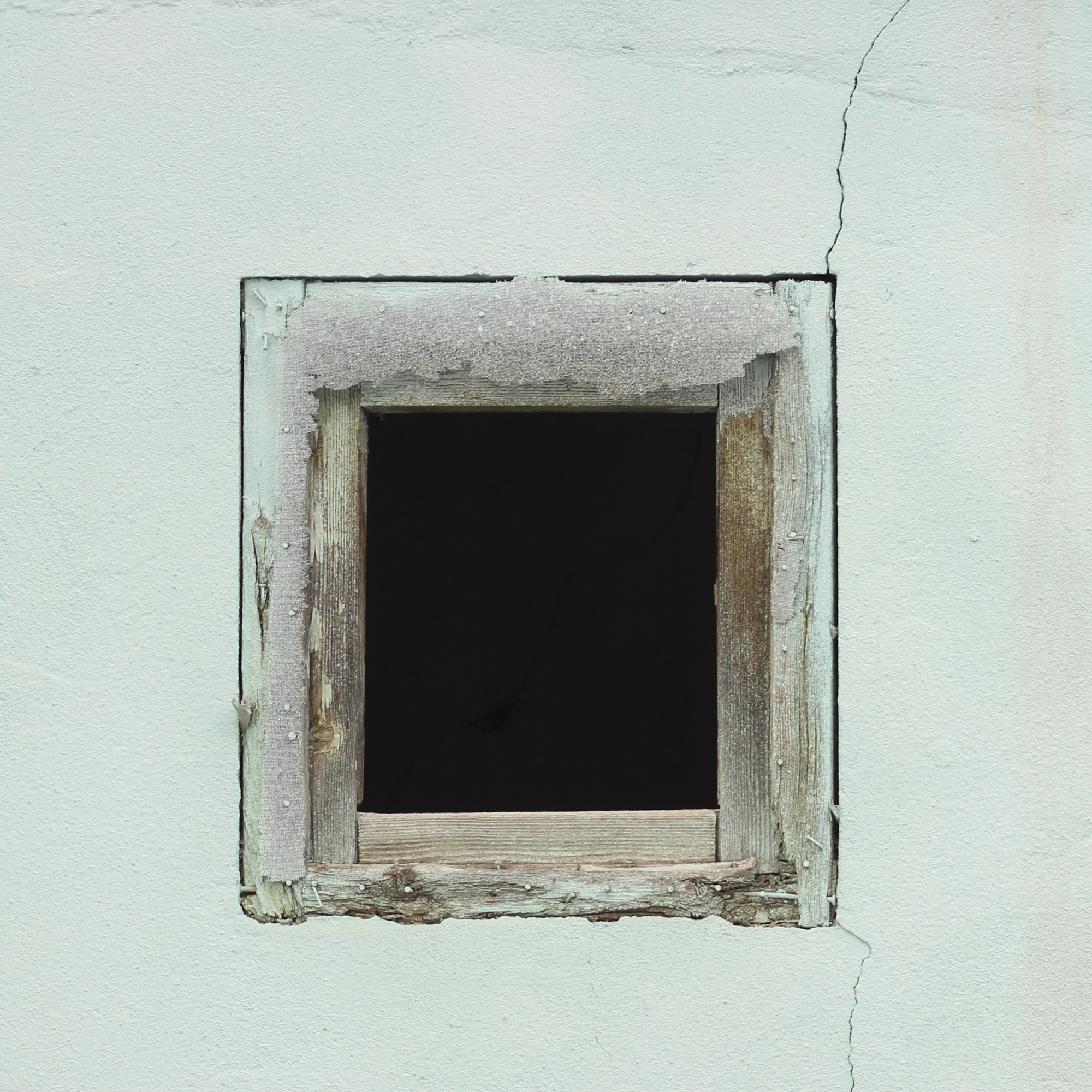
I could feel the humidity in my skin and bones. From a small window, rays of light pierced through the absolute darkness, bringing with them a tremendous glow. It seemed that my only hope and motivation were encapsulated in a fragment of light. This window served as a boundary between two worlds: the silent realm within and the outer world, of which I had no conception of its vibrancy.
The contrast between darkness and light at the center of the image captures the depth of my emotions. This darkness symbolizes the challenges and fears we face in life. Are we trapped in this isolation? Will we dare to step toward that light and cross the threshold between these two worlds?
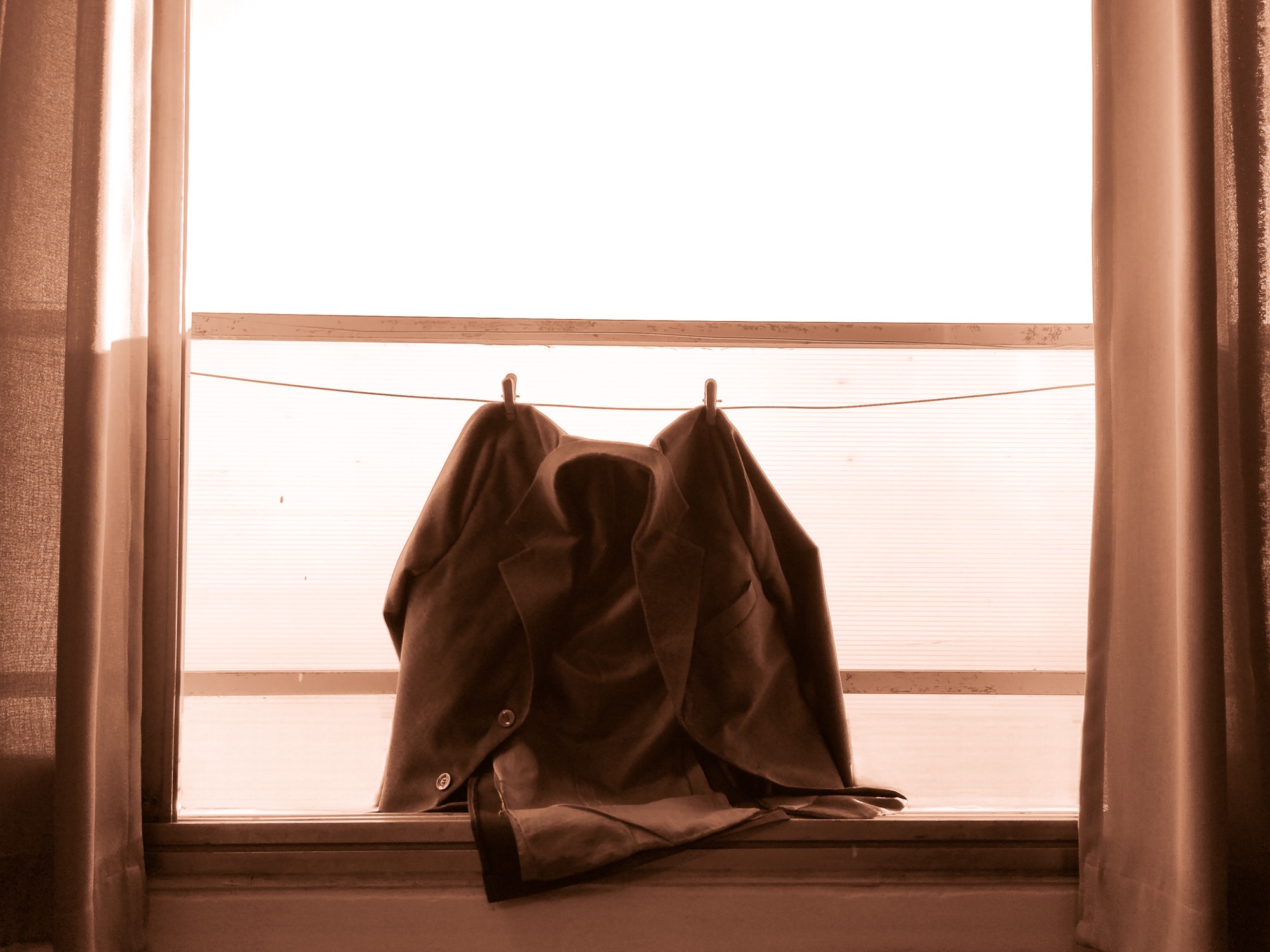
In this photograph, the sense of attachment and the compulsion to continue is vividly portrayed through the figure of the coat and its hanging from a strap, symbolizing dependence on a particular situation or person. This attachment can evoke feelings of love,friendship, or even responsibility.
The coat’s presence within the window frame conveys a sense of obligation. It appears as though the coat cannot easily be released, remaining confined within a limited space. This imagery can represent the challenges of life; moments when we find ourselves tied to circumstances or relationships that may no longer serve us, yet due to emotions or commitments, we struggle to break free.
The warm, high-contrast lighting adds depth to this sense of attachment. The interplay of light and shadow can illustrate inner conflicts; where the light symbolizes hope and love, the shadows represent fear, despair, and negative emotions. This contrast gives viewers the impression that in life, we are constantly grappling with challenges and conflicting feelings.
Ultimately, this photograph serves as a reminder that attachments and obligations are part of life. We must learn to coexist with them while simultaneously seeking freedom and liberation from their constraints. This inner journey continually propels us toward growth and transformation. It encourages us to reflect on our own dependencies and the ways in which they shape our experiences, urging us to navigate the delicate balance between connection and independence.
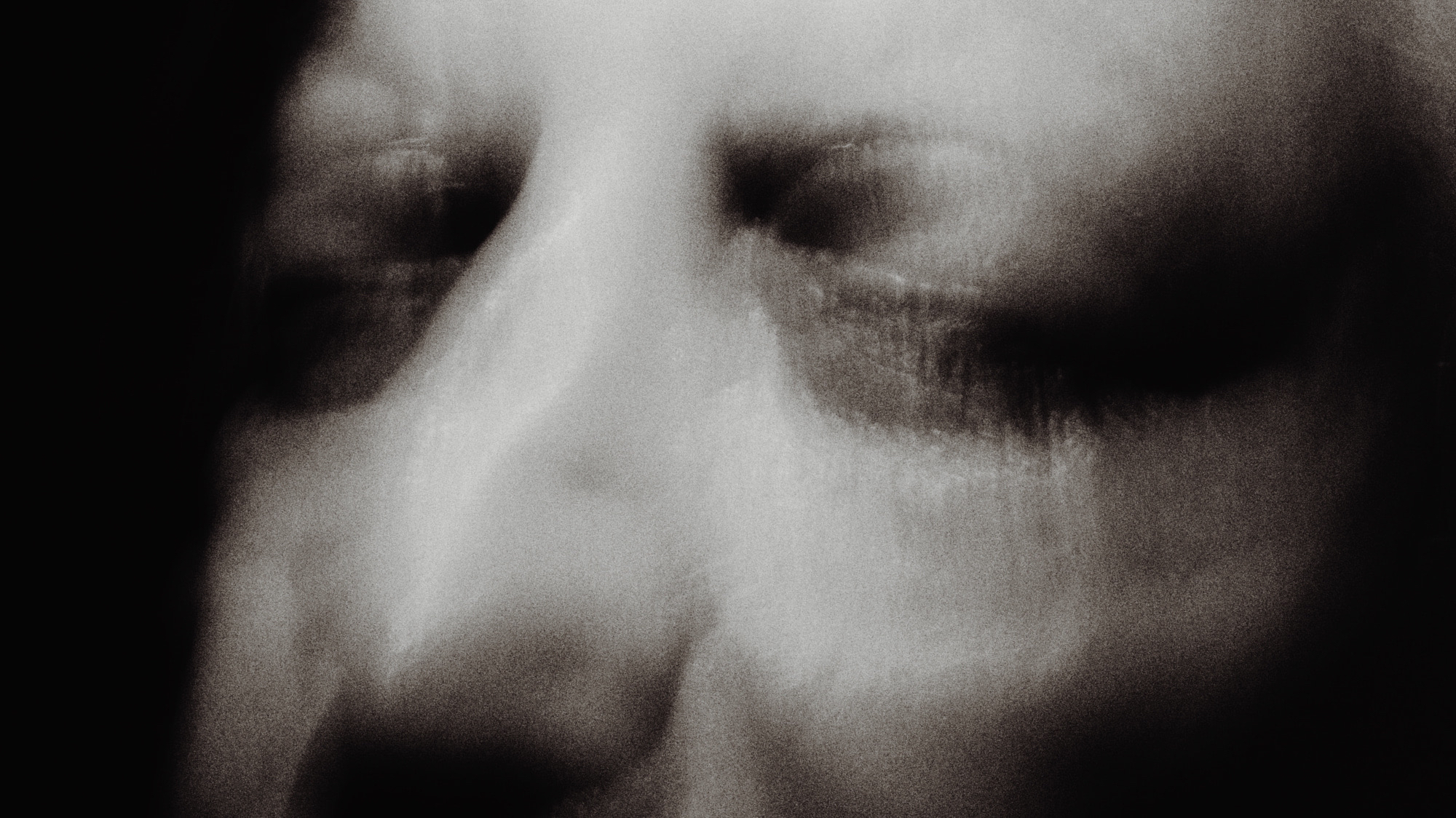
Eyes, the sacred windows to the soul, guard the spectre within; a shadowed yet glowing presence, the very heart of our being. Just as windows reveal worlds beyond walls, the eyes uncover layers of truth and mystery, reflecting the endless depths of our inner self. They call us inward, to face the hidden truths that rest intertwined with wonder at the core of our being.
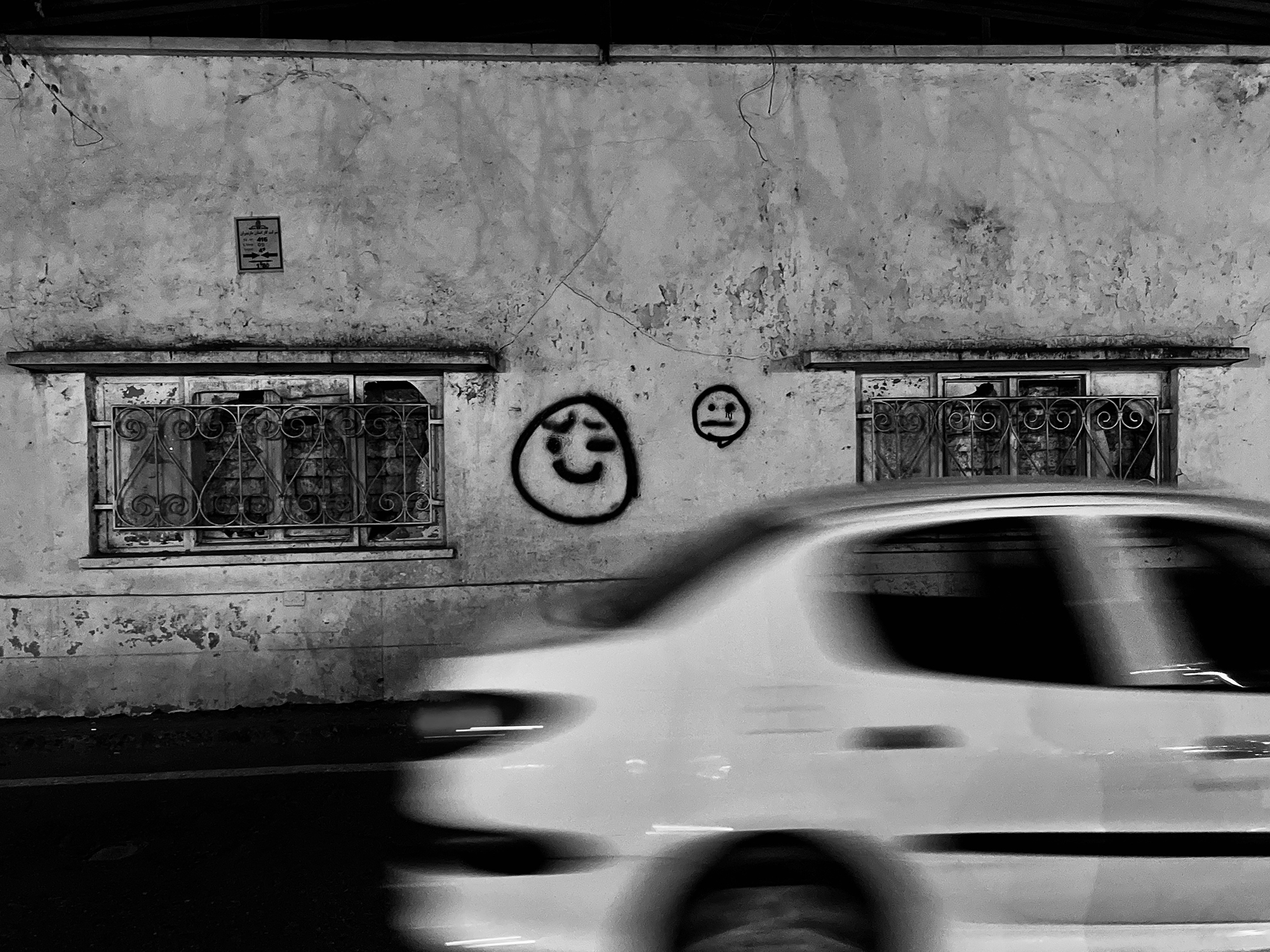
Statement: „A Window to Duality”
„A Window to Duality” is an exploration of the contrasts that shape life; moments that, despite their simplicity, reveal the gap between emotions, concepts, and realities. This collection is inspired by apparent and conceptual dualities: joy and sorrow, movement and stillness, hope and despair, past and present.
Each photograph captures duality as an inseparable part of existence. Simple graffiti on an old wall, juxtaposed with the motion of passing cars, reminds us that the past always coexists with the present in the modern world. Locked padlocks on steel bars, set against the serene reflection of nature, evoke the tension between security and freedom.
These contrasts are not confined to the images themselves; they resonate with our emotions and perceptions. These windows invite us to question: do these opposites limit us, or do they drive us forward?
„A Window to Duality” offers a space to reflect on the contradictions of the world around and within us. It celebrates moments that may appear conflicting but, when brought together, form a beautiful and profound whole. The aim of this collection is to encourage the viewer to pause and ponder – showing that beauty lies not in uniformity, but in the interplay of contrasts and their unity.
— Gaps and connections, contradictions and harmony; a window into a world full of Duality.
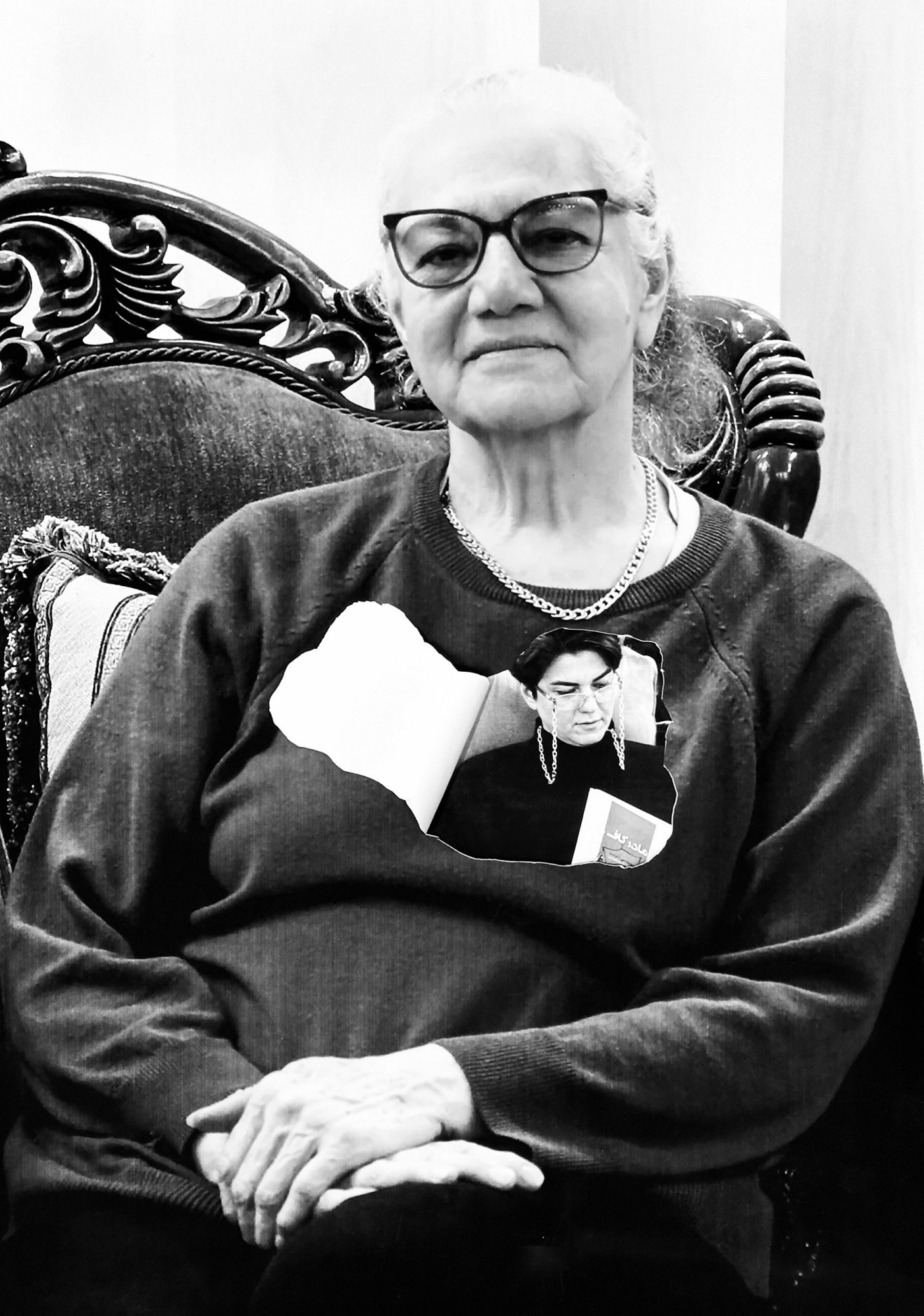
In this photograph, created for a group exhibition centered around the theme of windows/portals , it feels as though you are entering the hearts of people and discovering what truly lies within them. For this project, I chose my grandmother as the central character, and through this choice, I aim to showcase the individuals who hold a special place in her heart. Each of these people is engaged in a specific activity, which my grandmother recalls, keeping them alive in her memory. These people and their memories from my grandmother’s world are presented as collages that fit within her heart. In terms of lighting, I made an effort to use natural light to ensure that, when the collages are placed within her heart, they do not appear artificial, preserving the sense that these memories are real and tangible.
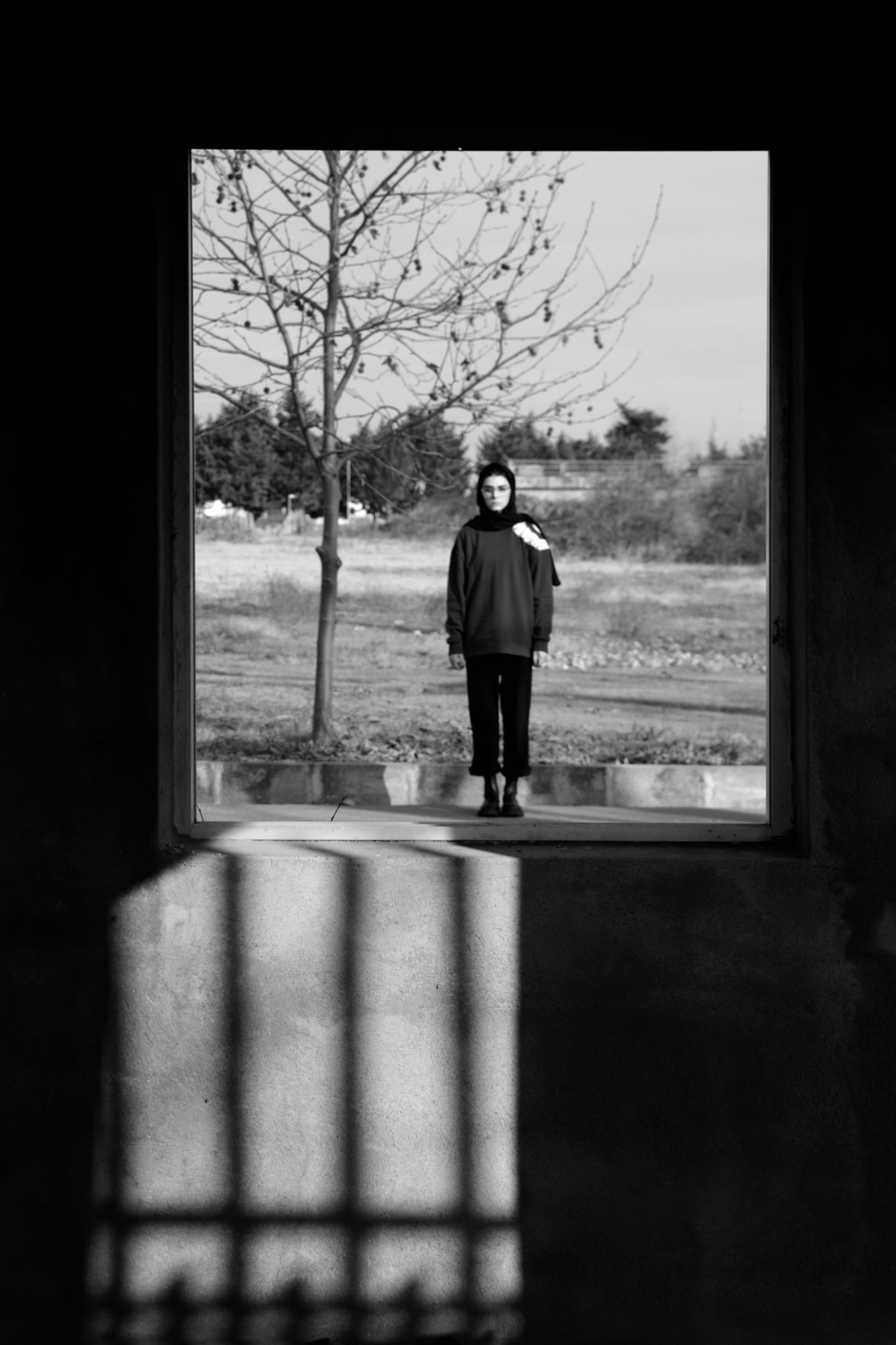
This photograph gazes through a window into the outside world, yet remains ensnared by the shadows. The light, filtered through unseen bars, symbolizes a captivity that, though intangible, weighs heavily on the soul. The distant figure, standing isolated and detached, serves as a stark reminder that imprisonment is not always physical; it can grow within the confines of the mind and spirit. Here, the window—a symbol of hope and liberation—transforms into a bittersweet contradiction: a promise of freedom overshadowed by constraint.
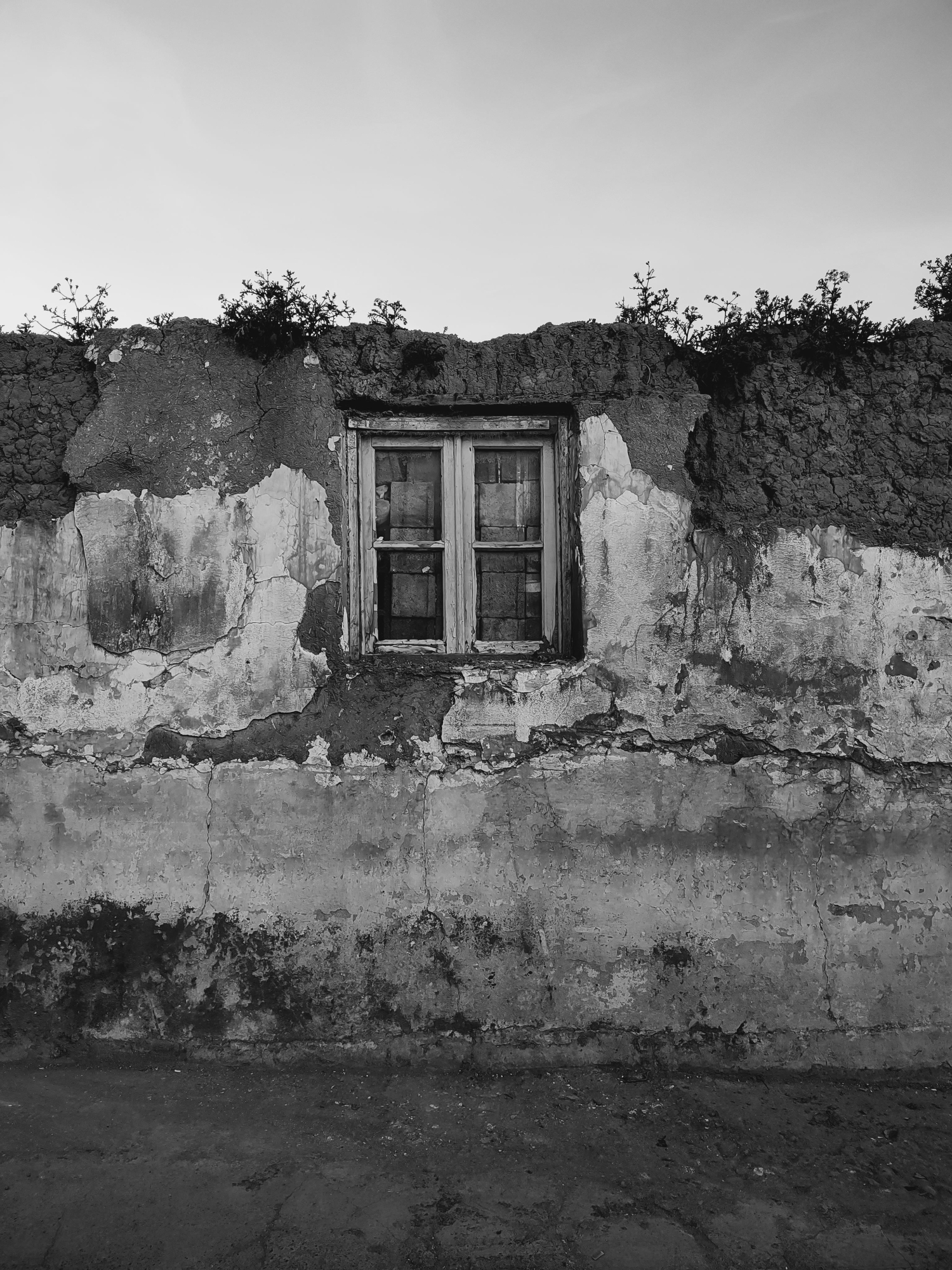
My house is dark. I want to bring light into my home. I move towards the window to pull aside the curtain. The news said today would be sunny.
But instead of a thin, sheer fabric, my window is covered with a hard layer. A layer of stone and rubble. A curtain of bricks that has taken away my light of hope. With no ability to let light through this thick barrier.
I must take action. I need to bring a pickaxe and battle these stones.
But suddenly I noticed that plants have started to grow from above these desolate ruins. A sign of hope and a bright future that has emerged from these wrecks. These plants are heralds of life, reminding us that although hard and thick walls block the way, the force of nature and hope will always find a path to the future.
And now, I must bring a pickaxe and battle these stones. Not just for myself, but for a future that is embodied in the plants above these ruins.
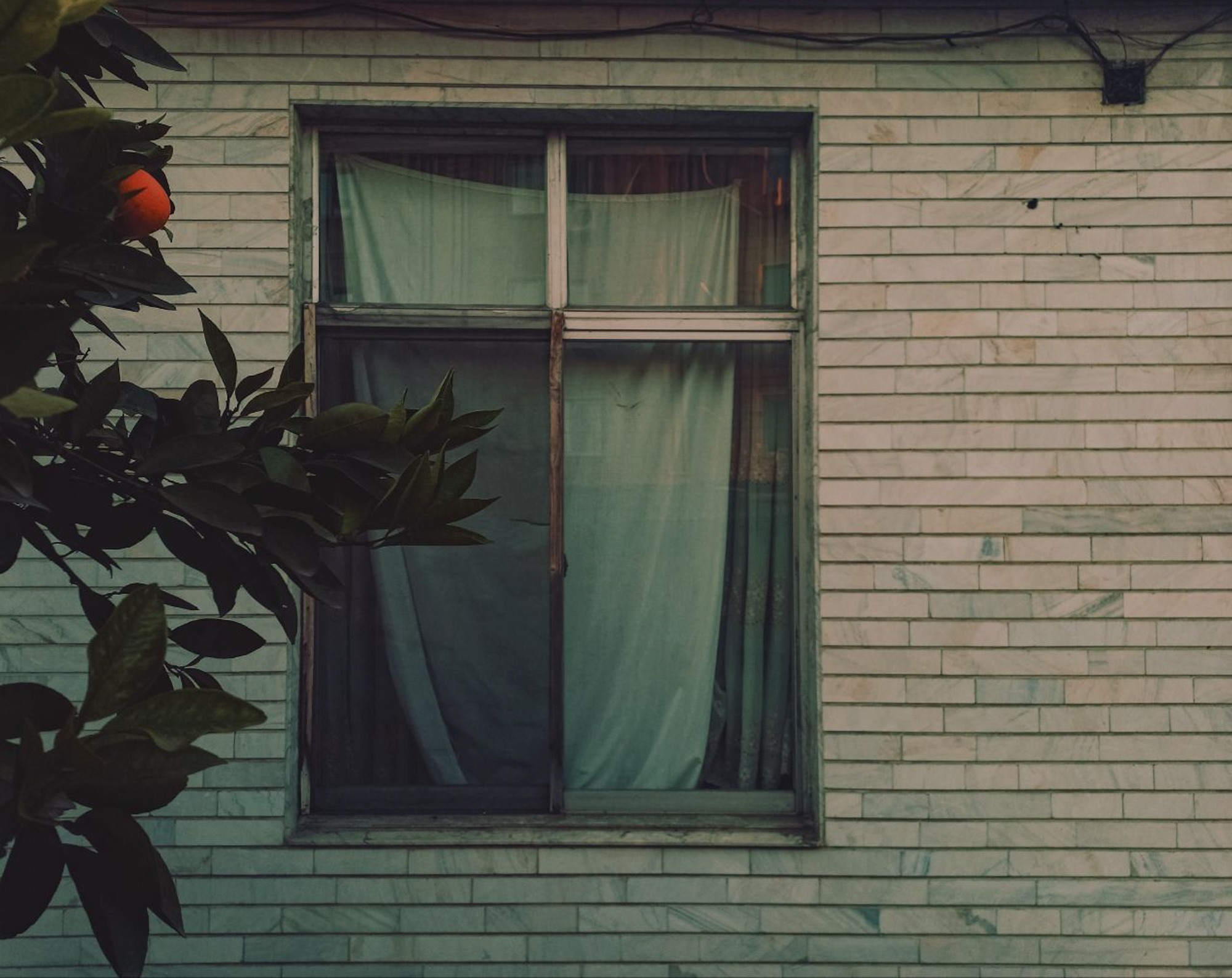
A window with half-open curtains seems to be waiting for someone to touch it, but only silence and sorrow prevail in the space. Once, life flowed behind this window, and now nothing remains but a memory. The orange tree visible from the left is the only remaining sign of life.

A narrow beam of light cleaved through the darkness and whiteness, and a smiling face emerged from it. A bright smile created a contrast with the darkness, as if a hidden light was shining from the heart of the darkness. This smile was either a challenge or reconciliation with the world and showed that even in darkness, one can be happy. Parallel lines had moved aside like a curtain to show this face, as if this smile was only visible to those who stood on the borders. In this gap, she wanted to say that happiness can be found in the heart of darkness and shared.

This abandoned house was once a sanctuary of countless memories. Its walls witnessed laughter, tears, joy, and sorrow that brought life to every corner. Children were born, grew up, and learned life’s lessons under this roof, playing in the yard and filling the air with their youthful energy.
Festive holidays and gatherings were celebrated here, meals were shared around family tables, and days full of hope or burdened with struggles unfolded within these walls.
Now, this house, once brimming with life, stands silent, its cracked walls and overgrown weeds telling the tale of its solitude. Yet, amidst this loneliness, the blue windows, the greenery of the weeds and moss, and the sunlight illuminating its worn facade breathe a sense of peace and lingering hope. Though uninhabited, this house still has a story to tell.
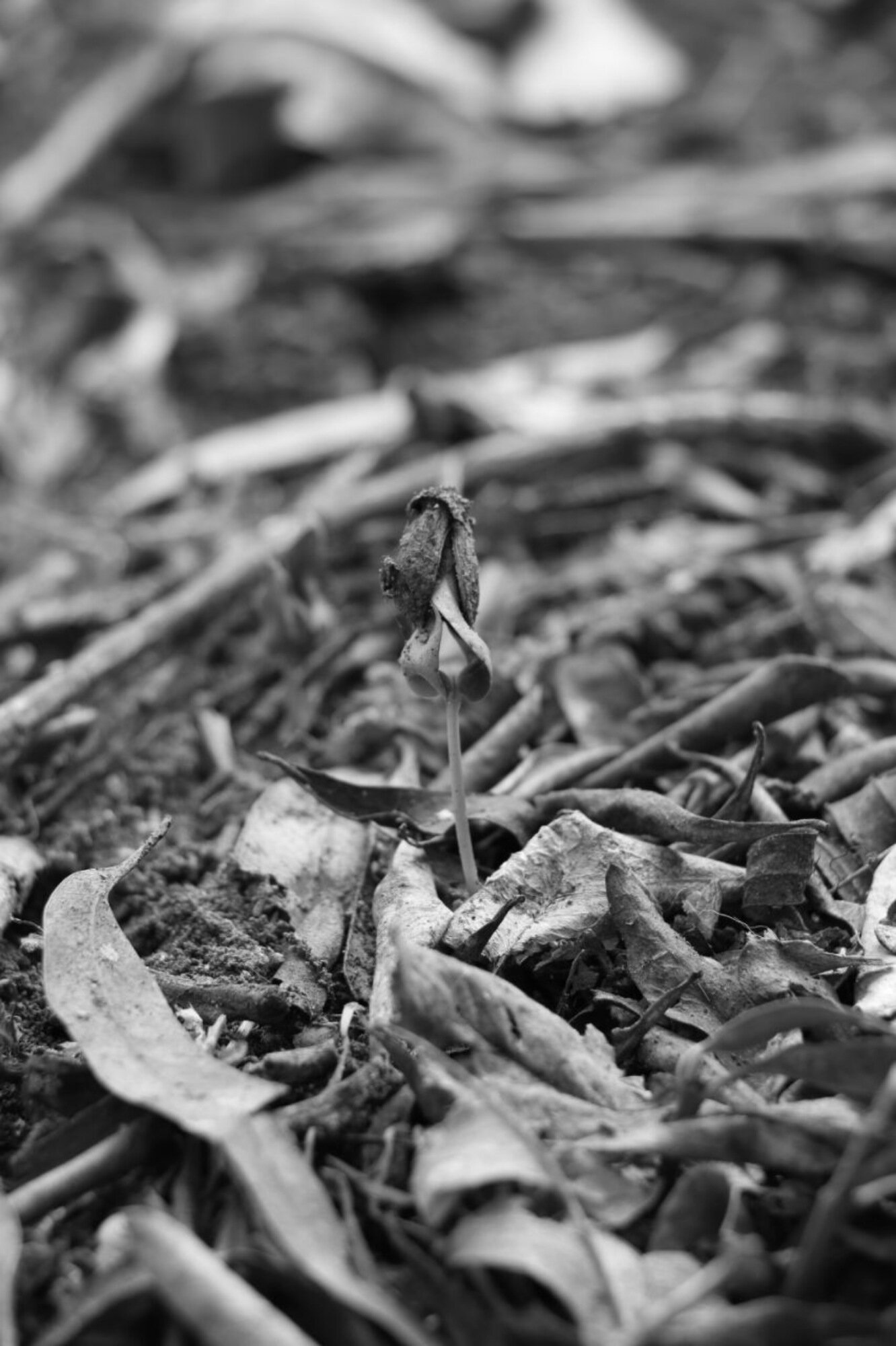
A real sprout, a symbol of life and vitality, takes center stage in this frame. The soft, all-encompassing light lends it a depth and meaning beyond a simple image. The window, not just a physical passageway, but also a portal to our inner world and dreams. In this composition, growth and blossoming are depicted as a result of the interaction between nature and the human mind.
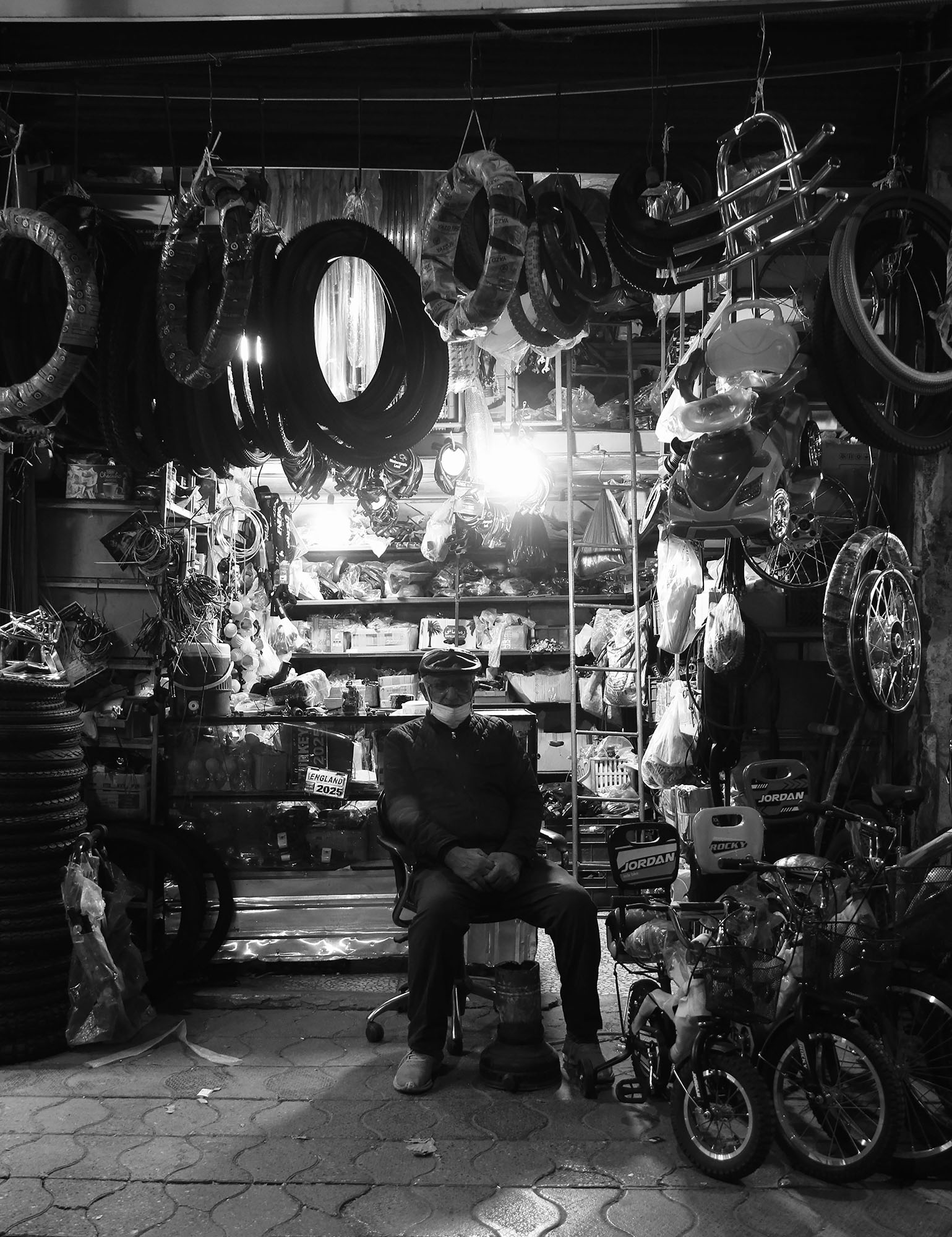
This photograph capture a small bicycle repair shop where an olderly shopkeeper sits quietly embodying resilience and hope. The high-contrast lighting enhances the interplay of shadows and highlights creating a striking sense of depth and realism. The composition meticulously arranged with bicycle parts and tools conveys the rhythm of life and the enduring optimism reflected in the man s presence. Rendered in black and white the image strips away colors to focus on the essence of the scene telling a story of perseverance and hope for the future.
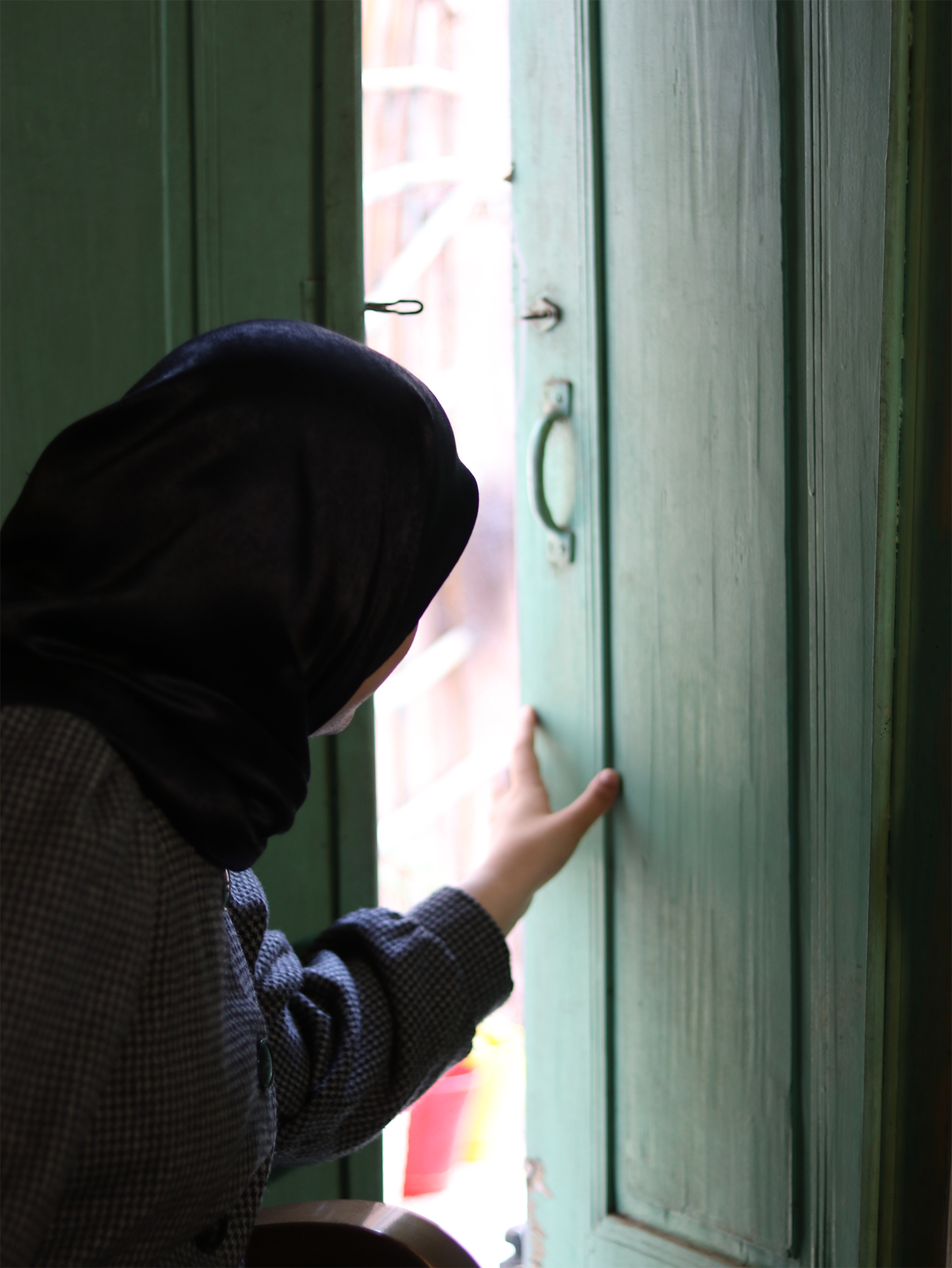
This photograph captures a nostalgic glimpse into a past filled with tranquility and joy. An old door from the Qajar era, with its simple coloring and the presence of a woman gently reaching out her hand toward it, symbolizes the connection between humans and their cherished memories. The soft light streaming in from outside serves as a beacon of hope embedded within these recollections—hope rooted in the values and beauty found in the simplicity and sincerity of life in the past.
The presence of the woman, who seems to touch the past by reaching for the door, reflects an attempt to relive a moment from that era through the gateway of memories. The textured and aged green door is not just an aesthetic element but also a symbol of the authenticity and essence of life in bygone times.
This frame invites the viewer to a moment of silence and reflection—a chance to grasp the meaning and value hidden within collective and personal memories. As a visual document, the photograph reminds us how life the past, despite its simplicity, was rich with emotion and meaning.
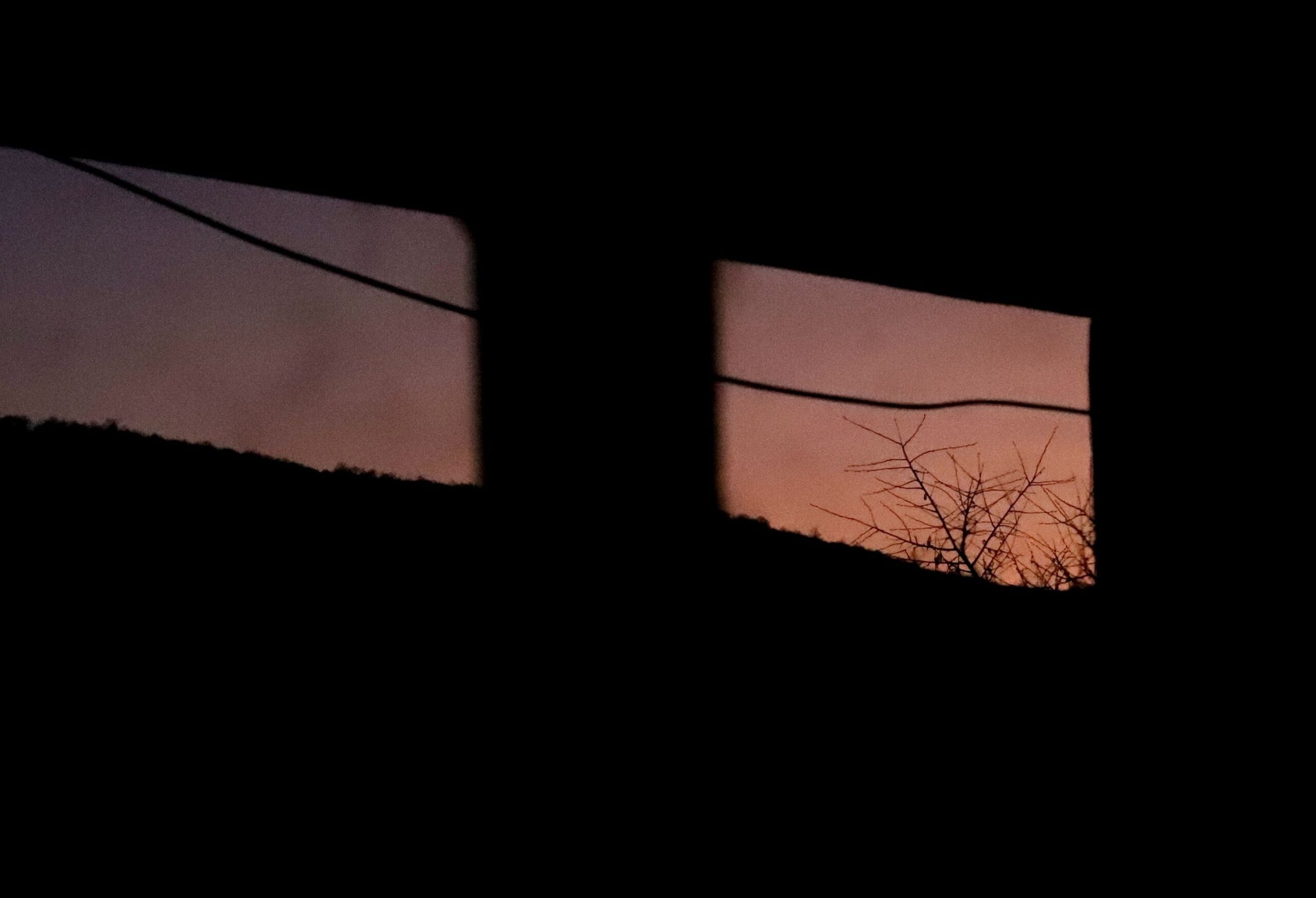
The sunset is beautiful, but it has a sadness with it that a sad memory can make the saddest scene possible. The sun is like a family, it can be warm and welcoming and can burn you at the same time. The sunset is like the experience of people leaving, we live by accepting the death of a loved one and the night is a reminder of all the things that were once with us and now only a memory of them remains.
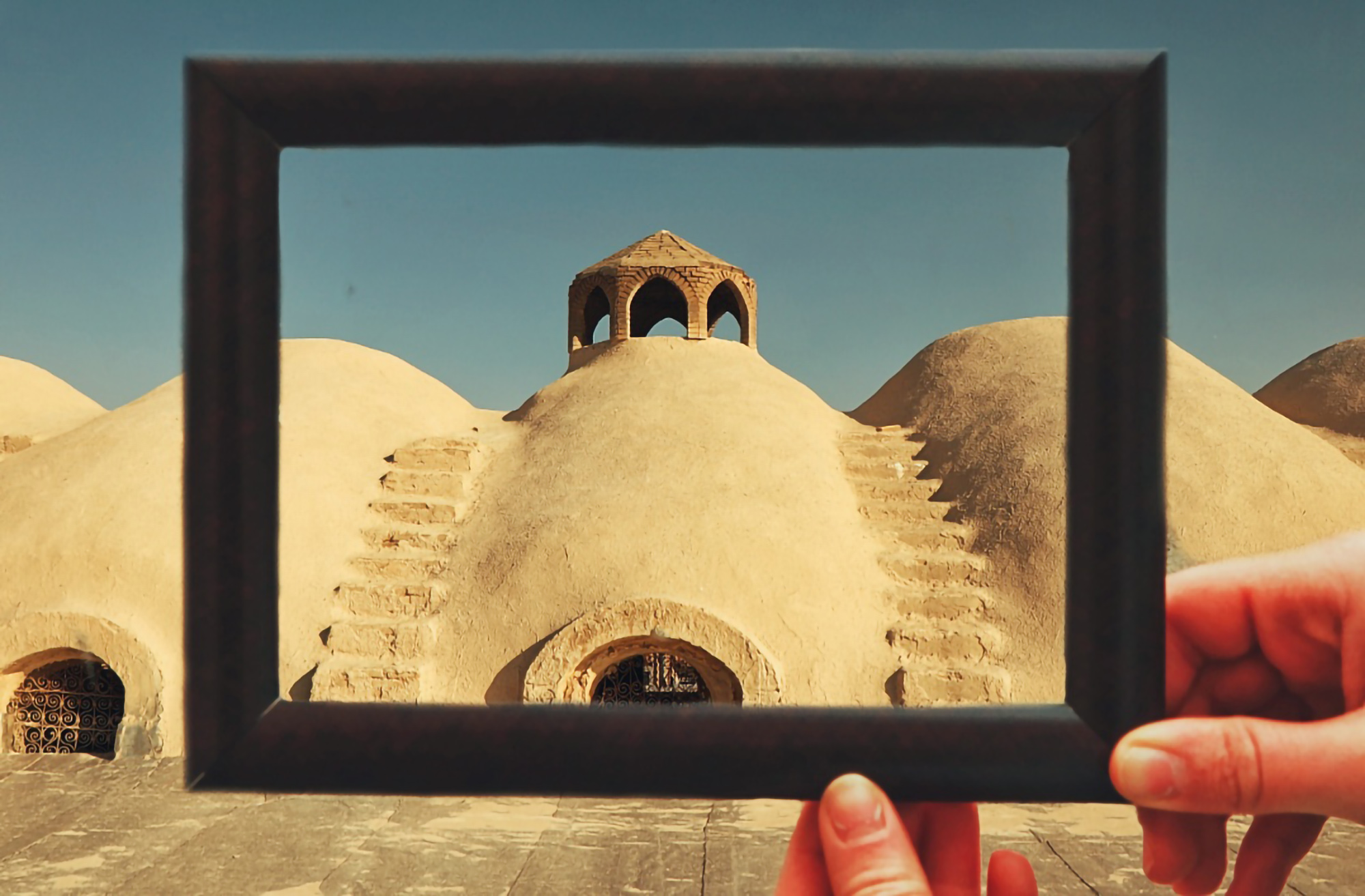
Traditional structures and covered bazaars are a testament to the artistry and creativity of past generations.
These architectural marvels not only preserve the essence of our history and culture but also carry a living spirit.
The brick textures, the soothing scent of adobe, and the gentle interplay of light evoke a sense of tranquility and authenticity in anyone who experiences them.
These spaces serve as bridges between the past and the present, holding value not only in their design but also in the untold stories embedded in every corner.
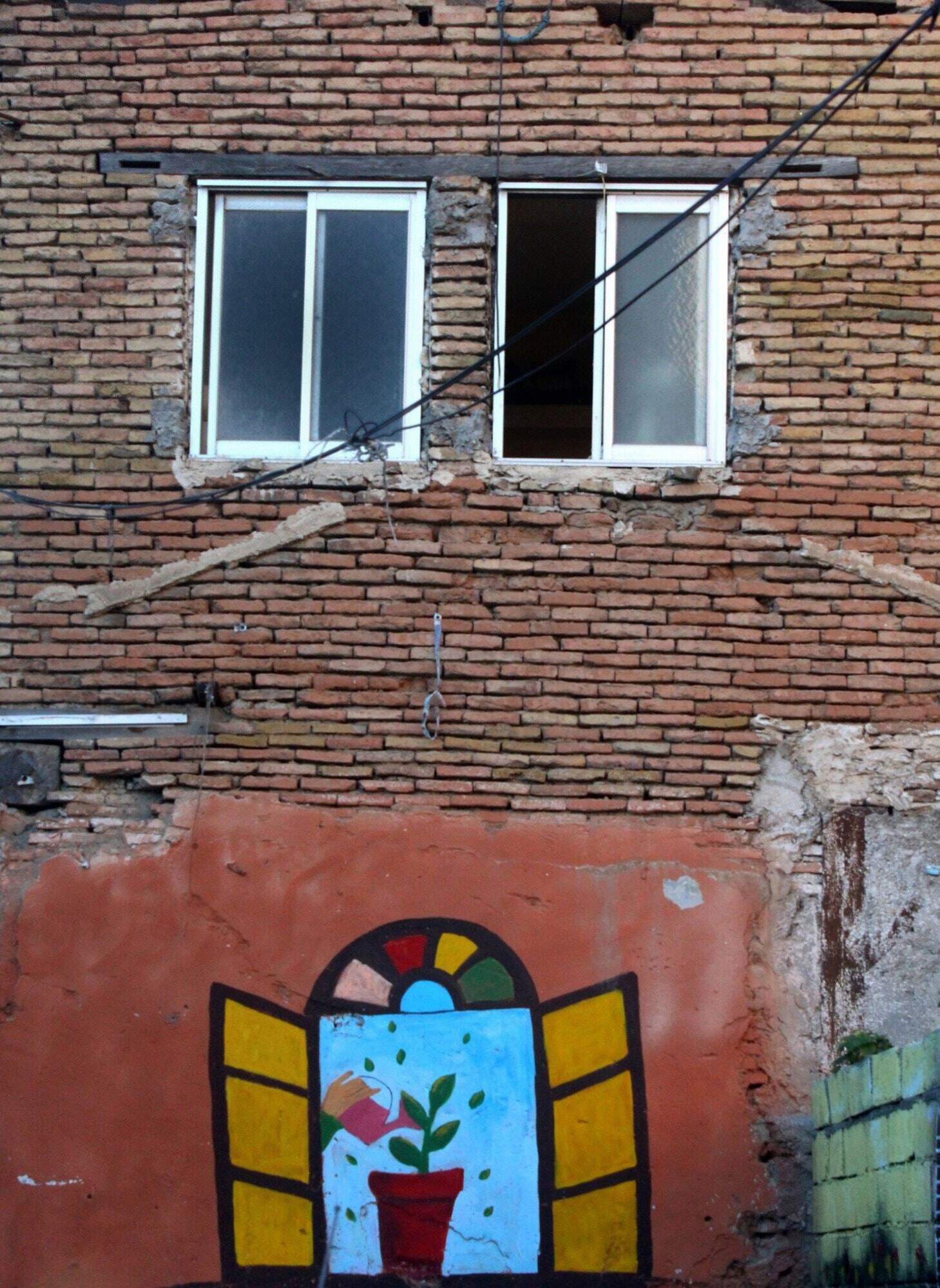
Window! A gateway to the atmosphere within the house and the world outside. In the past, windows reflected a bright and joyful life; their colors, light, and open spaces had a direct impact on the emotions and mood of the inhabitants. Old houses, with windows often adorned with artistic details and warm colors, created a pleasant and energetic living space. Especially when windows opened to the outside, the connection with the natural world brought joy and tranquility into the home.
However, with the passage of time and the rise of modernity, window designs shifted toward simplicity and functionality. Modern windows, with clean lines and a soulless space, have diminished the connection to the outside world, focusing more on utility and performance than on human emotions. These changes in architectural design, though subtle, have unconsciously impacted the living environment of people. Today, many homes’ windows no longer have the warmth and intimacy they once did, and their interiors often feel cold and lifeless instead of cheerful and peaceful.
In this piece, I have depicted the contrast between two types of windows: the modern ones at the top of the building, creating a cold and dark space, and the traditional windows painted below, rendered in a bright and pleasant manner. This contrast reflects the impact of modernity on the spirit and atmosphere of human life. In the past, homes and windows symbolized emotional connections and happiness, but now, with the growth of technology and societal changes, that warmth has gradually faded.
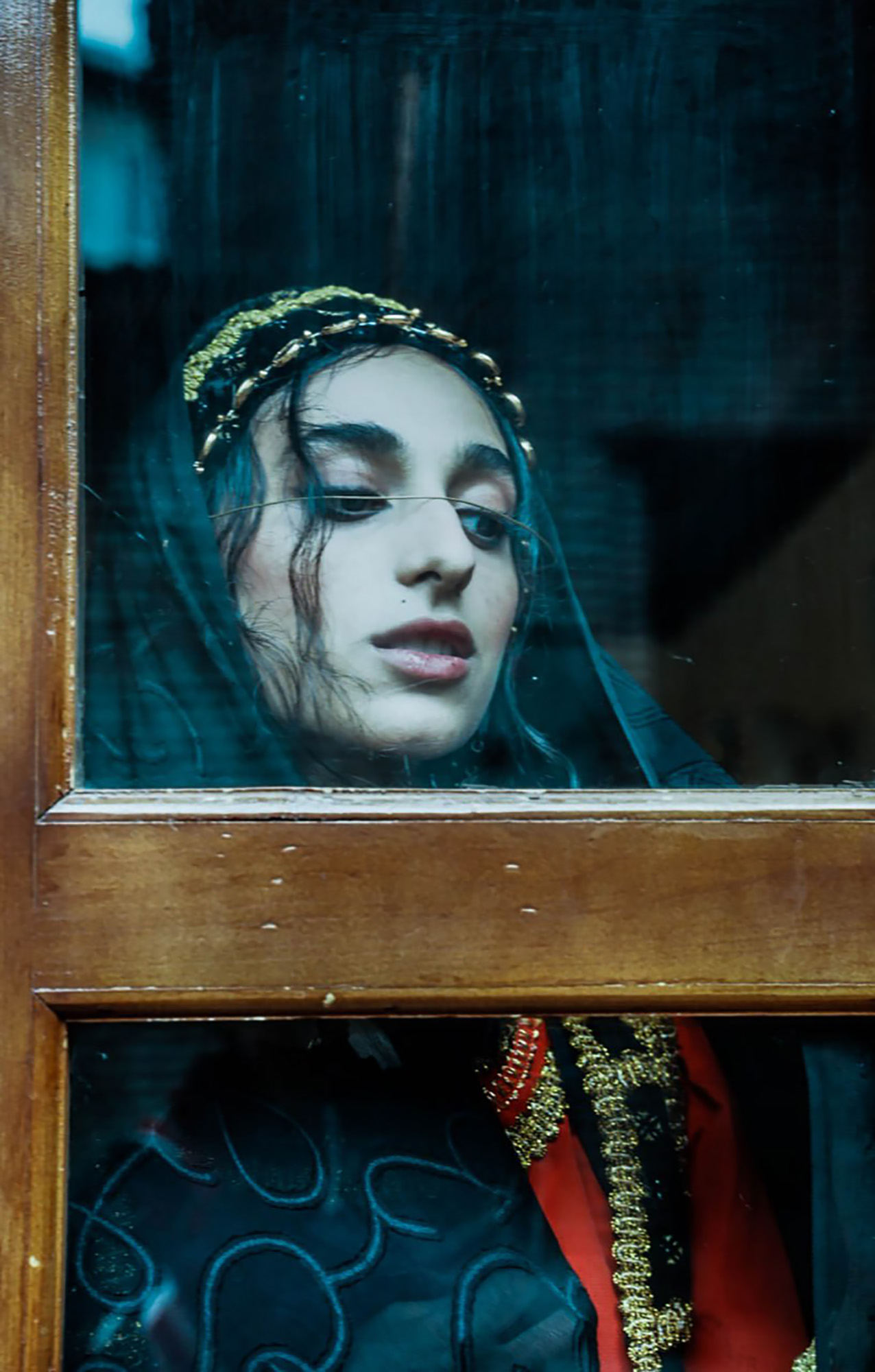
Within the frame of this window, we see the soul of an Iranian woman immersed in profound silence. Her gaze is a window into her inner world; a world filled with unspoken words and a long wait for her beloved. The cold, soft light illuminates her face, emphasizing the depth of her sorrow and longing. Her eyes, like two small windows, provide us with a glimpse into the depths of her emotions. This woman, in her silence, cries out and expresses a thousand words with her gaze. She is a symbol of the Iranian woman who, throughout history, has stood strong in the face of adversity and has waited with hope for a better future.”
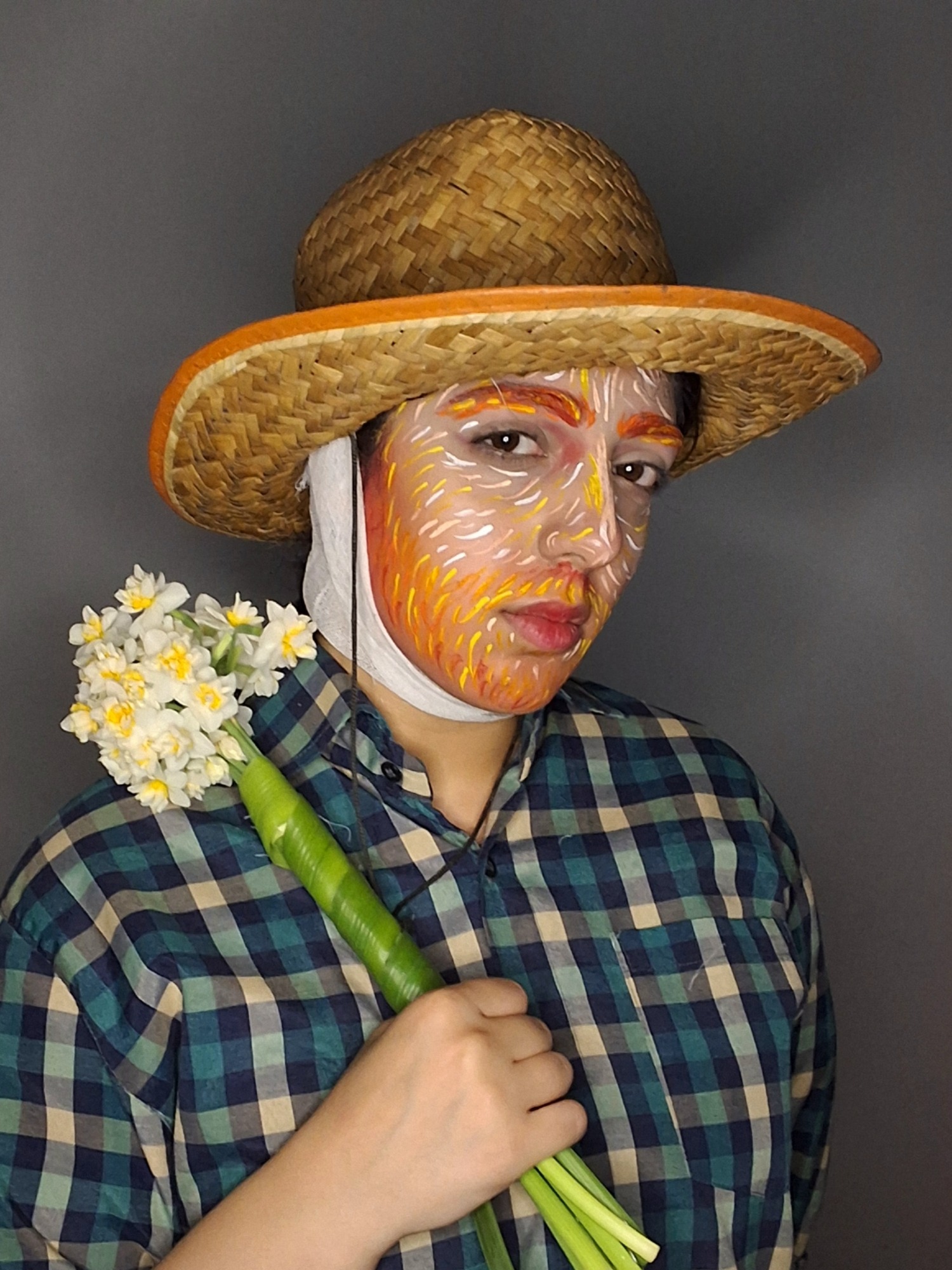
If reincarnation is a reality, many people entering art museums may not realize that these artworks are the result of their own creativity or that they have played a role in those experiences. Let’s imagine what images emerge if we look at visitors through the frames in the museum, considering them as the actual owners of these pieces.
This concept emphasizes not only the feeling of ownership in art but also confronts visitors with a sensation known as deja vu. They may feel that they have seen these works before and that the emotions evoked are familiar, but they are unaware of the deeper roots of their own artistic experiences.
The sense of deja vu reflects the deep connections between art and its viewers, suggesting that these pieces can trigger memories of our past experiences. The artistic experience combines with the dark, high-contrast lighting of my work, immersing the viewer in a space rich with historical and meaningful context.
This statement aims to encourage visitors to recognize their role as not just spectators but as an integral part of the artistic narrative. Through this interaction, we can discover how art can remind us of our identity and history, revealing the connections that exist between us and the artworks.
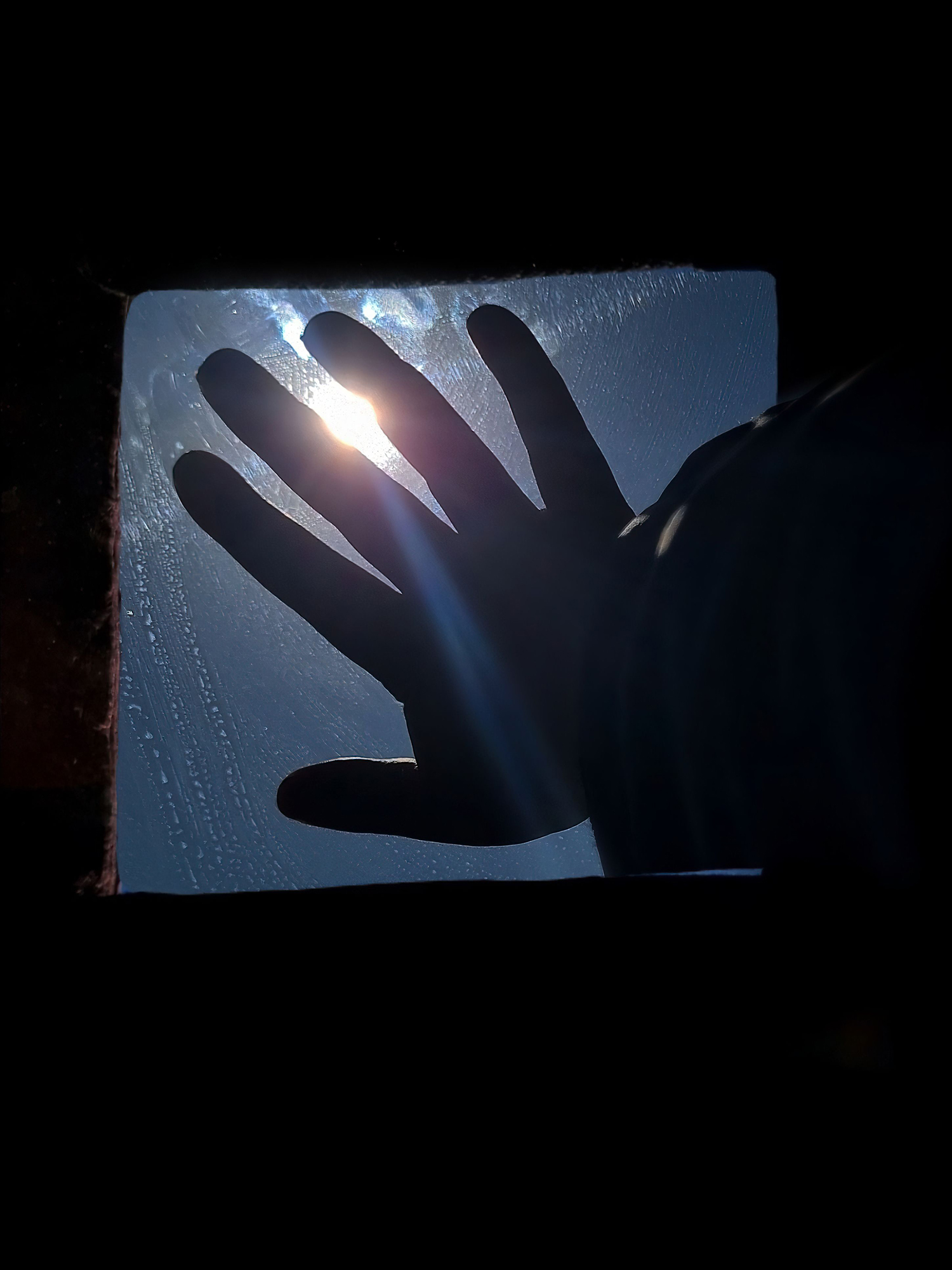
In the present work, through the imagery of a small window leading to the sky, I delve into the complex emotions portrayed in the book „Room.” This book narrates the life of „Jack,” a sweet child who is imprisoned in a small room, with his only connection to the outside world being a tiny window in the ceiling. For „Jack,” this window is the only indication that the world and life exist beyond his confinement.
The dark and high-contrast lighting of my piece portrays a sense of anxiety and loneliness. Anything that falls on or can be seen through the window becomes an extraordinary and fascinating event for „Jack.” He watches life and the changes in the outside world through this portal, with each image symbolizing his hope and curiosity. Additionally, this window serves as a reminder of the freedom taken from his mother, stirring memories of her connection to the outside world.
Thus, this piece not only illustrates captivity and imprisonment, but also symbolizes hope and yearning for liberation. The small window acts as a conduit and connection point through which individuals can explore life and realities beyond their constraints.

The window serves as a symbol of freedom and the opportunity to see the world outside, allowing us to gain a fresh perspective on life and its beauty. In contrast, the no-parking sign, with its red symbol, imposes limitations that represent the rules and constraints we face in life. This contrast between the window and the sign can be viewed as a metaphor for the challenges we encounter in our lives. In today’s world, we are constantly faced with choices that require us to strike a balance between freedom and responsibility. This image reminds us that while we can look out into the world and draw inspiration from it, we must also pay attention to the limitations and rules that govern our lives. These two elements, the window and the sign, teach us how to pursue freedom while also adhering to our responsibilities in a complex and challenging world.
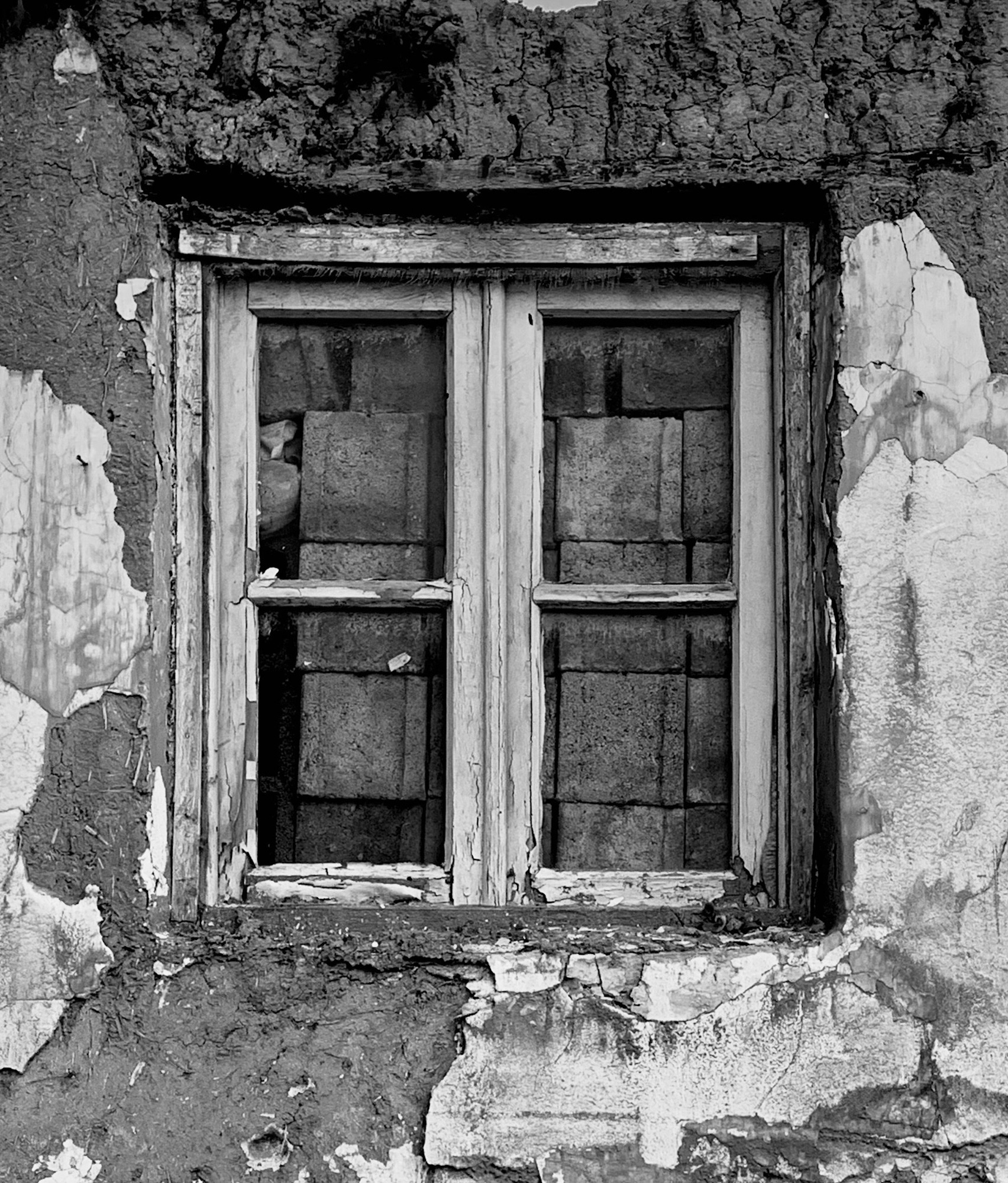
Secrecy and Mystery: The blocked view can indicate secrecy and hidden truths. Behind these blocks and bricks, there may be stories and emotions that we do not wish to reveal to others.
Hope for Reopening: Although the window is blocked, it can symbolize hope for reopening and change. This can mean that with effort and determination, we can overcome obstacles and regain access to the outside world.
Past Experiencees: This window may represent past experiences that still affect us. The blocks and bricks can symbolize wounds and memories that hold us back from progressing.
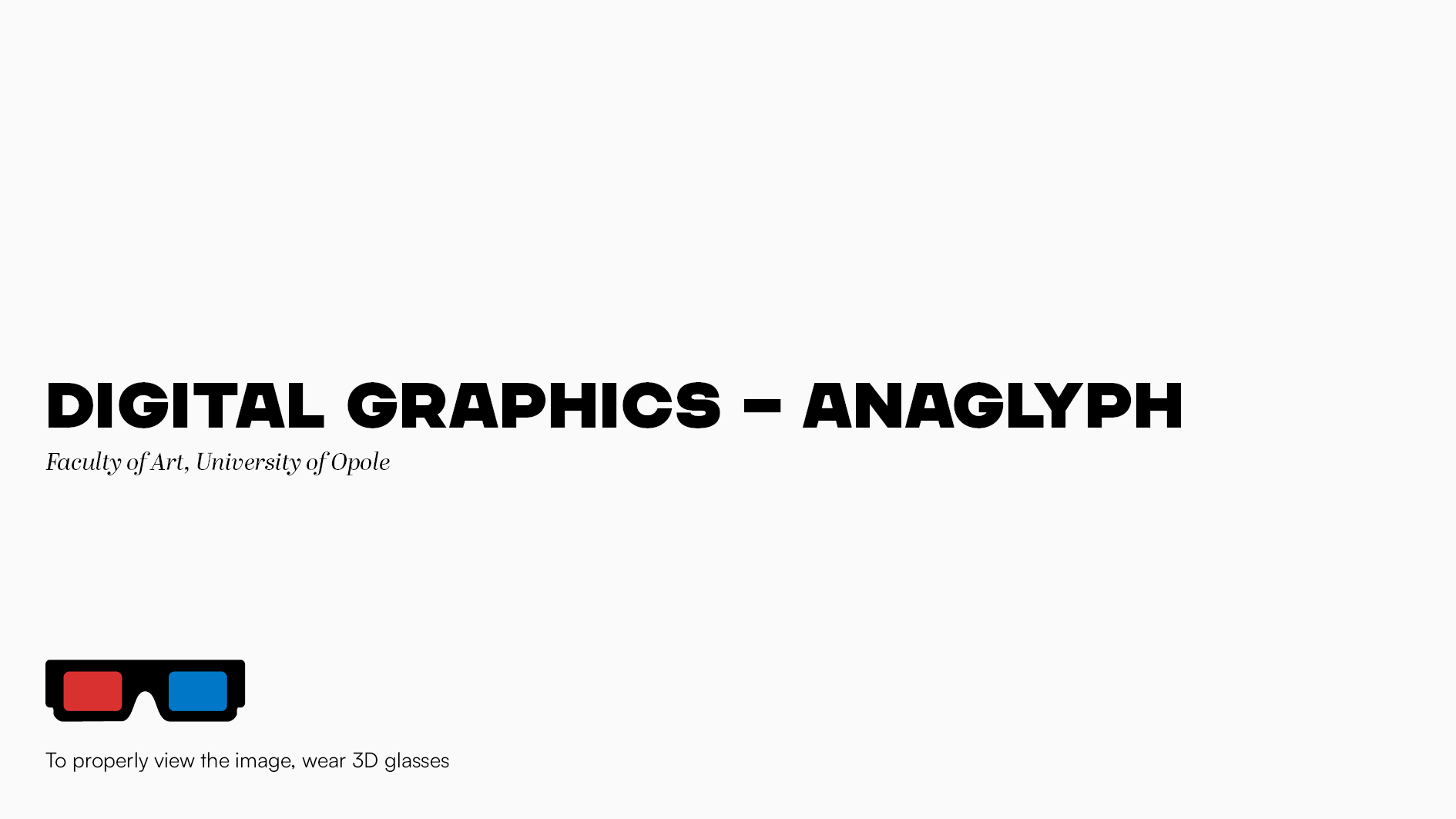
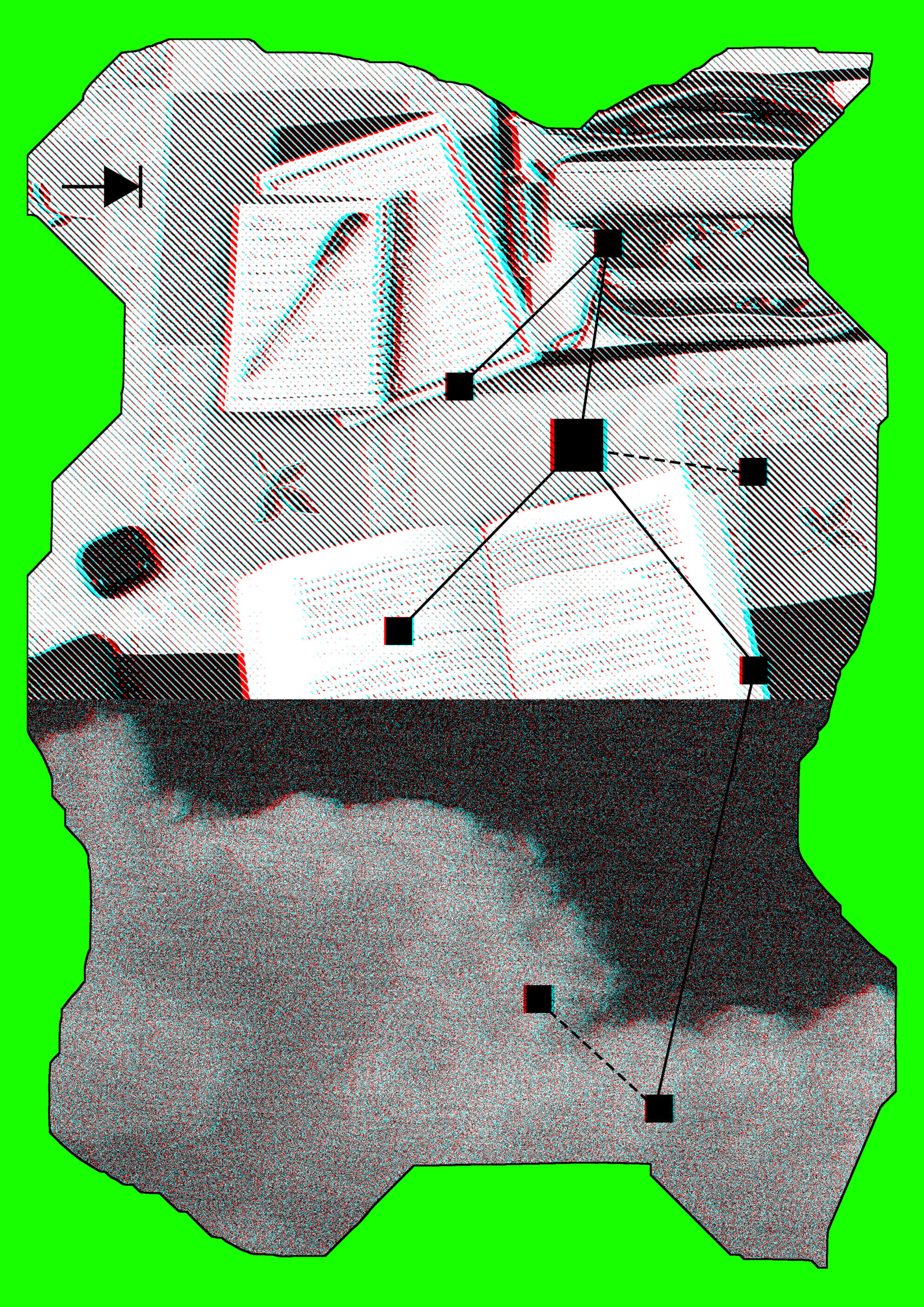
Inspired by the photograph of Fatemeh Mohammadi
My artwork represents the experience of depersonalization, a dissociative state where individuals feel disconnected from their body and identity. The fragmented composition and distorted depth reflect this sense of detachment from reality. The visual elements illustrate the struggle to maintain a stable sense of self.
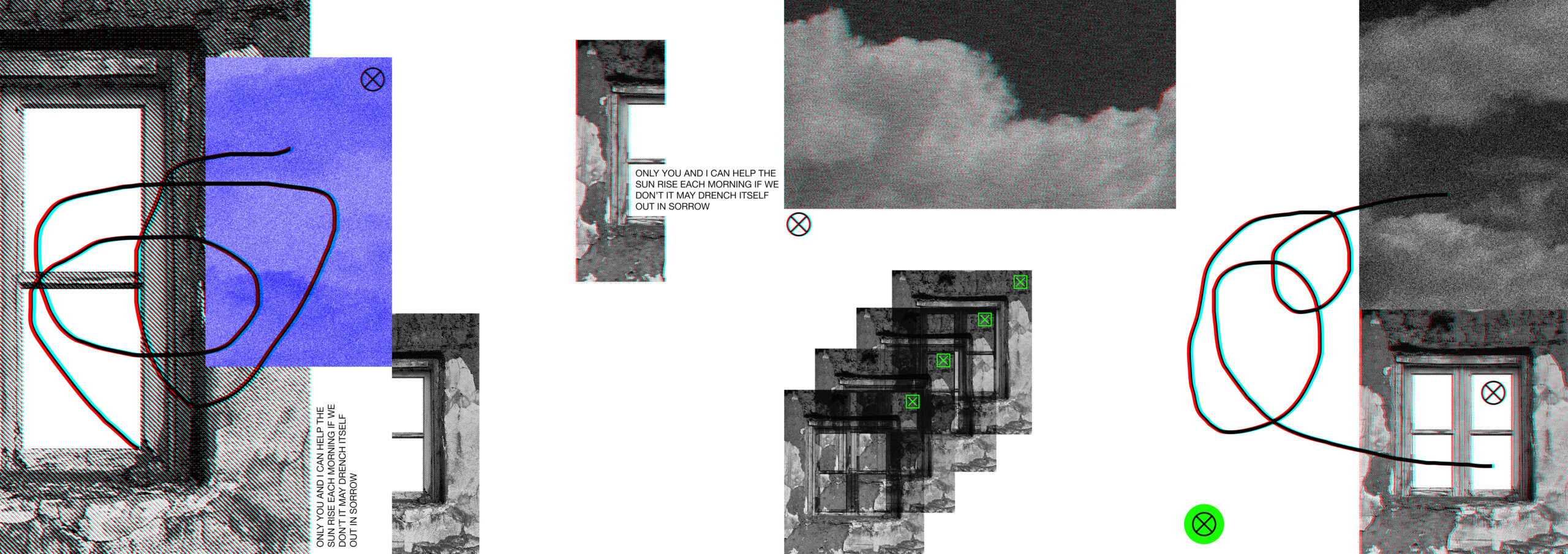
Inspired by the photograph of Zahara Vafaee Nejad
This work explores the connection between openness and support. The windows, although open to chaos, also let in light—symbolizing hope and togetherness. In uncertain moments, we find balance through human connections, helping and uplifting each other.
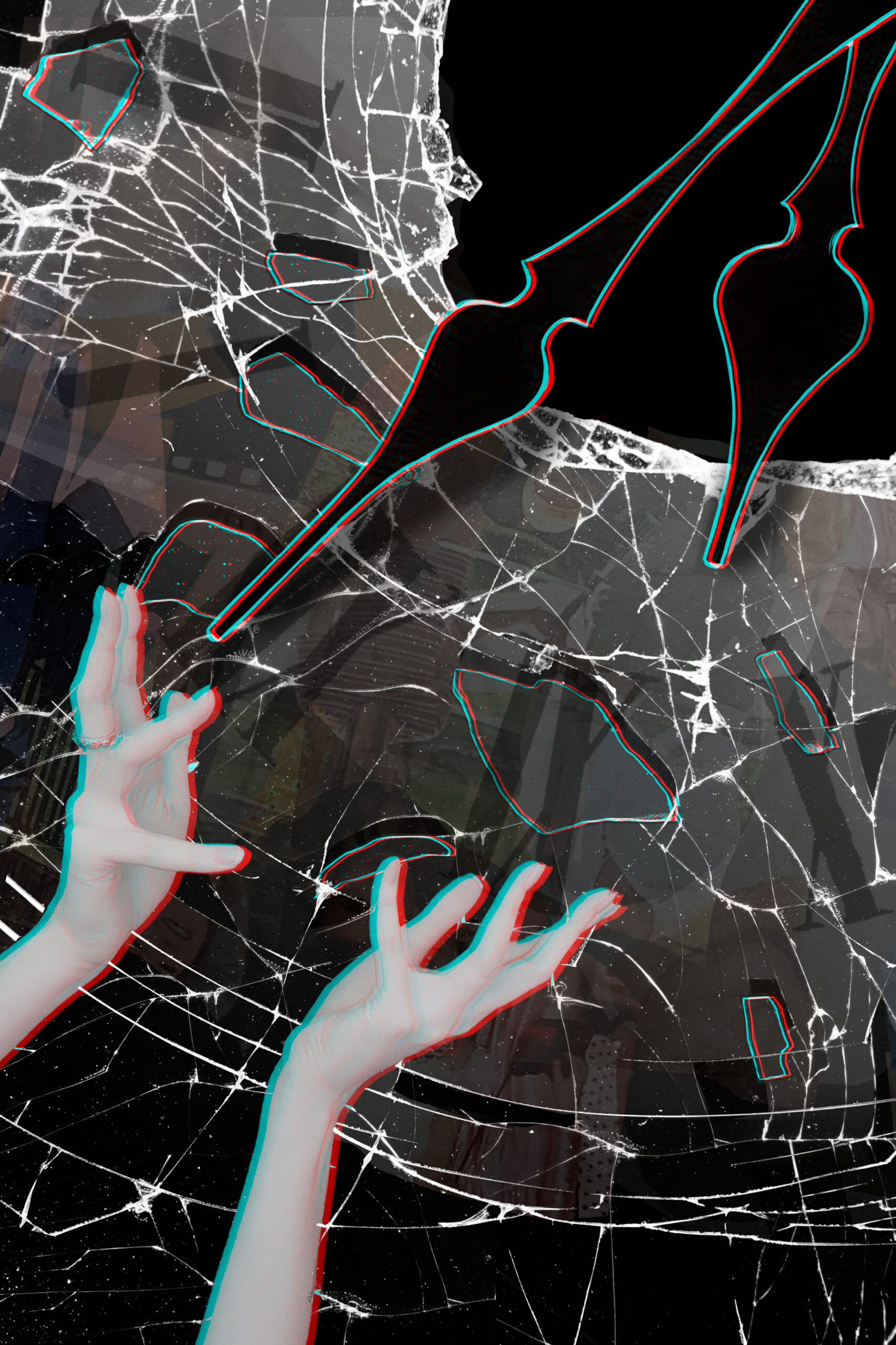
Inspired by the photograph of Ghazale Shakourian
People often get lost in the past, forgetting that time does not stop with them but moves forward. We try to keep the moments we miss, but they are as fragile as the glass of a clock face, which cracks under the ticking, turning into dust.
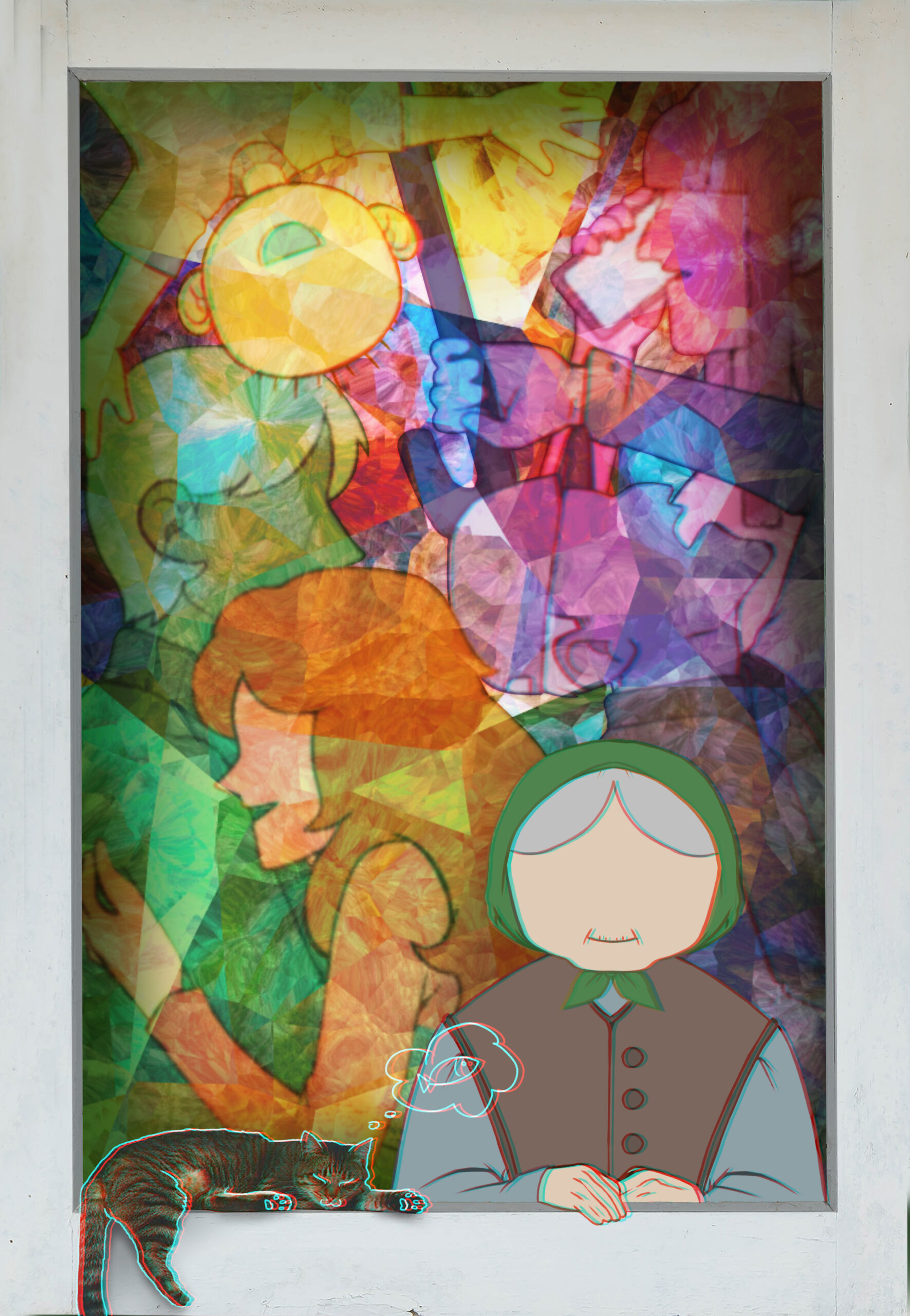
Inspired by the photograph of Setayesh Zare
Observing the windows from our grey, gloomy reality, we can see and hear the vibrant life of the household members. Sometimes, walking down the street, we notice eldery people in the window, who observe the outside world and smile at people passing by. In my interpretation, I wanted to present my work in a graphic way, like the graffiti in the photo by Setayesh Zare.
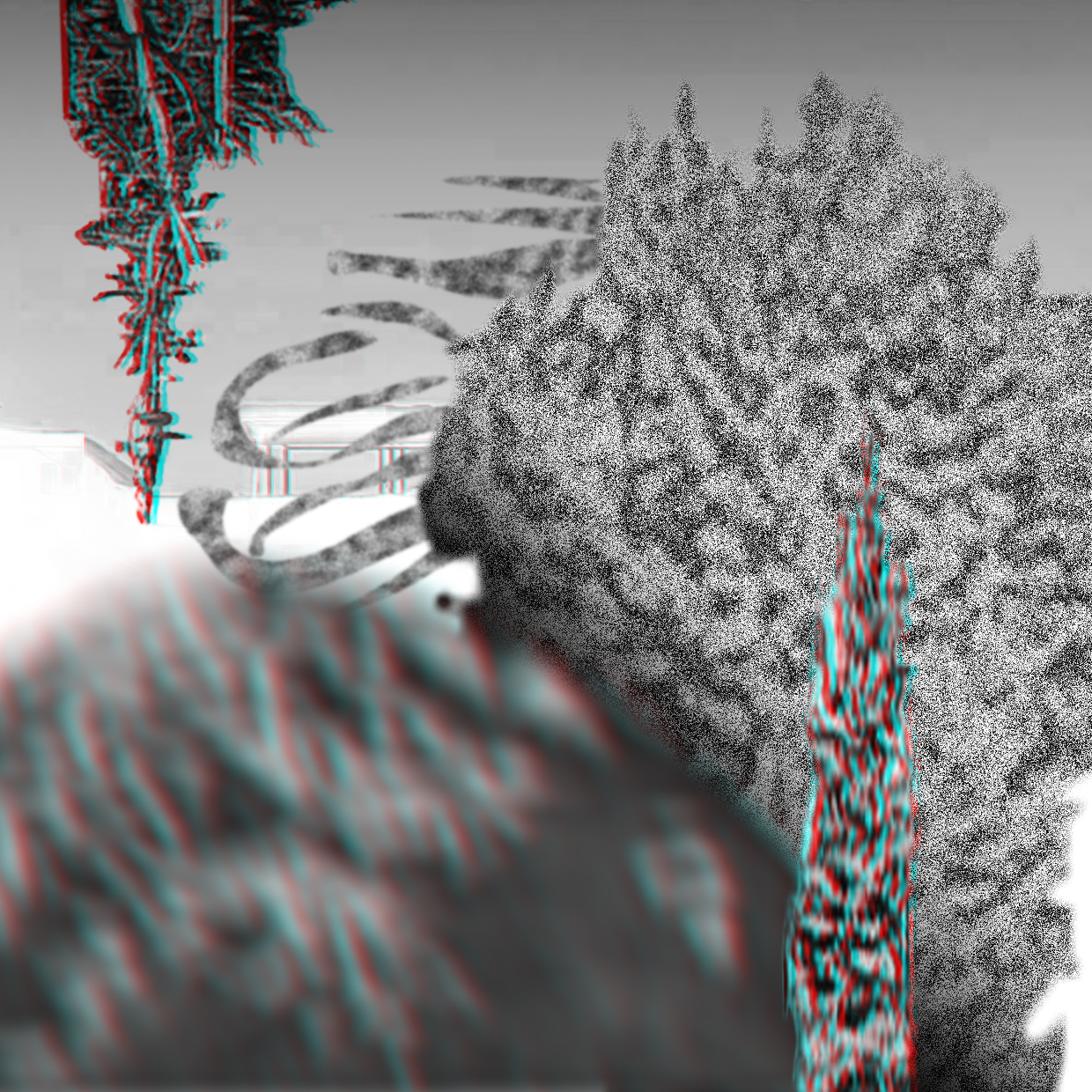
Inspired by the photograph of Arghavan Bostani

Inspired by the photograph of Baraneh Anvari
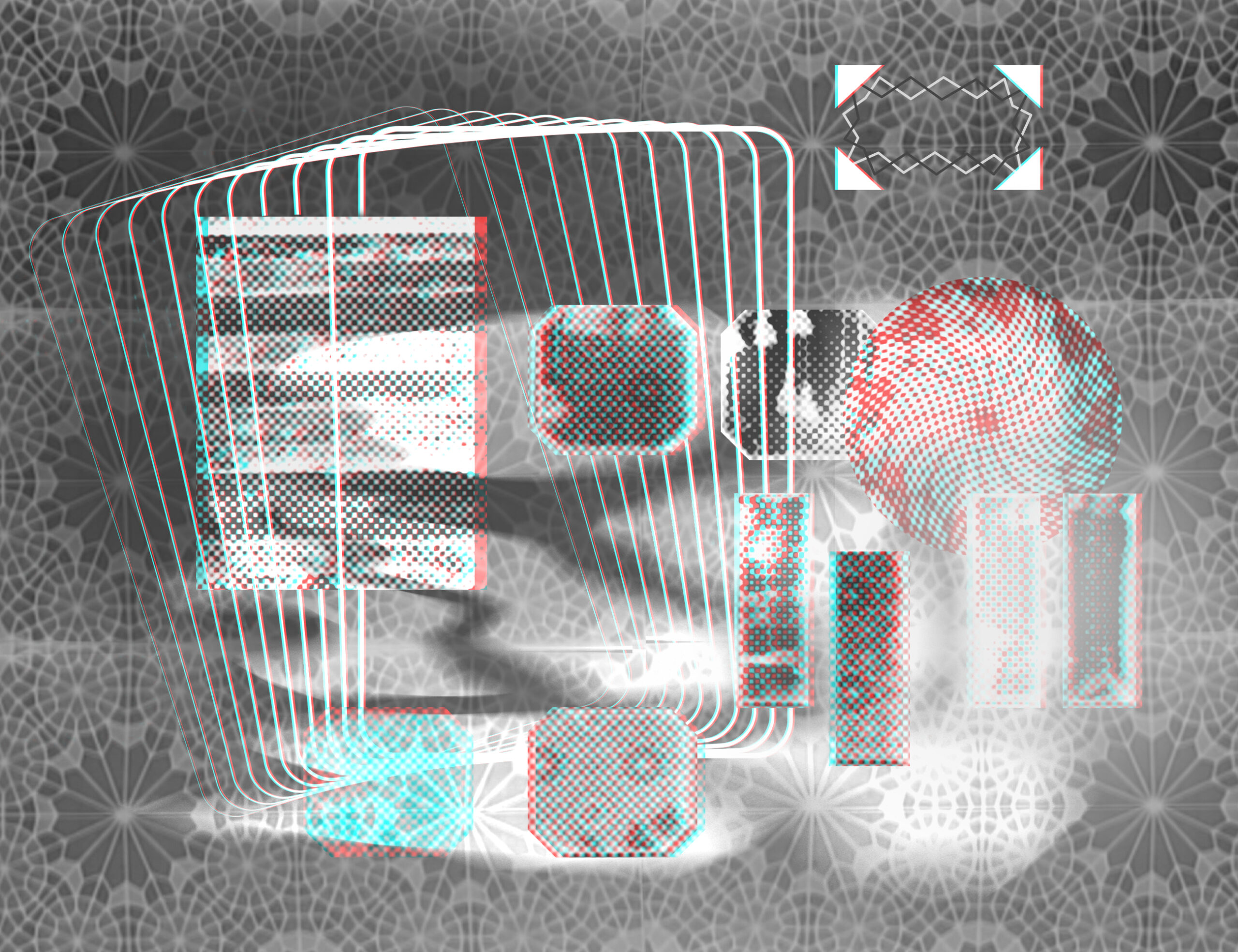
Inspired by the photograph of Jeyhoon Dieji
My own interpretation of that photo was inspired by the thought about how everything is interconnected over time. The cut-out elements float in space, imitating fragments of memories, while used graphic techniques can symbolize connections and transitions between the past, present and future.
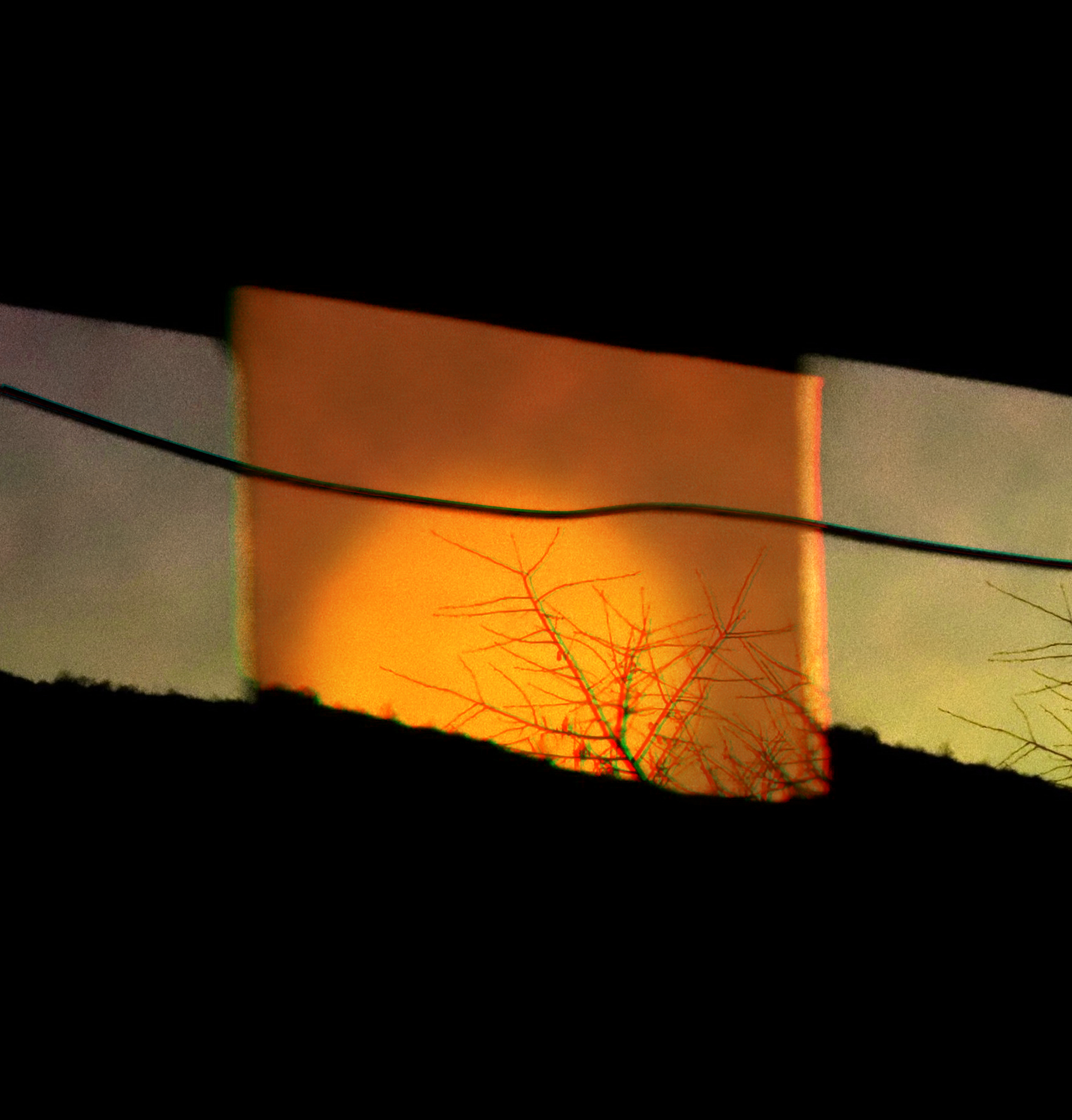
Inspired by the photograph of Sara Amini
My interpretation captures the bittersweet beauty of a sunset, where warmth and sorrow coexist. It’s about evoking melancholy of both sad and happy moments in life, like when you’re looking at the old pictures on a film strip.
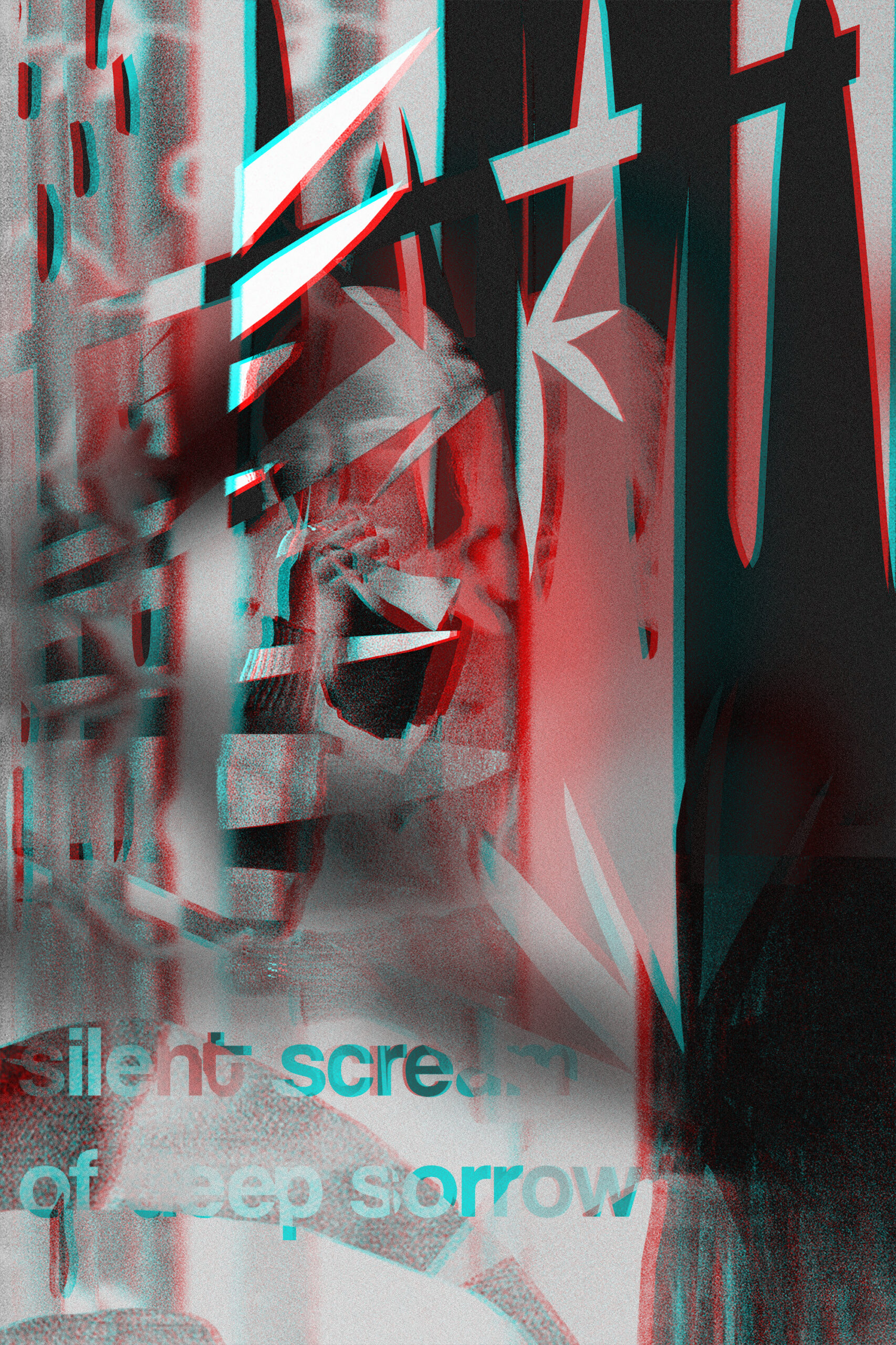
Inspired by the photograph of Hasti Tofighi
Inspired by photography, where the window is a symbol of “imprisonment and endless waiting”, I wanted to reveal what is invisible to the naked eye. What hides in silence filled with emotions.
Each element of the collage is a reflection of the mental state of the character outside the window, but you can fully experience what the woman is experiencing only if you put on special glasses. Longing, sadness, suffering and hope emerging from the image, surrounding the viewer and drawing them into another dimension. A dimension in which emotions are visible.
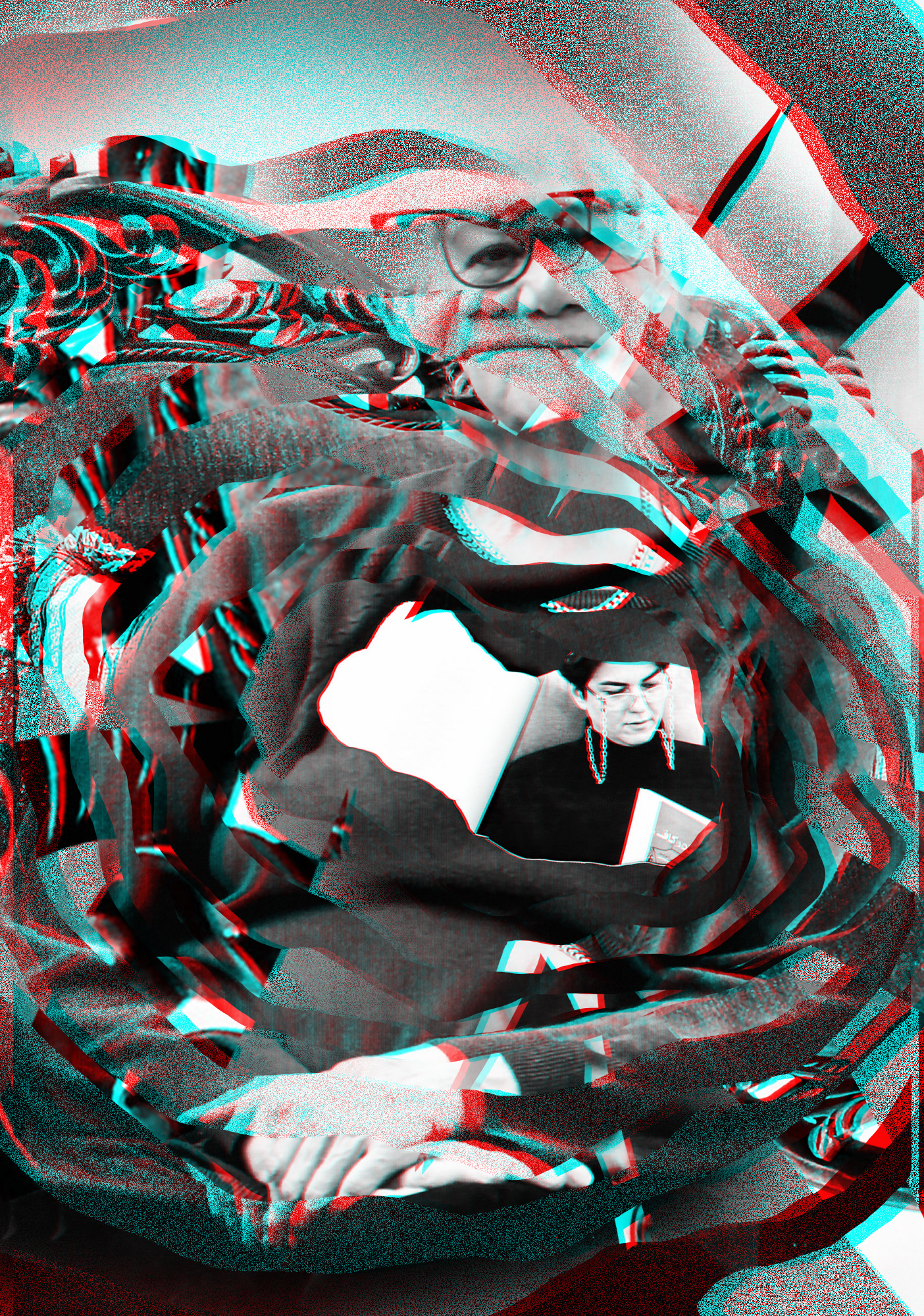
Inspired by the photograph of Mojan Valaei
A mirror as a boundary between the present and the past. Using the anaglyph technique, I created a portal that allows us to enter the heart of an older woman – a heart filled with love and warmth. To get to know all those people who are close to Her and to whom She is close.
The portal distorts reality and gives us the opportunity to focus solely on the memory and the person who is a part of it.
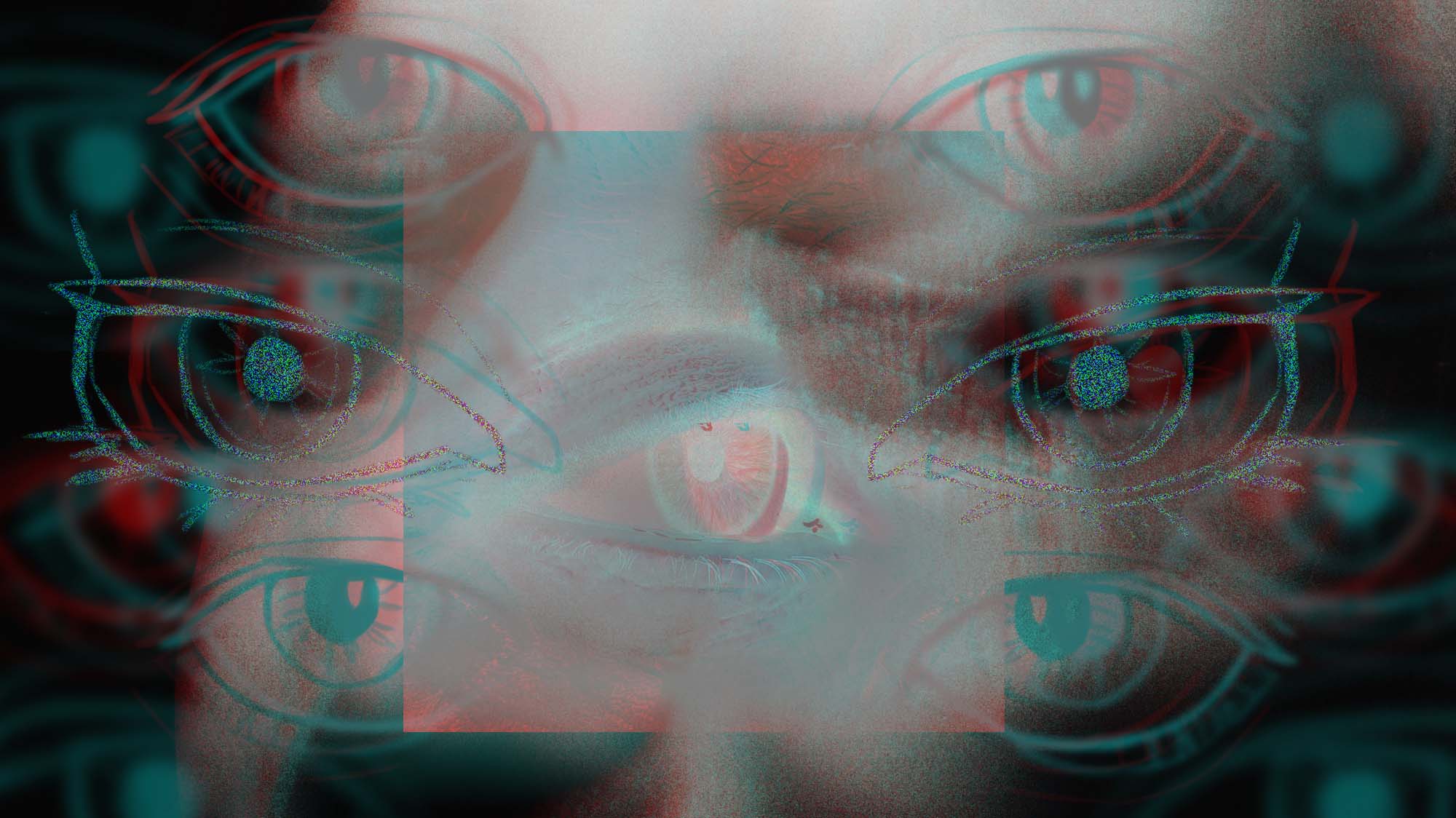
Inspired by the photograph of Mahtab Nabizadeh
The work was created in response to photographs and a description by Mahtab Nabizadeh. I wanted to reflect the idea that was the main theme: the eyes as the window of the soul.
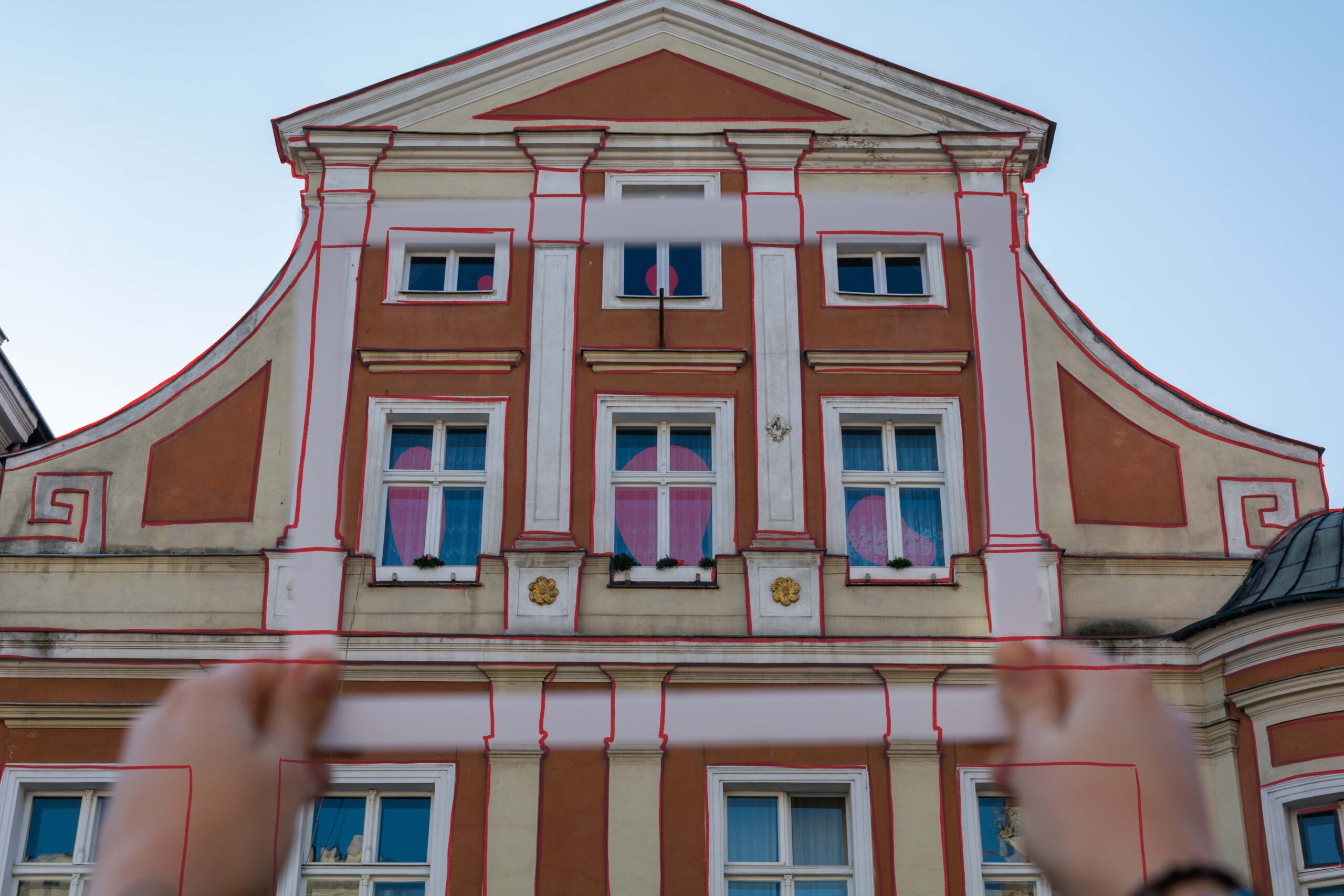
Inspired by the photograph of Sara Momeni
The work was created in response to a photograph and description by Sara Momeni. The author of the photograph drew attention to the architecture that surrounds it, looking also at its symbolic meaning in history and culture. Buildings that are witnesses to events of the past, present and also future.
In my response, I wanted to refer directly to the form of the photograph, to frame the architecture around me, and to use it as an element that separates the past from the future.
When one looks through the 3D glasses with both eyes we see an image of the present, if we close one eye, some elements disappear, others become more visible.
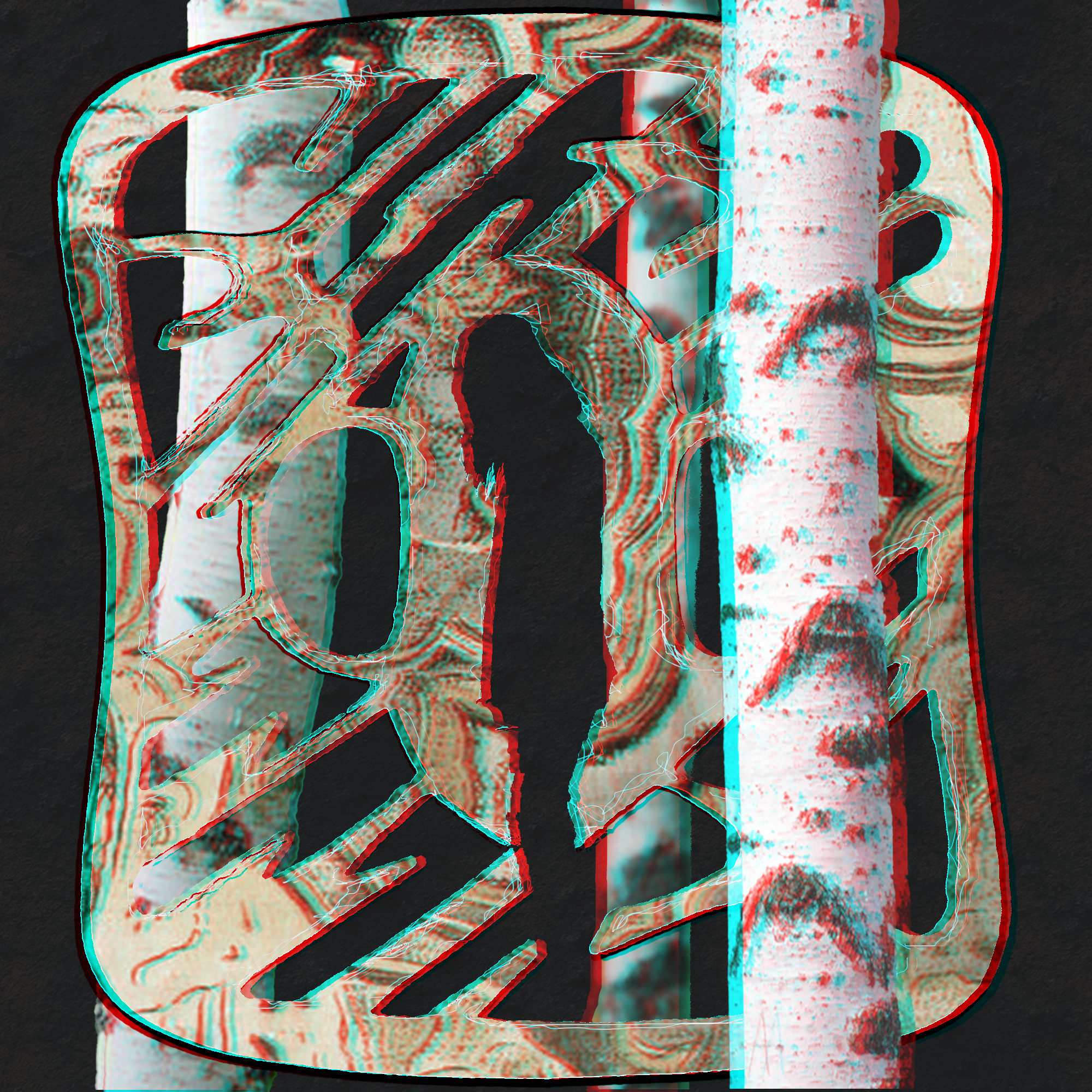
Inspired by the photograph of Mahla Zyarati
A window can be opened to the world or create a safe barrier between us and it. Similar to the guard, which is the part of a sword that protects us from an opponent’s blow to our hand, but also from slipping towards the blade. Birches in slavic mythology symbolize a place of rest and regeneration with magical properties.
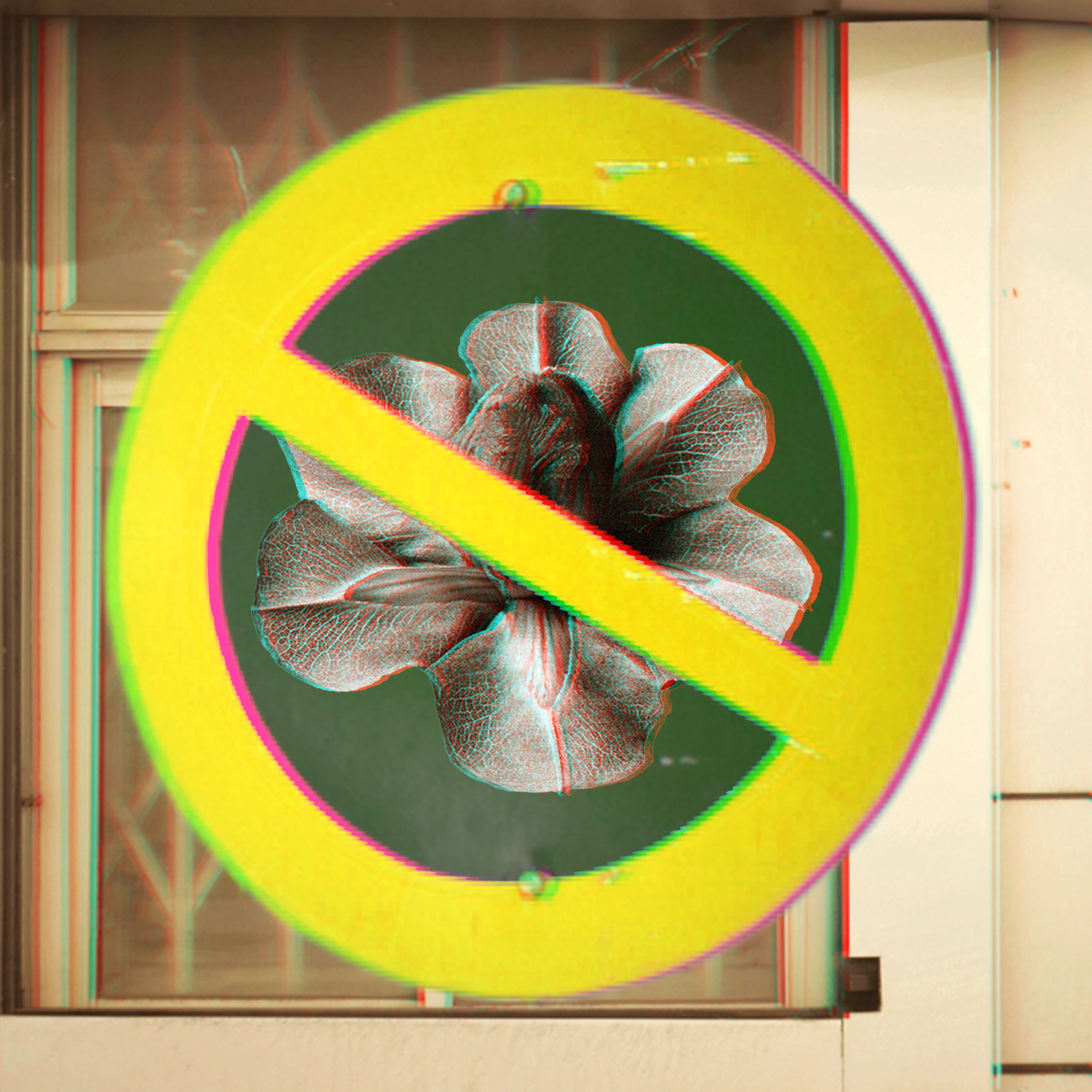
Inspired by the photograph of Zahra Khodaie
The duality of a window that allows us to see the beauty of the outside world, while at the same time slightly distorting the image and separating us from reality.
“Tell me the reality is better than the dream
But I found out the hard way
Nothing is what it seems”
– from Duality by Slipknot
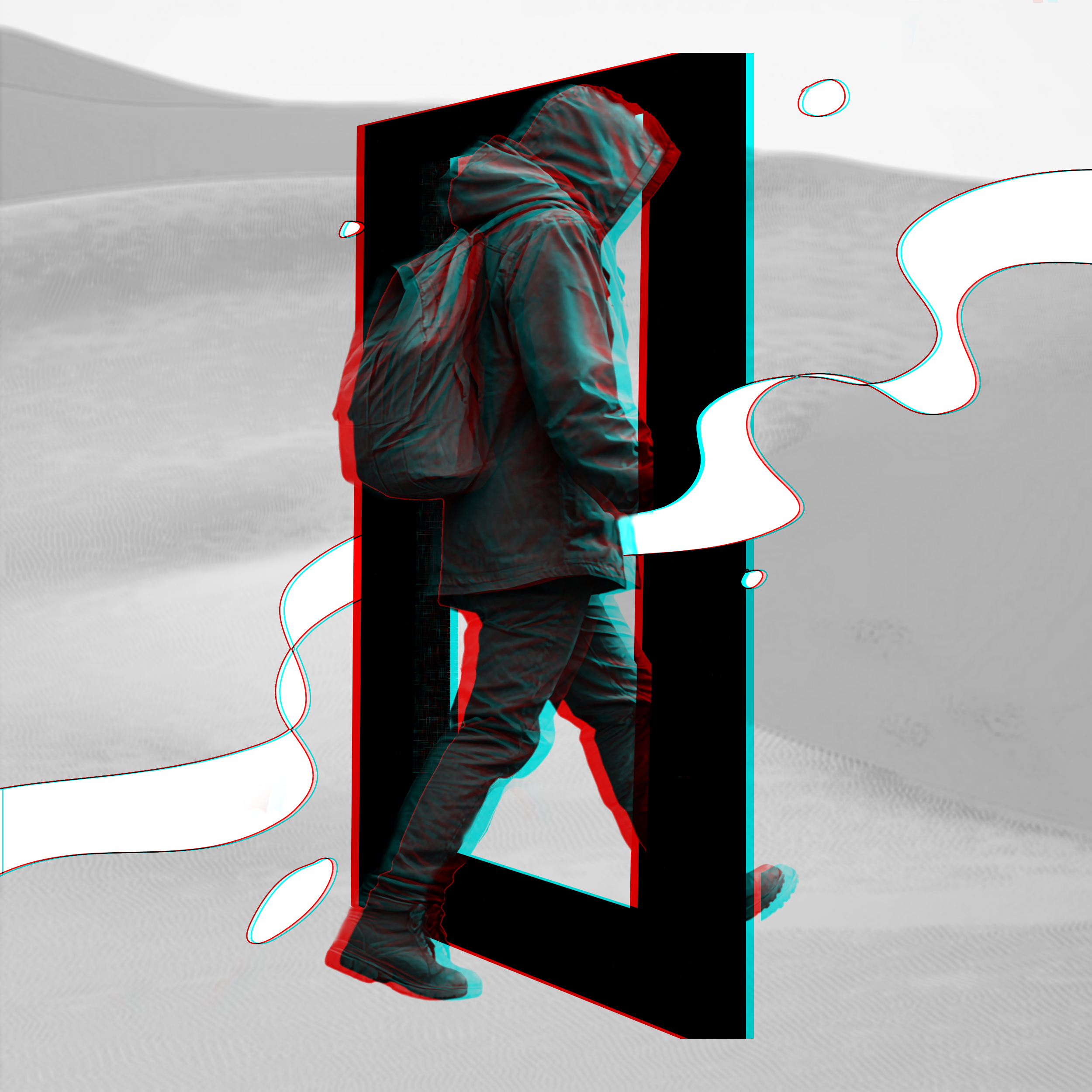
Inspired by the photograph of Narges Khoshdel
In Gotta Go, I explore the tension between escape and confinement, much like Narges Khoshdel described in their work. My work captures the urge to flee, yet unseen barriers linger, holding back true freedom. Light and shadow play a crucial role, emphasizing the contrast between the promise of liberation and the weight of constraint. The spaces I depict may seem open, but they carry an underlying sense of entrapment—just as a window can offer a view of the outside world while still keeping one enclosed.
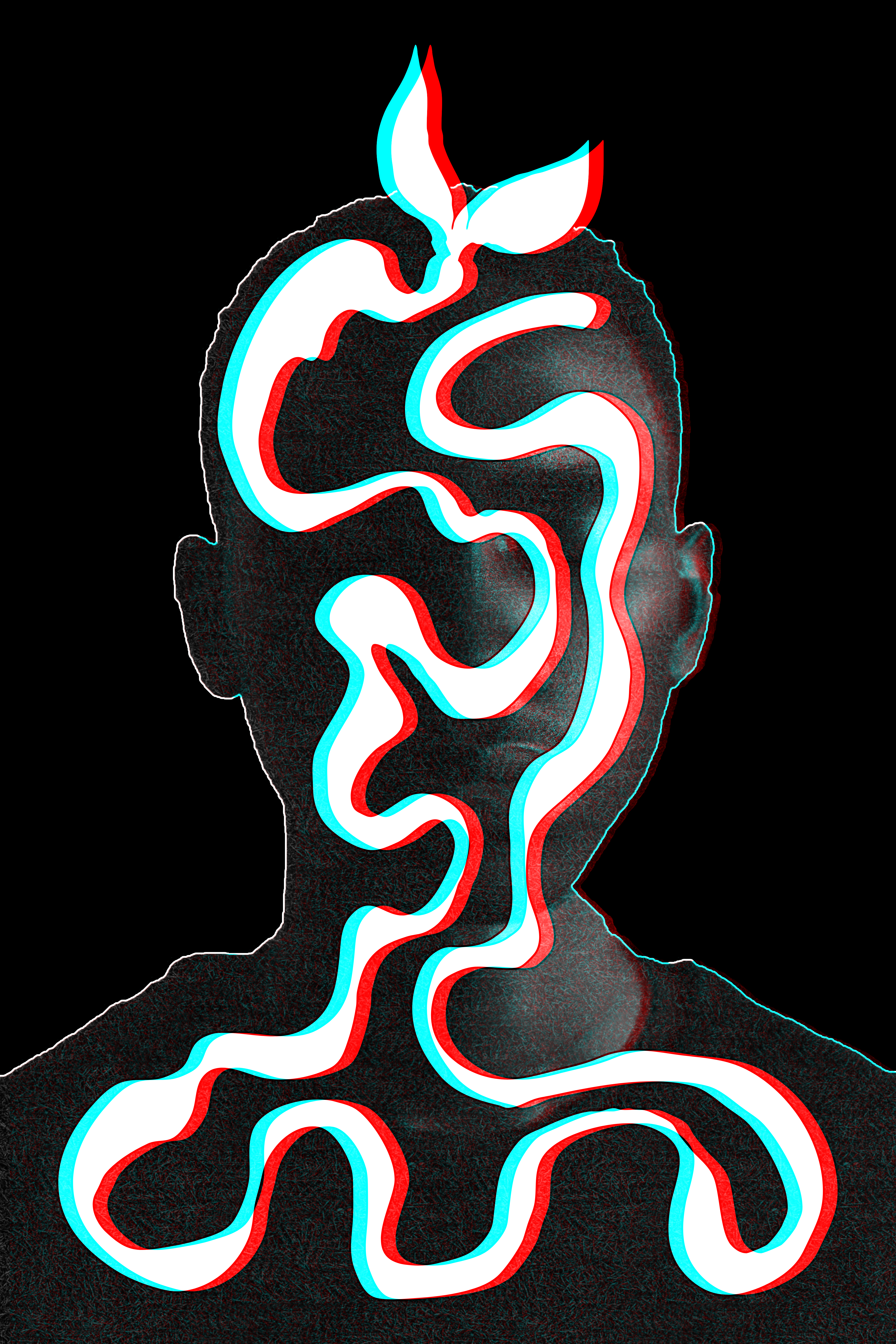
Inspired by the photograph of Parisa Zabihollahi
My artwork, I’ve Grown, explores transformation and the connection between humans and nature, much like Parisa Zabihollahi’s text. The figure, overlaid with a grass pattern, merges with white vines that stretch across him, symbolizing both growth and entanglement. The black background isolates him, emphasizing his evolution. Just as Zabihollahi’s work captures the vitality of nature, I’ve Grown reflects how growth—whether in plants or people—is shaped by time, environment, and unseen forces.
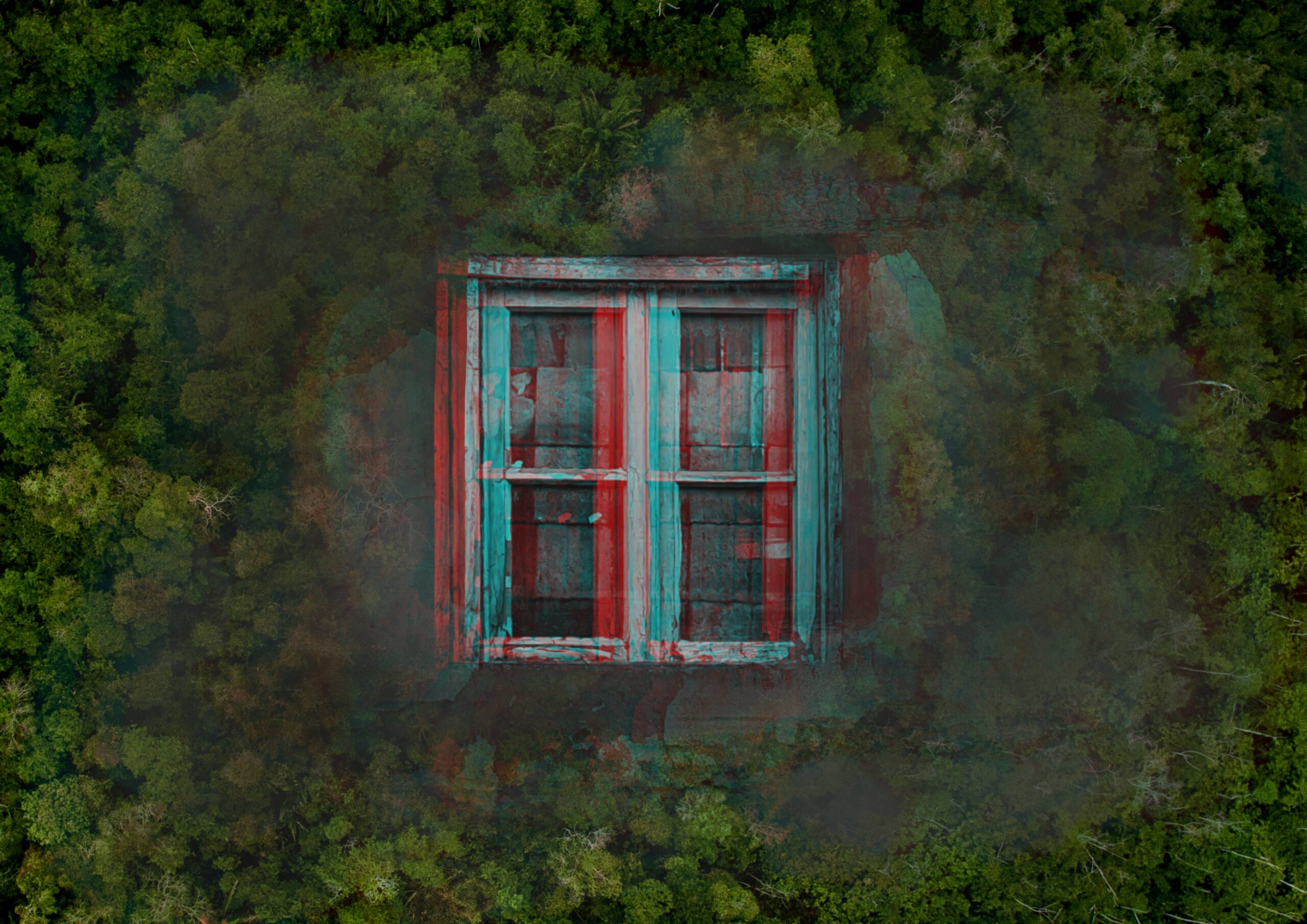
Inspired by the photograph of Narjes Asadi
Return to nature. Nature should be our window to the world, but we are moving away from it more and more. We have lost ourselves in consumption, rush and love of GDP growth. We have loved quick solutions and everything what is processed. By turning to nature you will discover the truth about yourself and the human species. Living closer to nature, you live closer to yourself.
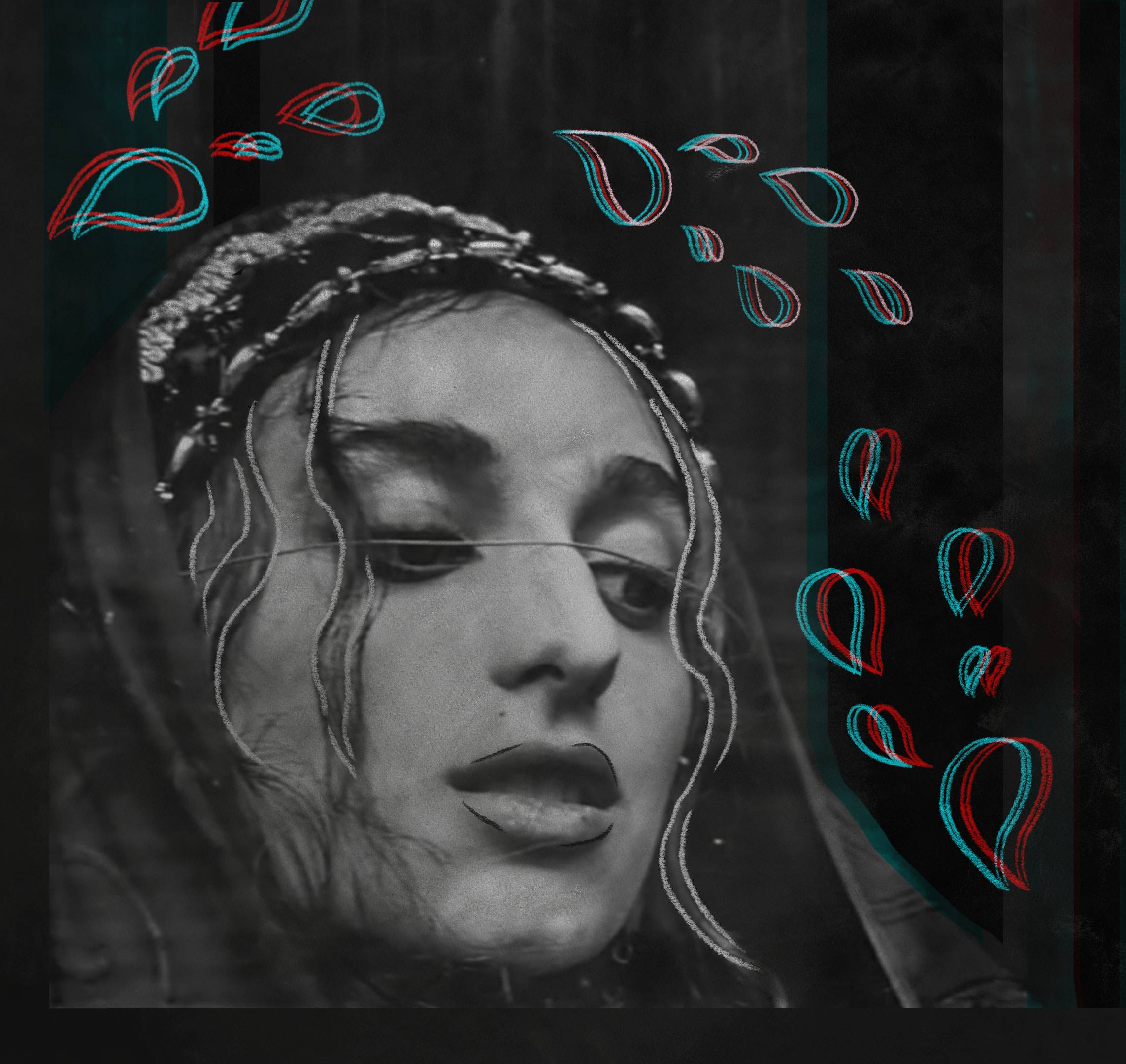
Inspired by the photograph of Yalda Bagheri
I look into nothingness. There is nothing. It is absolutely silent. The void has become a part of my body and mind. The feeling of emptiness is a way of life.

Inspired by the photograph of Mahdis Ebrahimi
Isn’t the light at the end of the tunnel beckoning? It can seem scary when you don’t know what to expect from it. But it will wait as long as necessary, until you overcome your fears and get to know him.
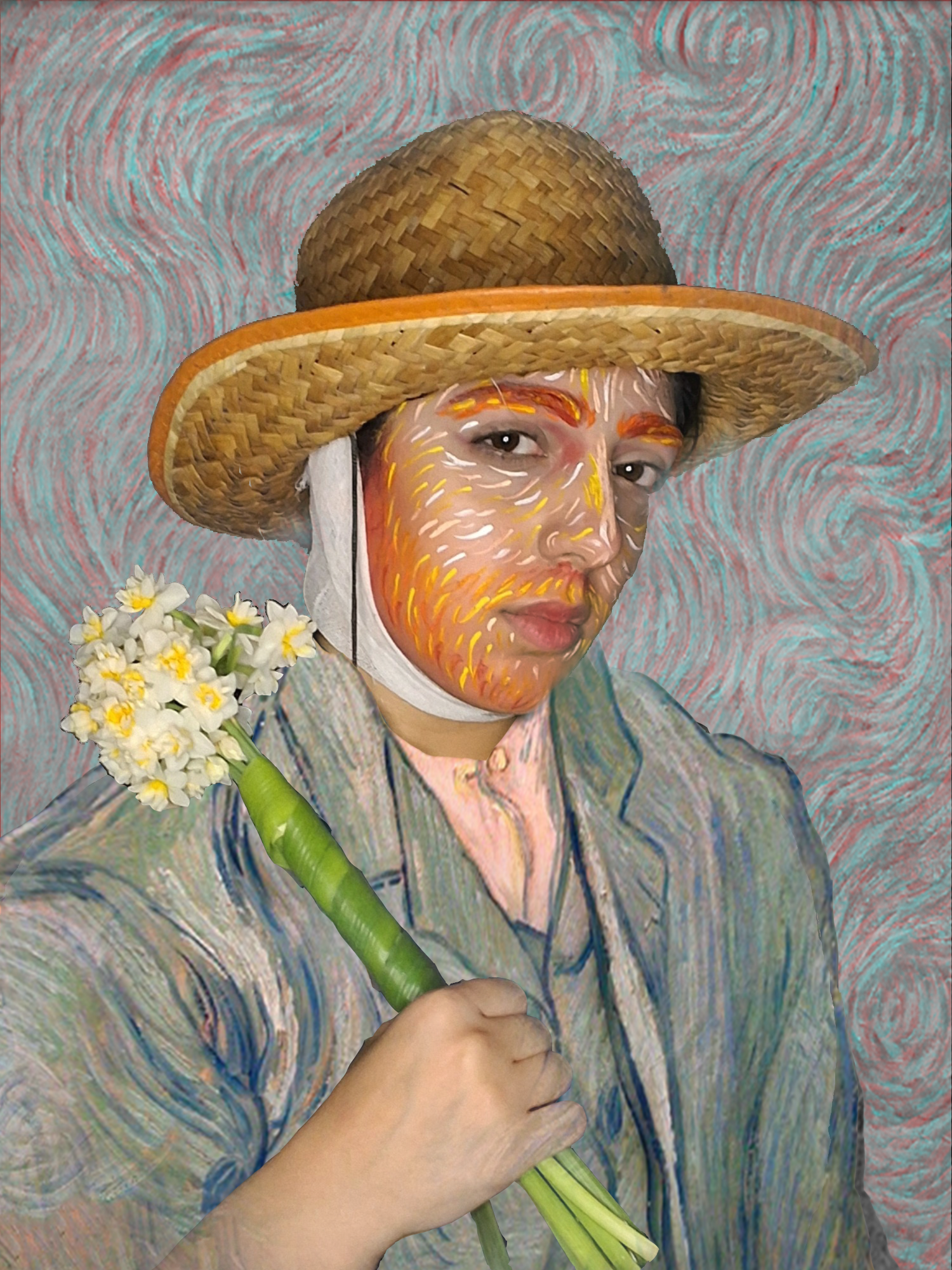
Inspired by the photograph of Zahra Alimagham
Each brushstroke is alive and strives to reveal itself as it truly is. And where better to see this than in a gallery? The body will remember how it made such strokes in a past life and will make its presence known.
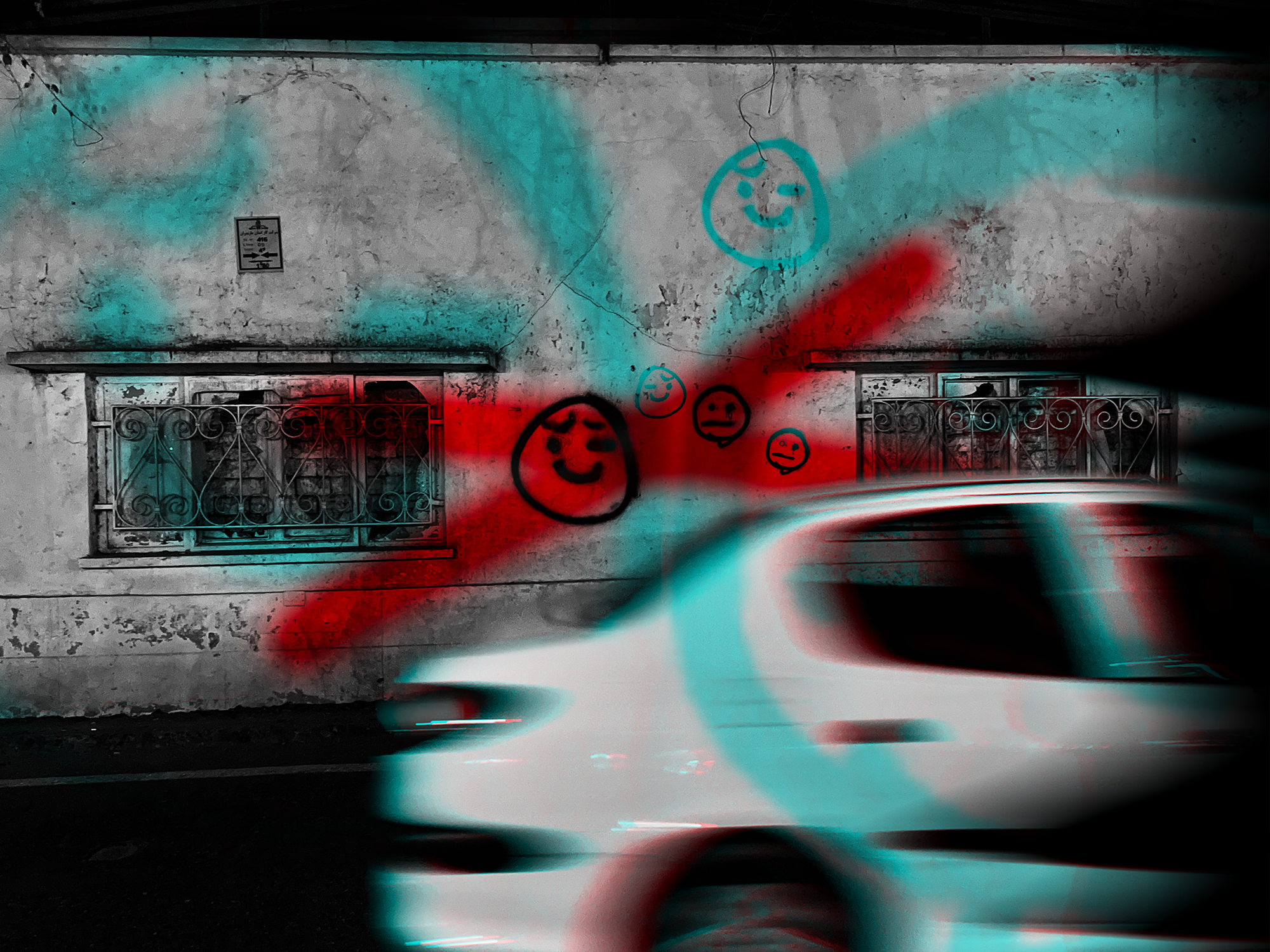
Inspired by the photograph of Mohaddeseh Ahmadi
The past is like graffiti on a wall, painted by someone long ago. Years have passed, yet it still remains, reminding us of what once was. It shows us that the past is fixed and clear. Until we use force, we will not be able to „erase” it.
The future is like a closed book, the contents of which we do not yet know. Inside it awaits surprises, challenges, and possibilities. We cannot predict the future; it is a black empty space that we ourselves must fill.
The present is the moment where the past and the future meet, creating a unique instant. Although it lasts only briefly, like a passing car, it is blurry, moving toward the future. This moment we are in is fleeting and unrepeatable.
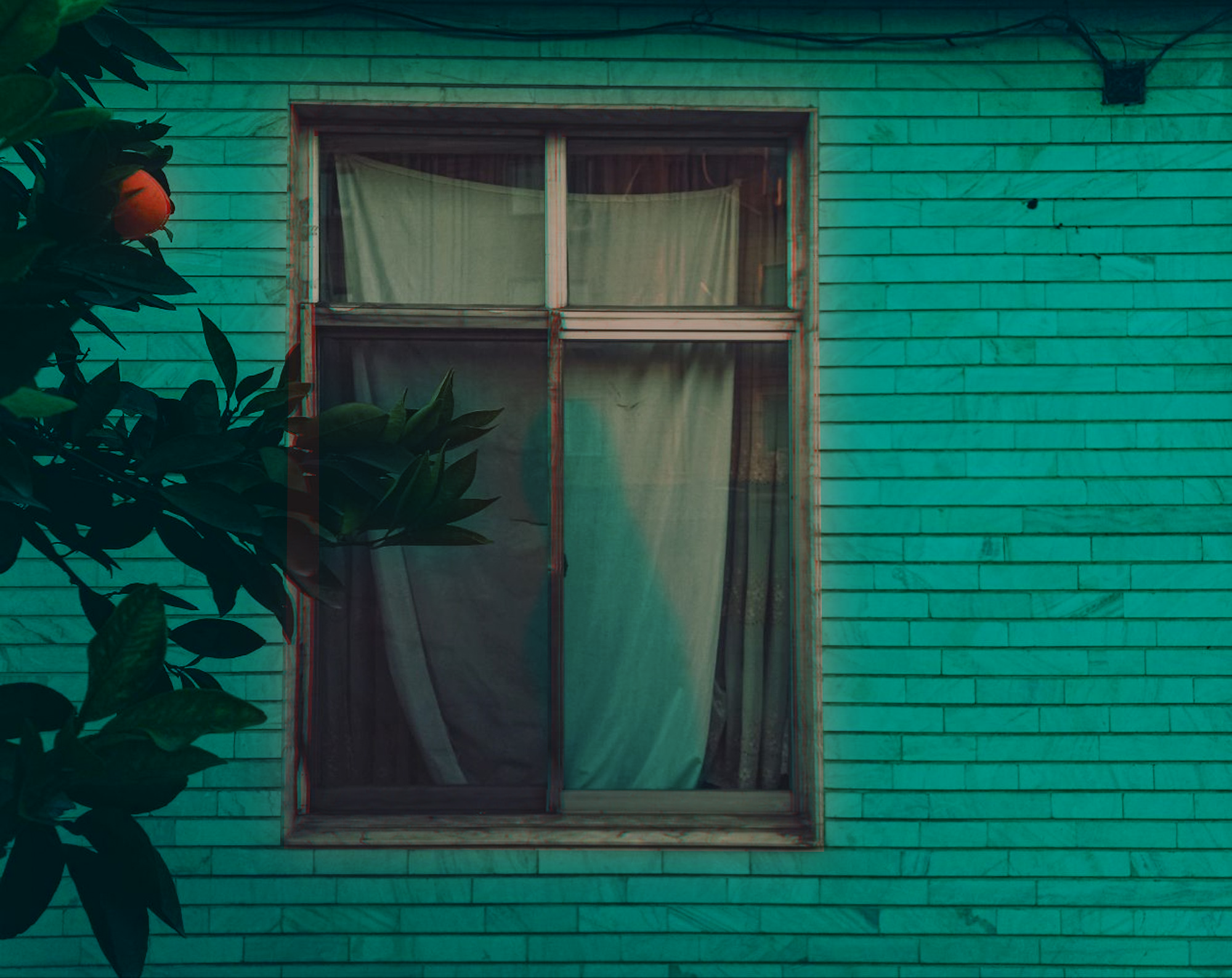
Inspired by the photograph of Negar Azarsa
Windows serve as a boundary between worlds. They allow us to peer inside, to spy on the scenes of other people’s lives. From the outside, we can observe passersby, cars, the life that unfolds. But what if we could look through a window into a person’s interior? To see their thoughts, emotions, secrets?
Sometimes, through the curtain, only the dance of shadows breaks through, as if someone were putting on their own private show. Blurry shapes and movements allow us only to guess what lies behind the curtain.
The figure we see behind the window both exists and does not. It appears only for a moment when we close one eye, as if wanting to convey something to us. But is it really there? Or is it just a play of light and shadows, a projection of our own thoughts and imaginations?

Inspired by the photograph of Ghazaleh Kazemi
The image depicts a tunnel of memories, where each subsequent layer seems to lead deeper into the past. Cracked walls, covered with traces of time and graffiti, give the place an aura of oblivion and nostalgia. The play of light and shadow enhances the illusion of depth, creating the impression of entering another reality – one full of stories that still resonate within the ruins.
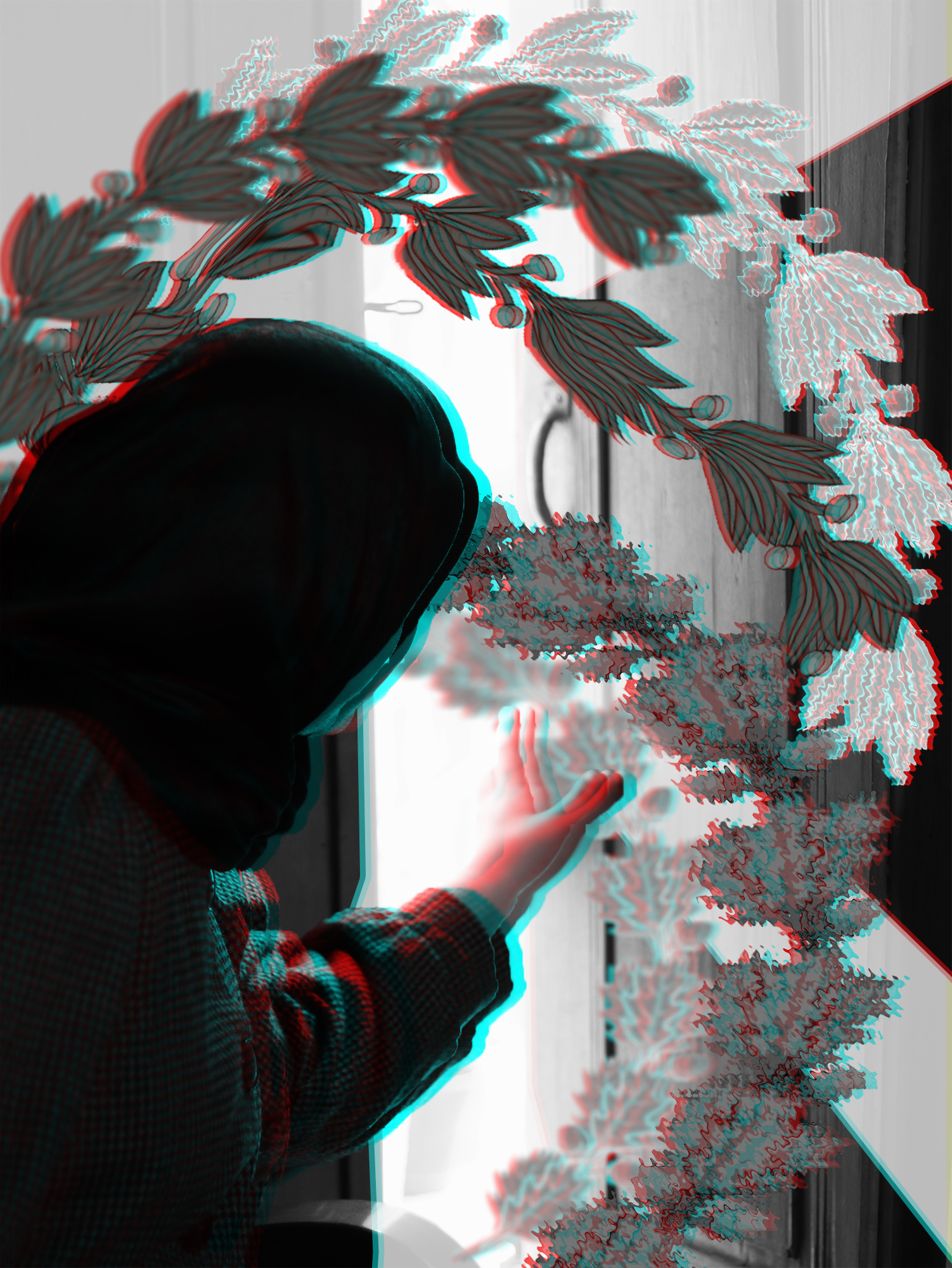
Inspired by the photograph of Sana Shadkami
Against the backdrop of doors from the Qajar era, botanical patterns derived from a coat of arms appear, symbolizing heritage and identity in this piece. The woman gently touches the ajar door, as if she wishes to establish a connection with the past. The penetrating light emphasizes the mystical character of the moment – a meeting of tradition and memories, where history merges with the present.
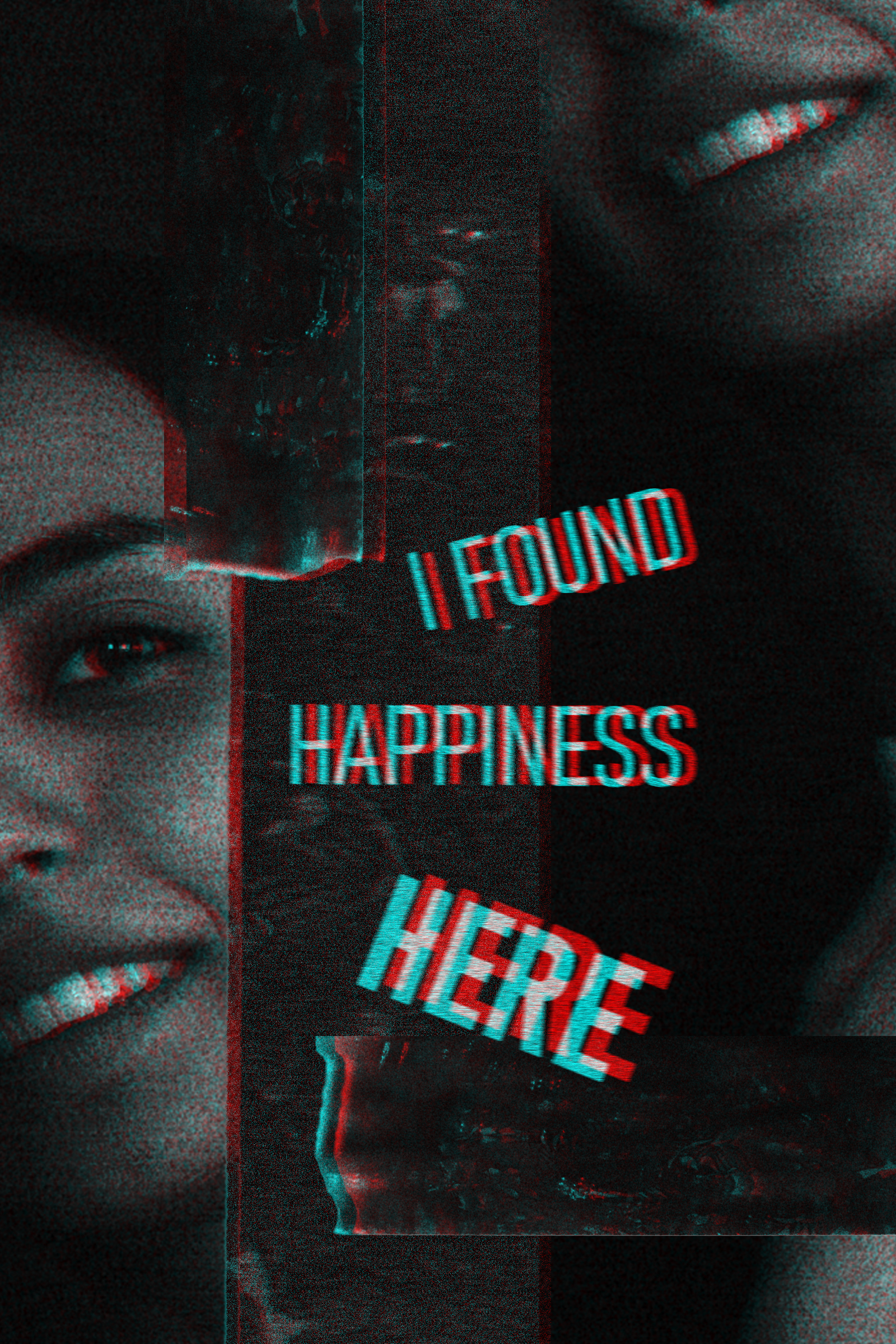
Inspired by the photograph of Negar Heydari
While creating this artwork, I was inspired by Negar Heydari’s text and its message. Like this artist, I wanted to show that there is no need to fear darkness. Although it may seem frightening, it is worth exploring in search of happiness. By overcoming our phobias and the fear of endless darkness, we can discover its positive aspects. The presence of a smile in this piece is significant – it symbolizes hope, joy, and a brighter future.
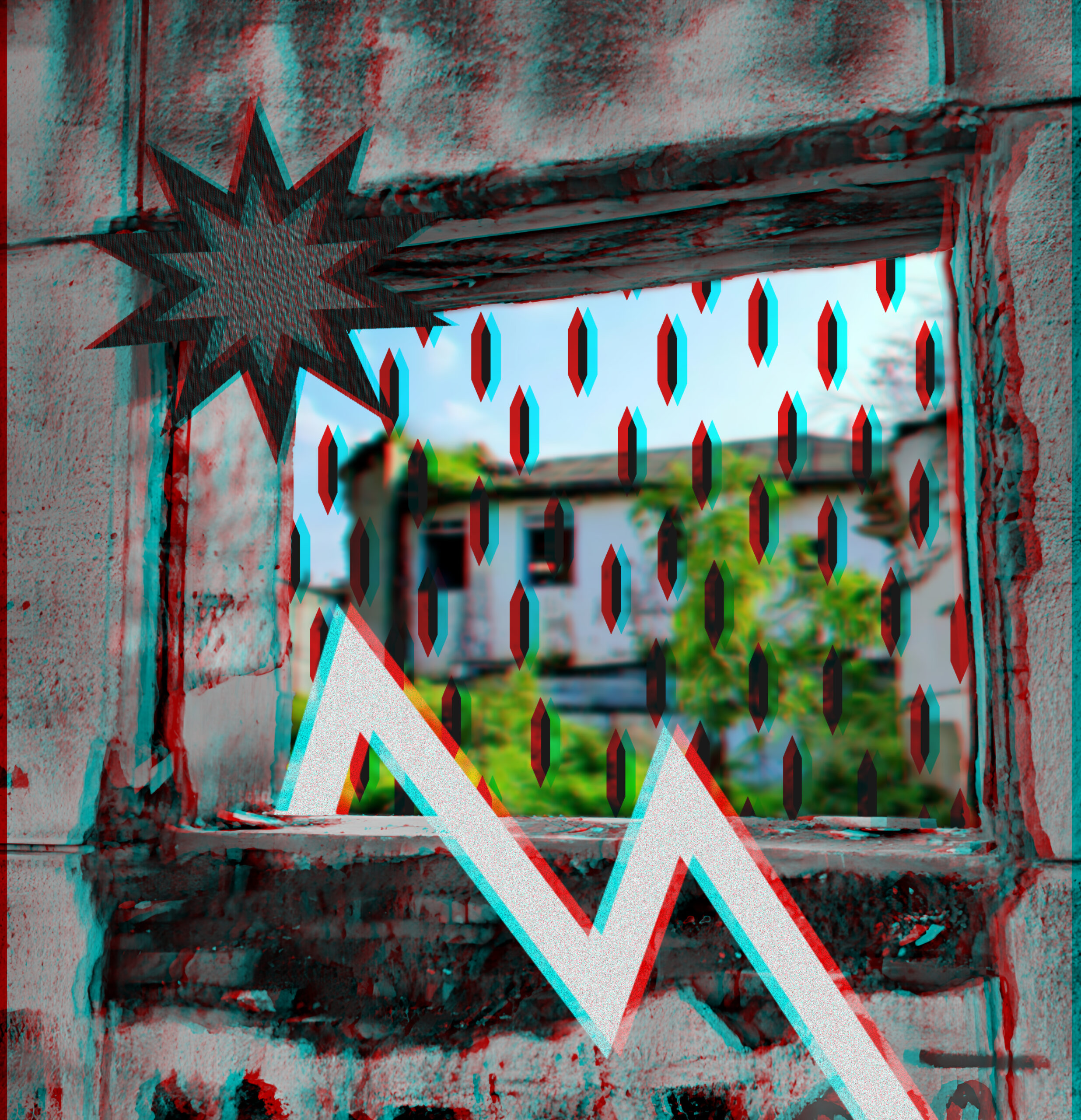
Inspired by the photograph of Pani Panahbar
Unfortunately, the fate of abandoned buildings is often a sad one – they are neglected, damaged, and demolished. A home once filled with warm memories suddenly turns into a ruin. In my artwork, I wanted to highlight the issue of vandalism, which is a global problem. The graphic elements I used do not cause any harm to the building or the environment. Instead of defacing walls, I encourage creating digital visualizations of artwork/graffiti using graphic design software. Let your creativity run wild without damaging property – unless, of course, you have permission.
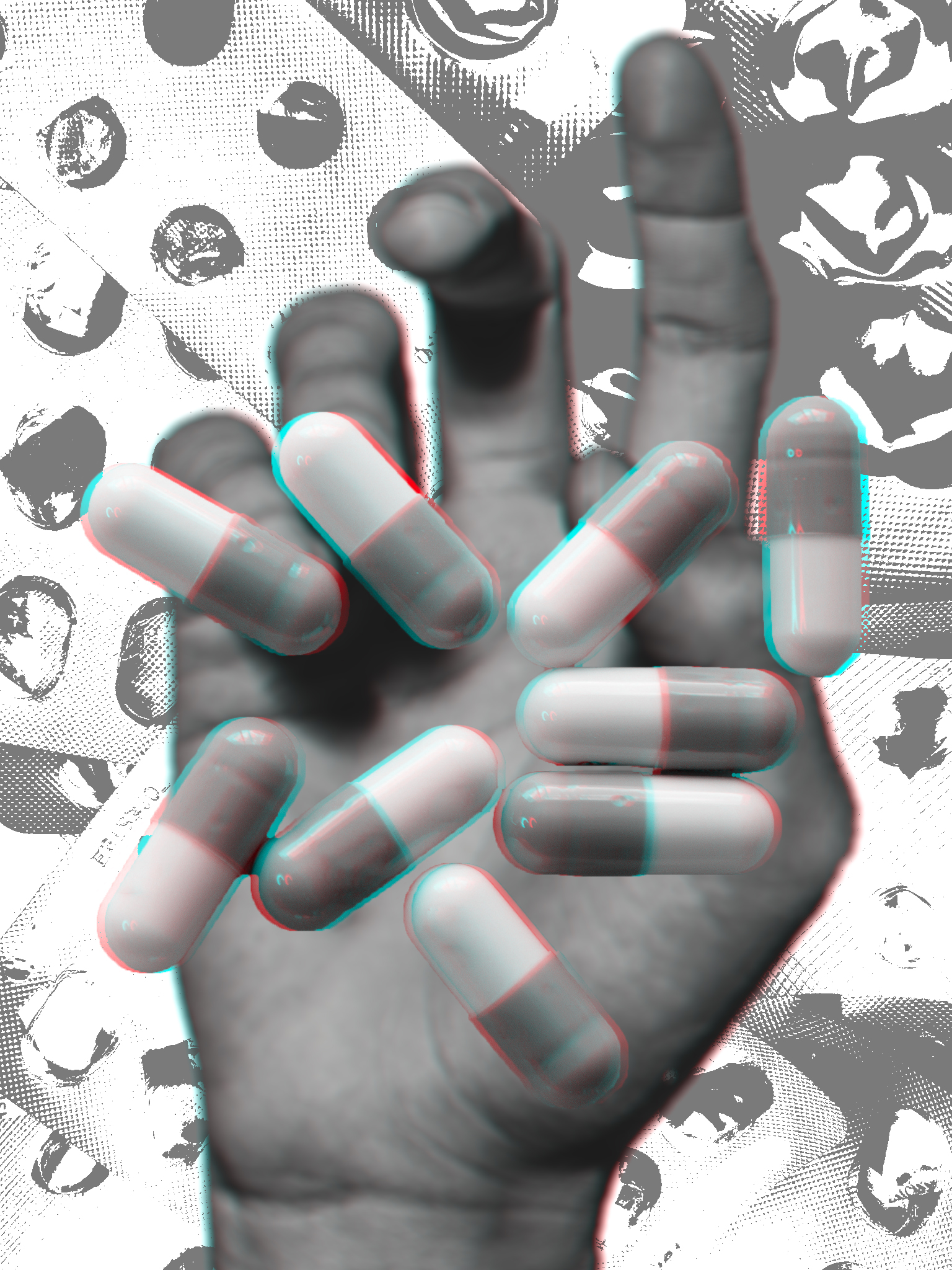
Inspired by the photograph of Fatameh Panbehkar
We live in a world where any ailment can be diagnosed and treated. Many people live in the belief that they are sick, while swallowing all possible pills. Many medications, rather than helping, bombard us with even worse side effects. My work raises the question of whether there is a line between real drug therapy and drug addiction?
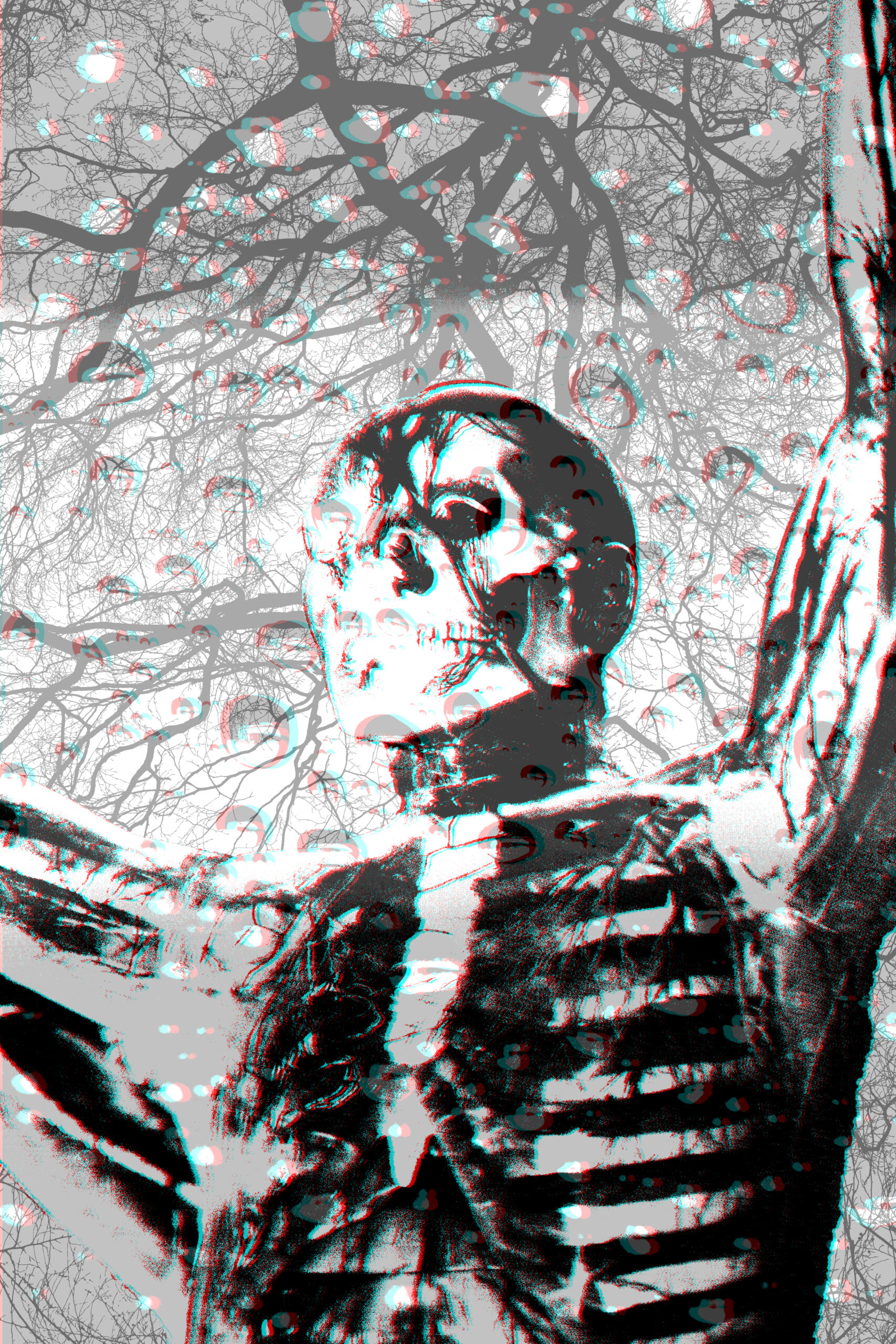
Inspired by the photograph of Saba Babapour
The work depicts tangled roots against the structure of the nervous system, representing the inseparable bonds between nature and human consciousness. The form suggests an act of sacrifice – the roots taken down by the trees show the inseparable bond of being with place. In this way, the composition reflects both the organic dependence of plants on place and the emotional bonds between people and places.
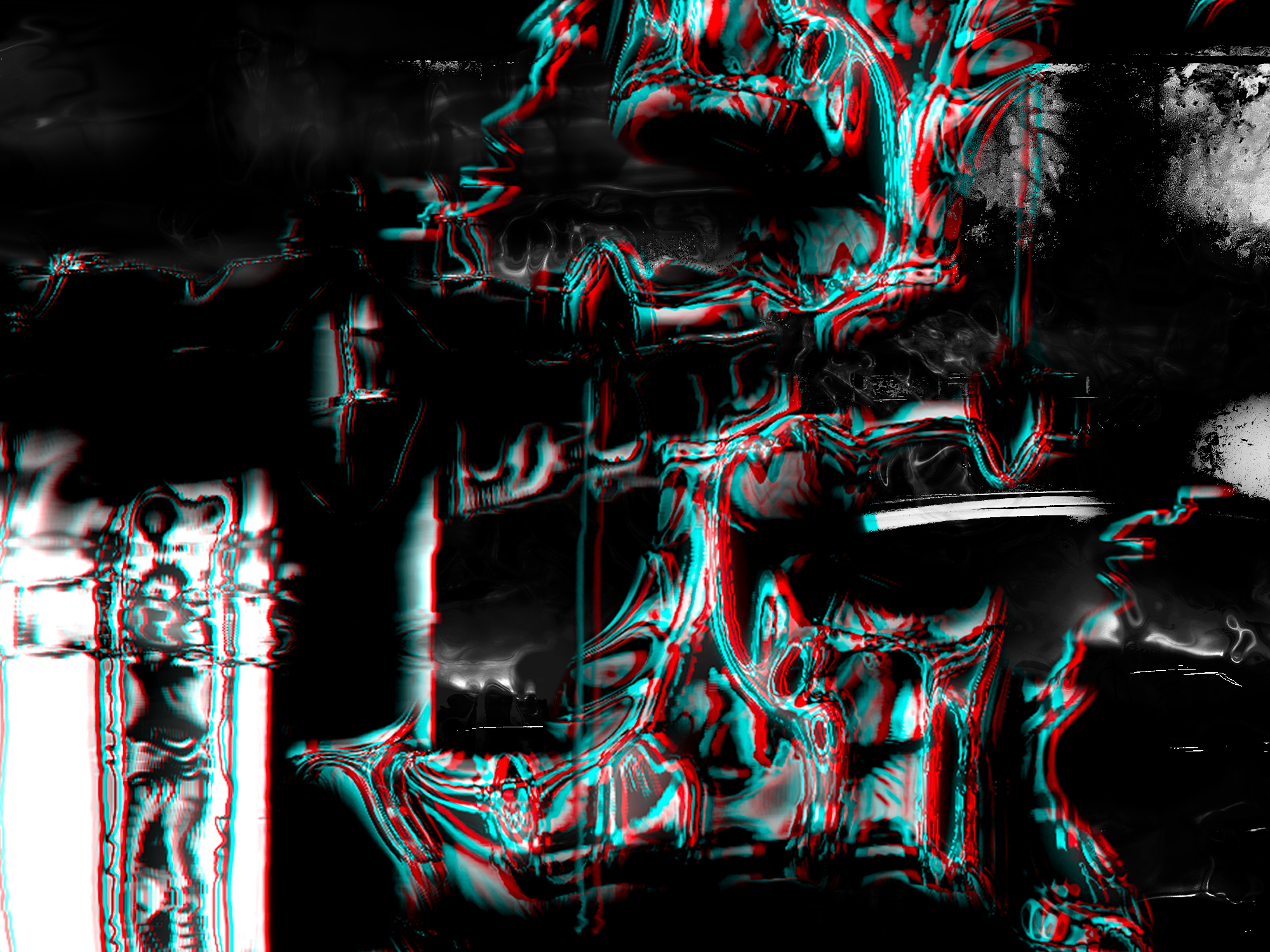
Inspired by the photograph of Mohaddeseh Ahmadi
The artwork was created by digitally processing a photograph by Mohadeseh Ahmadi. I also decided to focus on the principles of dualism by juxtaposing static, cohesive forms with synthetic shapes set in motion.
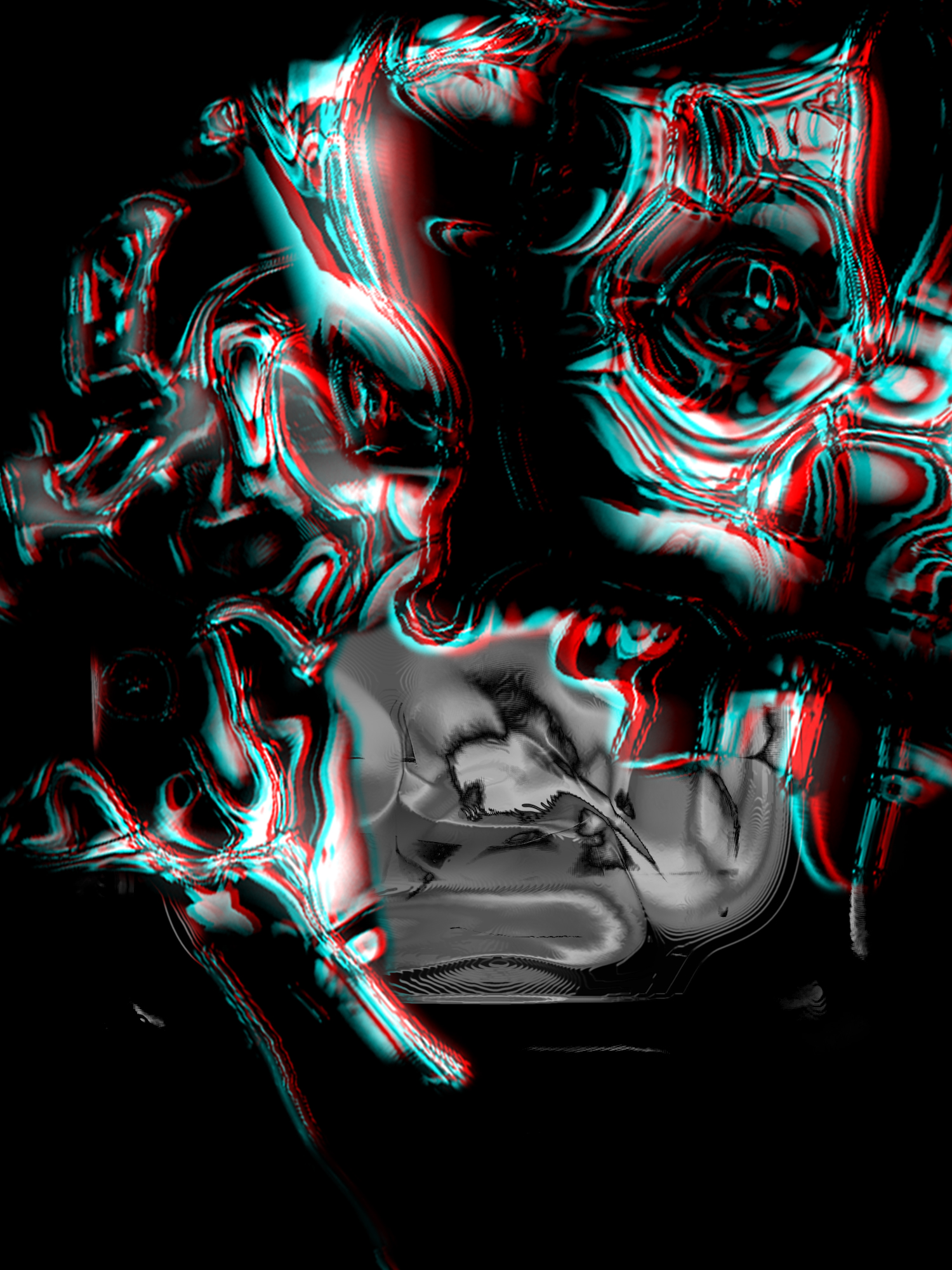
Inspired by the photograph of Zahra Fallahi
Using a photograph by Zahra Fallahi, through used digital graphics, I focused on the theme of what lies on the other side of the window that the protagonist of the book, which inspired the author, so often gazes at, through digital graphics.

Inspired by the photograph of Fatemeh Mohammadi
In my interpretation, I use visual means to refer to the phenomenon of derealization. I deconstruct space and give it an abstract character, combining elements of the real, material world with those that exist only within the mind of a person struggling with this condition. I distort the image, blur it, and rearrange the order, conveying the feeling of chaos slipping out of control.
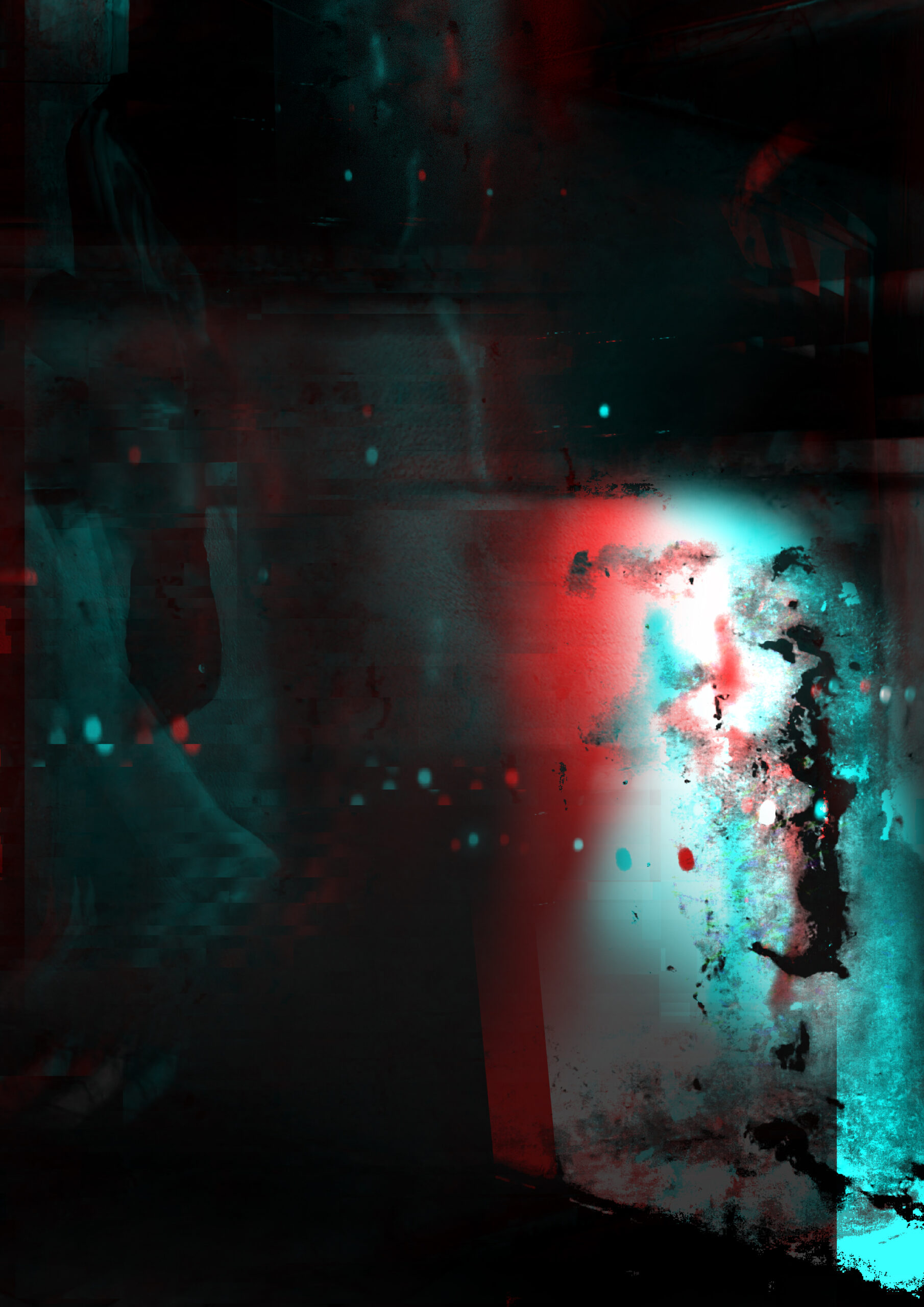
Inspired by the photograph of Ida Ghasemzade
Long, solitary gazing out the window gradually causes shapes and reflections to blur. The boundaries between what is outside and what is inside slowly dissolve. The window ceases to be merely a transparent barrier separating two worlds – it becomes a mirror where memories, thoughts, and elusive impressions intertwine. Time seems to flow differently – it stretches and twists, losing its usual rhythm. In this suspended moment, the present merges with the past, and thoughts begin to drift, losing their point of reference. The window becomes a meeting place for what is visible and what is invisible at first glance – desires, fears, and dreams quietly reflecting on the glass surface.
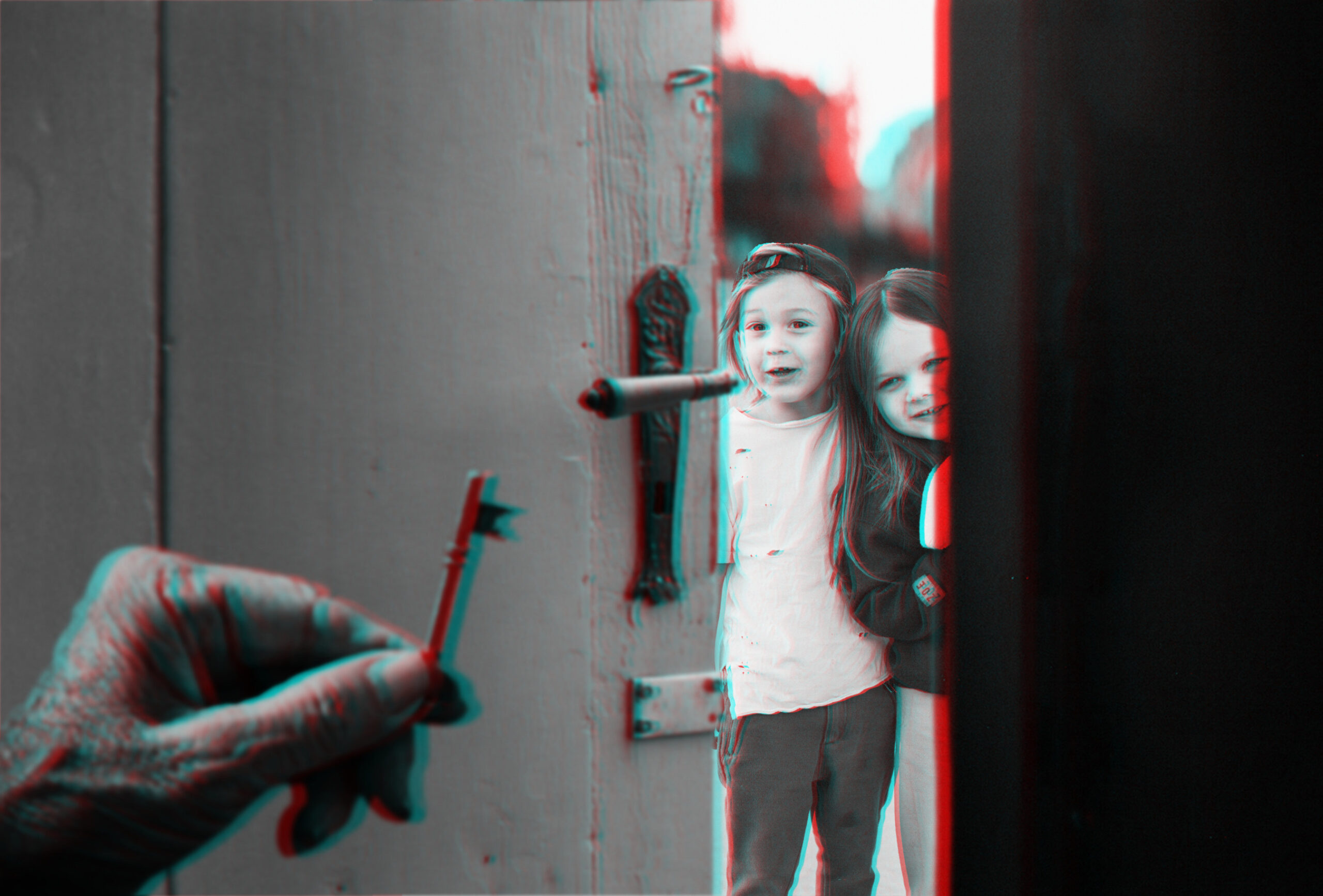
Inspired by the photograph of Sana Shadkami
An old woman opened the door to the past. The key here symbolizes experience and knowledge, as well as a desire for a nostalgic connection with the past. Scenes from the past enter through the ajar door, bringing joy into the life of the old woman.
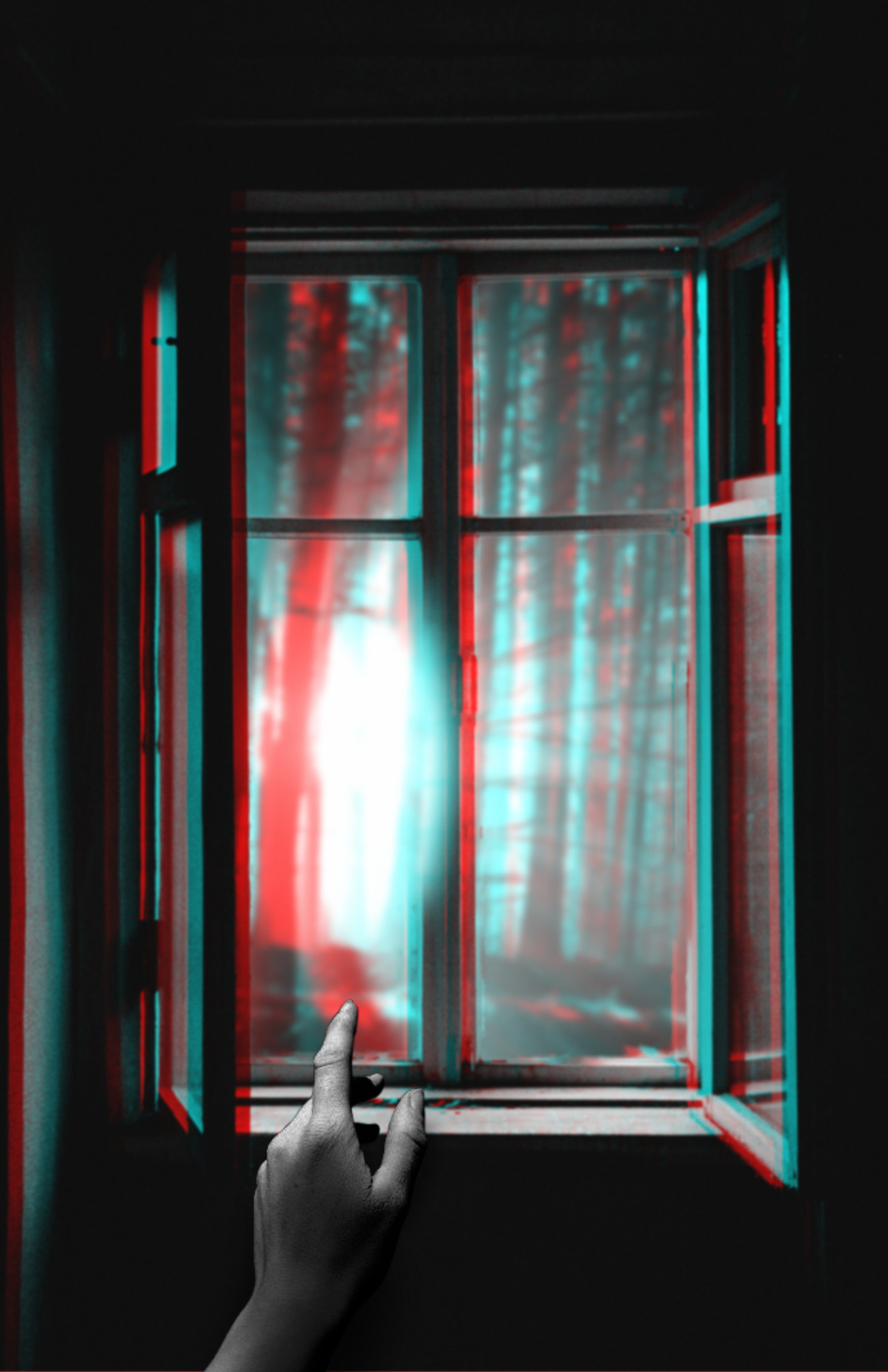
Inspired by the photograph of Zahra Fallahi
The window symbolizes opening up to the world.The sunlight streaming through the window symbolizes hope. The son and mother are deprived of freedom, but they are full of optimism. The mother’s hand points to the light, which is a symbol of joy and freedom.
